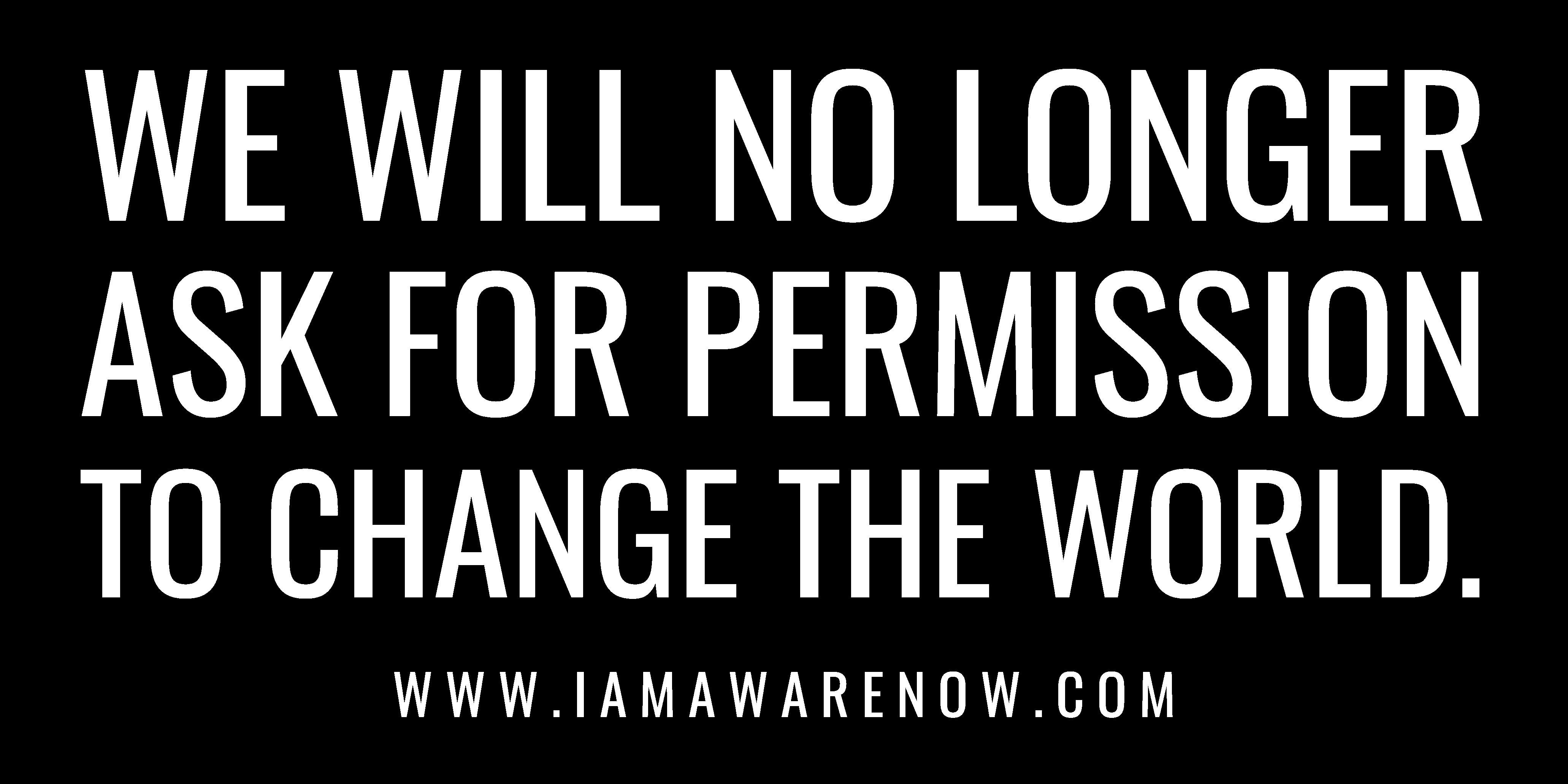AWARENOW
THE WORLD'S OFFICIAL MAGAZINE FOR CAUSES

JARVIS JAY MASTERS














ON THE COVER: JARVIS JAY MASTERS
AwareNow Magazine is a monthly publication produced by AwareNow Media™, a storytelling platform dedicated to creating and sustaining positive social change with content that inspires and informs, while raising awareness for causes one story at a time.
UNSCRIPTED LAYERS
BELLA GLANVILLE
SMILES ARE FREE
JACK MCGUIRE
CONVICTED WITHOUT EVIDENCE
JARVIS JAY MASTERS, TODD BROWN
AALIA LANIUS
THINK
HEARTCHARGED
DEBBIE ABREU, LAURA SHARPE

The arc of the moral universe is long, but it bends toward justice.”

Martin Luther King Jr.


justice: (n.) the unwavering pursuit of truth and accountability, ensuring that every voice is heard, every right is upheld, and every wrong is made right
Justice is no longer just a principle—it’s a battleground. A word meant to uphold fairness has been twisted to serve power, not the people. But justice is not blind when influence outweighs integrity and wealth overrules what’s right.
This edition of AwareNow is not about asking for justice—it’s about reclaiming it. True justice does not serve politics, privilege, or power. It holds the guilty accountable, protects the innocent, and refuses to excuse corruption or violence.
Justice is about people, not just laws. It is about communities rising when systems fail and those who stand against injustice declaring, enough. We will not wait for justice. We will demand it.


ALLIÉ McGUIRE
CEO & Co-Founder of AwareNow Media
Allié McGuire began her career as a performance poet, transitioned into digital storytelling as a wine personality, and later produced the Hollywood Film Festival. Now, as co-founder of AwareNow Media, she uses her platform to elevate voices and champion causes, connecting audiences to stories that inspire change.

JACK McGUIRE
President & Co-Founder of AwareNow Media
Jack McGuire’s career spans the Navy, hospitality, and producing the Hollywood Film Festival. Now, he co-leads AwareNow Media with Allié, focusing on powerful storytelling for worthy causes. His commitment to service fuels AwareNow’s mission to connect and inspire audiences.
The views and opinions expressed in AwareNow are those of the authors and do not necessarily reflect the official Any content provided by our columnists or interviewees is of their opinion and not intended to malign any religion, ethnic group, political group, organization, company, or individual. Stories shared are not intended to vilify anyone or anything. Their intent is to make you think.
* Please note that you may find a spelling or punctuation error here or there, as our Editor-In-Chief has MS and lost vision in her right eye. That said, she still has perfect vision in her left and rocks it as best as she can.





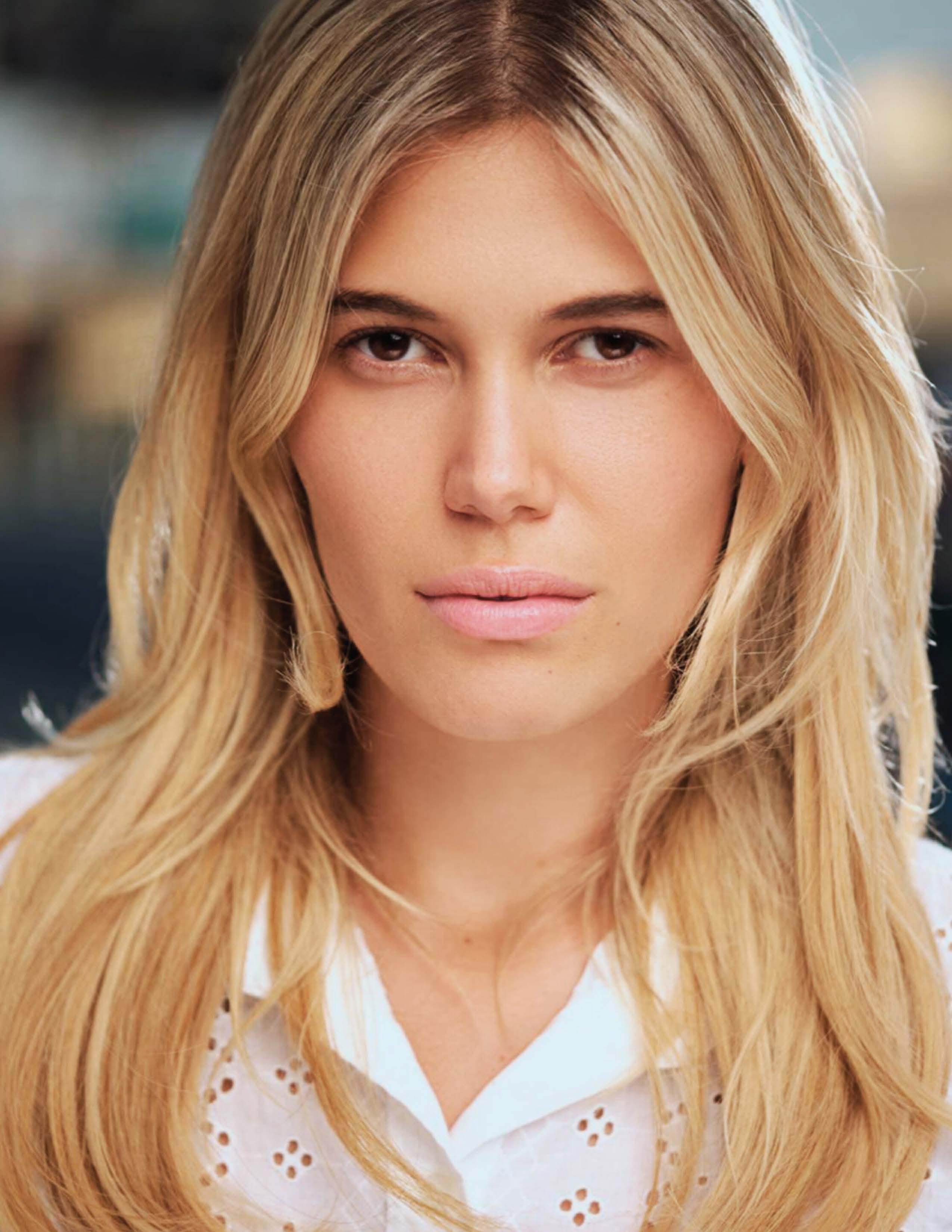

Arabella Glanville is more than the sum of her roles—though they’re impressive, spanning from ‘Mission Impossible 8’ to Netflix’s ‘A Whole Lifetime’. As an award-winning actress, screenwriter, international model, and UN human rights ambassador, she’s constantly shifting between identities, both real and fictional. In this candid conversation, Bella reveals what anchors her, challenges her, and how she’s writing a narrative that’s unapologetically her own.
ALLIÉ: You’ve embodied characters in everything from high-stakes action films to thought-provoking dramas, while also using your real-life voice as a UN ambassador. How do you shift between playing fictional roles and standing in your own truth when the ‘performance’ ends?
BELLA: I love that question because I feel like my answer has changed a lot over the last few years, especially since I went into film. I actually came from theatre, so when I first transitioned to film, I thought, Oh, this is a completely different job. The camera picks up everything—every mannerism, every little detail—so rather than doing what I did on stage, where I had to be big and really embody certain characteristics and movements, I decided to take a different
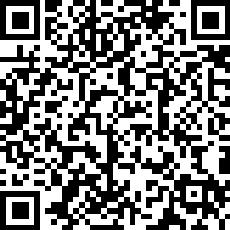
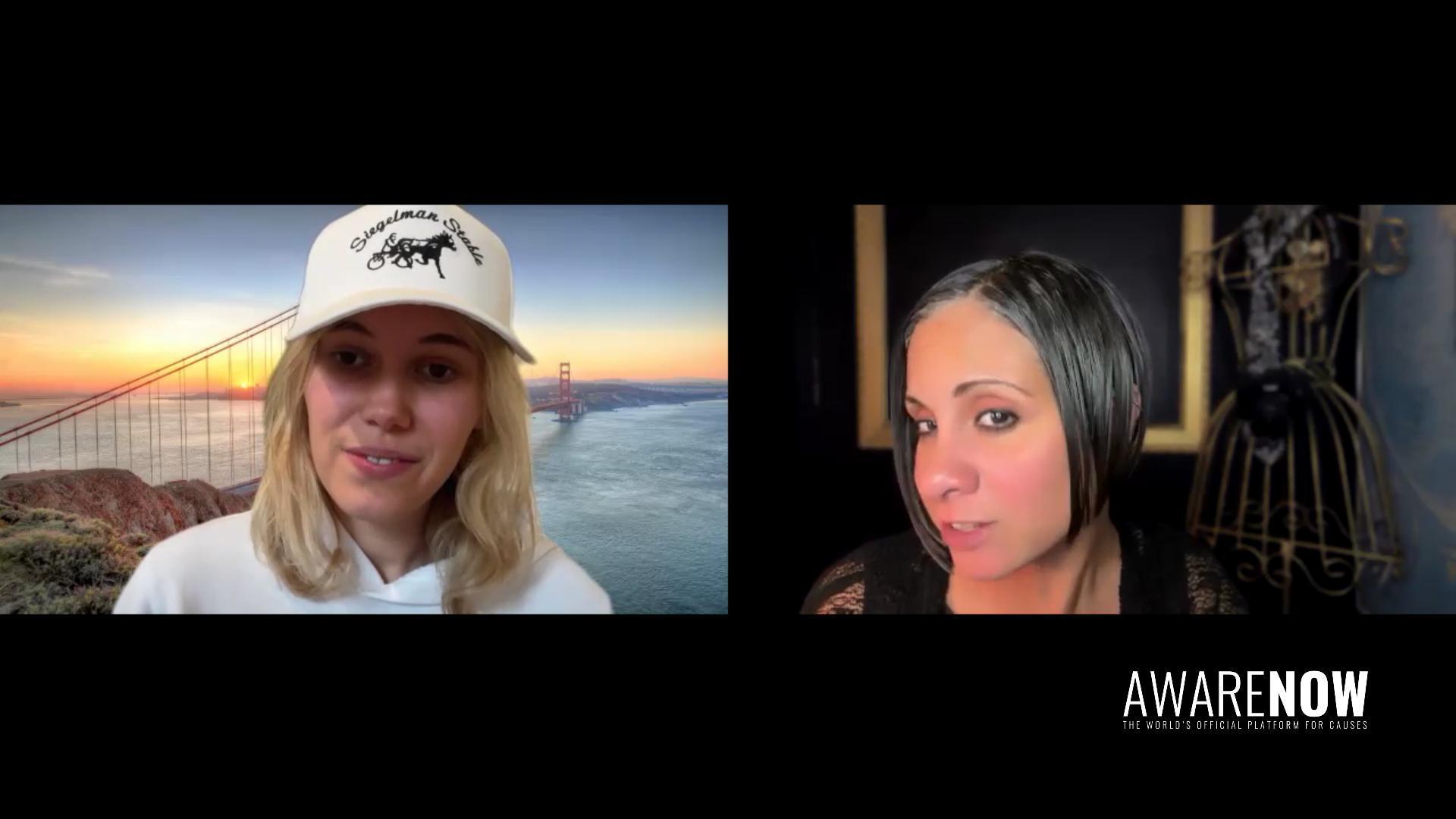

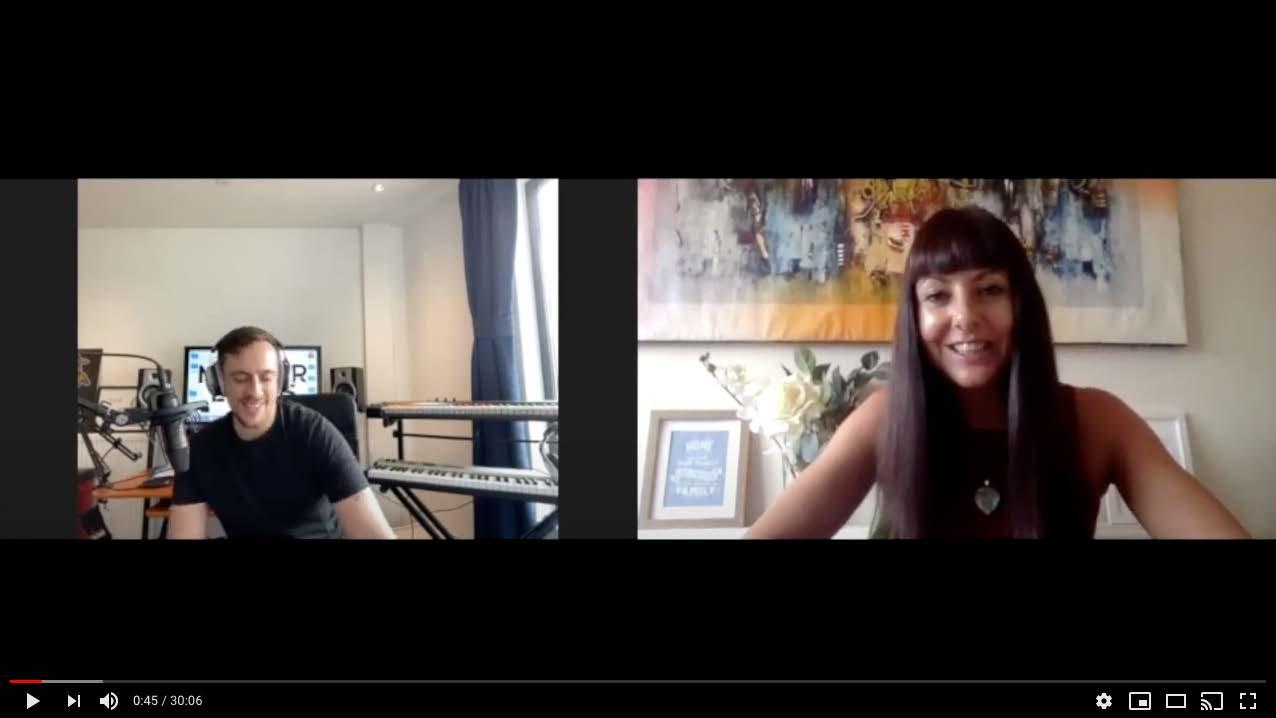
Some of the most insecure girls I’ve ever met are also some of the most beautiful girls I’ve ever met—girls that society would consider ‘perfect’.
BELLA GLANVILLE ACTRESS, SCREENWRITER, INTERNATIONAL MODEL, AND UN HUMAN RIGHTS AMBASSADOR



“I’ve always believed that the only person I should compare myself to is who I was yesterday.”
BELLA: Since the camera captures even the smallest expressions, I thought, I’m going to be a method actor. I’m going to fully embody these characters and live in their mindset. The first time I did that, I played a gothic character with PTSD. To immerse myself in the role, I dressed up as the character and went to goth nightclubs in Camden, London, introducing myself as the character and truly living in that world. It was an intense experience because taking on the traits of someone who has experienced PTSD is a lot to carry. A couple of years later, I played a female psychopath, which really fascinated me because my degree is in psychology. To prepare, I watched countless videos and interviews with female psychopaths, took notes, and even journaled as the character. But when I got to set, I realized something—I don’t need to be Bella and then become the character. When I took on such heavy roles, I found that method acting didn’t serve me the way I thought it would. I know actors like Daniel Day-Lewis swear by it, but for me, the emotional toll wasn’t necessary once I was actually on set. Instead, I discovered that it’s more important to connect with my own truth and draw from my own experiences to understand how a character might feel. Now, I want to be me when they call "action" and still be me when they call "cut," rather than disconnecting and feeling like I have to become someone else entirely.
ALLIÉ: I love that. You. That’s the best thing to be, yeah?
BELLA: Exactly. There’s no one you-er than you. That’s what Dr. Seuss says.
ALLIÉ: One of my favorite authors, I must say. Let’s not talk about TED. In your TEDx talk, The Myth of Perfection, you challenge societal ideals. How has your own relationship with perfection evolved, especially working in industries where image and perception often take center stage?
BELLA: Yeah, I love that question as well. My relationship with perfection has changed and evolved a lot over the years. Before I was an actor, I was a model. And, you know, I still do it—I still model—but I joke that, in model years, I’m 107 now. It was something I did full-time as a teenager, and it was really tough being in this industry at that age. There’s a stereotype that if you’re a model, you represent what society sees as "perfect." But I’ve always said that modeling can either make you or break you. You either develop thick skin so that nothing can hurt you, or you become incredibly insecure. Some of the most insecure girls I’ve ever met are also some of the most beautiful girls I’ve ever met—girls that society would consider “perfect." I actually talked about this in my TED Talk on The Myth of Perfection because I learned from a really young age that perfection isn’t what people think it is. And oddly enough, this realization didn’t even come from modeling—it happened before I became a full-time model. It all comes down to the labels we take on, whether from ourselves or from others. I came up with this way of looking at it: If you take the letter ‘e’ from the end of the word hate and put it at the beginning, it becomes e-hat. So, when someone hands you hate, they’re really handing you an e-hat with a label on it. And it’s up to you whether or not you wear it. The more you put on, the heavier it gets. But at the end of the day, a mirror is just a piece of glass—what you see in it is up to you. The definition of perfection is simply aesthetically pleasing to the eye. It’s not about one speci fic feature or trait. If you Google it, that’s what you’ll find: aesthetically pleasing to the eye. So when someone says, I think you’re perfect, what they’re really saying is, You embody everything I admire and aspire to be. But perfection is a moving target. What I see as perfect might not be what someone else sees as perfect. When I was a teenager, I decided I wasn’t going to wear anyone else’s e-hats. I was going to define my own perfection—because in the end, we all create our own definition of it. So, I told myself, Perfect is Bella. I’ve carried that mindset with me ever since. There’s no one newer than you. There’s no one else I’d rather be. Perfection is so often tied to comparison, and in any industry—especially one as competitive as mine—comparison is the fastest way to lose yourself. I’ve always believed that the only person I should compare myself to is who I was yesterday. The only question I need to ask is, How can I be a better version of her? That’s practical. That’s useful. So yeah, I don’t believe perfection exists.



ALLIÉ: I love how you say that you only compare yourself with yourself. You're not looking outside, you're at yourself. Let's switch gears again. From starring in Mission Impossible 8 to being the face of global brands, you've experienced both cinematic and commercial storytelling. What story are you most passionate about telling in your own life that the world hasn’t seen yet?
BELLA: That’s really interesting because I actually had this conversation with my sister the other day. She said, The problem with you, Bella, is that you leave no mystery to the world. Everyone knows everything about you. You share too much about yourself. Everyone even knows what you had for breakfast on Instagram. And she’s right—I do share a lot. I think I’m a pretty open person. I talk a lot about self-love and self-confidence, but something that’s very new—something I’m just starting to promote more—is actually related to health. This is how I first got involved with the United Nations, and it’s a story that hasn’t really been shared yet. So here’s your exclusive.
A year ago, I was invited to do a presenting job at a retreat in India. I didn’t have much information—I just knew I was going to India to make a documentary. When I arrived, I found out it was an Ayurvedic retreat. I had never heard of Ayurveda before, but it turned out to be a form of traditional medicine practiced in many Eastern cultures. It’s completely different from Western medicine, and I approached it with an open mind. I was especially intrigued because I’m vegan, which is something I strongly believe in and try to promote—though I’m careful about how I do it. I know that diet, like religion, can be deeply personal, so rather than being pushy, I just try to share my truth and facts. But I do believe in veganism, and I think what’s happening to animals in the world is horrific. So when I got to this retreat, I was very open to learning. The treatments and medicines they offered were all based on natural elements—things the earth provides. The simplest way I can explain Ayurveda is this: In the UK, if you’re walking through a forest and you get stung by a stinging nettle, you won’t have to walk far before you find dock leaves. If you rub a dock leaf on the sting, the pain goes away. It’s not a coincidence that nature provides a remedy so close to the problem. I believe the earth has given us an answer for everything—we just need to pay more attention to it.
There’s evidence that turmeric can help prevent Alzheimer’s and cancer. Ashwagandha is a natural anti-stress and anti-anxiety remedy. It’s all-natural. So for three weeks, I followed an Ayurvedic diet at this retreat. I didn’t drink alcohol, and I also went through a process called purgation, which completely cleanses everything inside you. When I left, I looked 10 years younger—so basically, in my 20s, I looked like a teenager again. But more importantly, I met people there whose lives had completely changed. Some said it cured their cancer, heart disease, and chronic pain. I met people who looked like they were in their 20s but had children in their 20s. They had been following this lifestyle for years, and their health reflected it.
This experience completely changed my life, and I’ve been trying to share this story because I believe it aligns with veganism and a plant-based diet. It made me realize that we really don’t have to put toxic things into our bodies. It’s also the reason I stopped drinking—which was really hard for me because, being English, I grew up in a strong drinking culture. But the benefits were undeniable. My skin cleared up, I stopped getting sick, I lost a significant amount of weight, and, on a practical level, I saved a lot of money.
Now, I’m not saying it’s easy to adopt an Ayurvedic diet into everyday life, but even incorporating parts of it can make a big difference. And for those unfamiliar with it, Ayurveda isn’t some obscure, complicated diet. At its core, it just means cutting down on gluten, avoiding processed foods, and eating more plant-based meals. If you’re not vegan, it includes things like ghee—foods that are nourishing for your body and system. I haven’t really shared this story publicly yet because it was supposed to come out in the documentary, but I think it’s important.
ALLIÉ: It is important. With regard to importance as it pertains to humanity, you are a human rights ambassador in the film industry. How do you reconcile the glamour of Hollywood with the often harsh realities of global issues you advocate for?
BELLA: It’s really hard. It’s really hard because, even with what I was just talking about, so many people roll their eyes within the first 10 seconds of me mentioning anything that isn’t Western or that challenges what they’ve been brought up to believe. Especially when I say I’m vegan—people immediately want to debate me. The only debates I’ve ever had about veganism have been because other people started them. I never bring it up. I never try to debate anyone.



“I think it’s difficult to have a voice when you’re passionate about any form of activism. It all comes down to fully believing and standing in your truth.”
BELLA: (continued) But I actually have a pretty good response when people do try to argue with me about it. I shut it down immediately. I just say, Oh, I only do it for attention—but hey, it’s working! That usually ends the conversation right there.
I think it’s difficult to have a voice when you’re passionate about any form of activism. It all comes down to fully believing and standing in your truth. I’ve always been a big believer that actions speak louder than words. I could stand on a rooftop and scream—or, better yet, climb a mountain and shout—about how life-changing this is, how Ayurveda is so important, and how there’s actual evidence that it prevents disease and cancer. But the best way to make people understand is to show them.
It’s about presenting the studies that have been done. It’s about saying, Hey, look—I stopped drinking, and this is what it’s done for me. I changed my diet, and here are the benefits. That’s what I try to do, because, at the end of the day, showing is always more powerful than telling.
I also think it’s difficult in Western culture because I know that the Indian government actually approached Western medicine and said, Let’s work together. We can collaborate and save lives. And this might be a controversial thing to say, but apparently—and these aren’t my words, just what I’ve heard—the response from Western governments wasn’t positive. Why? Because it wouldn’t make money. You can call it a conspiracy theory, but there’s a lot of evidence for it. At the end of the day, all I can do is say, I know my truth, and I’m going to share it with you. Take it or leave it.
ALLIÉ: You've spoken about embracing uncertainty. In moments when doubt feels overwhelming, what anchors you—whether it’s a practice, a thought, or a person?
BELLA: I have a really specific answer for this—immediately. I used to talk about this in one of my speeches.
I used to have a deep need for certainty. It was almost obsessive—I couldn’t handle the fear of the unknown or any kind of uncertainty. I think a lot of that ties into what many people call anxiety. I don’t particularly like taking on labels, but that’s one I’ve been given in the past. Anxiety often stems from a fear of the unknown, a fear of uncertainty, where your mind starts flooding with thoughts.
As you said, it’s about anchoring yourself in the present moment. In NLP (Neuro-Linguistic Programming), they teach something called primary questions. Your primary question is essentially the driving force behind everything you do. The best part? You can consciously decide what your primary question is the moment you become aware of what it currently is.
Exclusive Interview with Bella Glanville https://awarenow.us/podcast/unscripted-layers



BELLA: (continued) A lot of primary questions actually hold us back. They’re things like, How can I make my mom proud?—which, at first, might not sound bad, but it places you on a pedestal where everything you do is about impressing someone who probably already loves you no matter what. Another common one is, How can I be good enough?—which is rooted in self-doubt. So, I changed mine. To anchor myself in the present, I made my primary question: How can I appreciate this moment right now?
Because when you ask yourself that, your focus immediately shifts to now. You stop thinking about the past. You stop worrying about the future—about what might happen, what did happen, or what should have happened. Instead, you zero in on what’s happening right now.
So, how can I appreciate this moment right now? Well, I’m talking to you, having this amazing interview. I’m in L.A. —my dream place. I’m warm, and I’m grateful for that because it’s raining outside. I could go on and on. And the more I think about it, I can actually feel myself relaxing, sinking into the moment.
And the best part is, you don’t even have to say it out loud. I’ve been at a dinner table before, feeling overwhelmed and anxious, and I’ve silently asked myself, How can I appreciate this moment right now? Then I start listing things in my head: I’m surrounded by my family. I love my family. There’s food on the table. I love this food. Chocolate is the best. And suddenly, the shift happens. Because where focus goes, energy flows. The more you direct your thoughts toward gratitude, the more that becomes all you can think about.
So, the simple answer to that question? Just ask yourself: How can I appreciate this moment right now? That’s it. ∎

Find Bella on Instagram: @bellaglanville


JACK MCGUIRE CO-FOUNDER OF AWARENOW MEDIA


BY
JACK MCGUIRE
Just be a good f*cking human.
If someone falls, You pick them up.
If someone doesn't have, If you do, then give it.
If someone needs a hug, Guess what? Give one.
Smiles are free while you're at it.
Love is a language we can all understand. I will not stand for hate taking its place; We are all one human race.


DR. TODD BROWN FOUNDER OF THE INSPIRE PROJECT & CO-FOUNDER OF OPERATION OUTBREAK
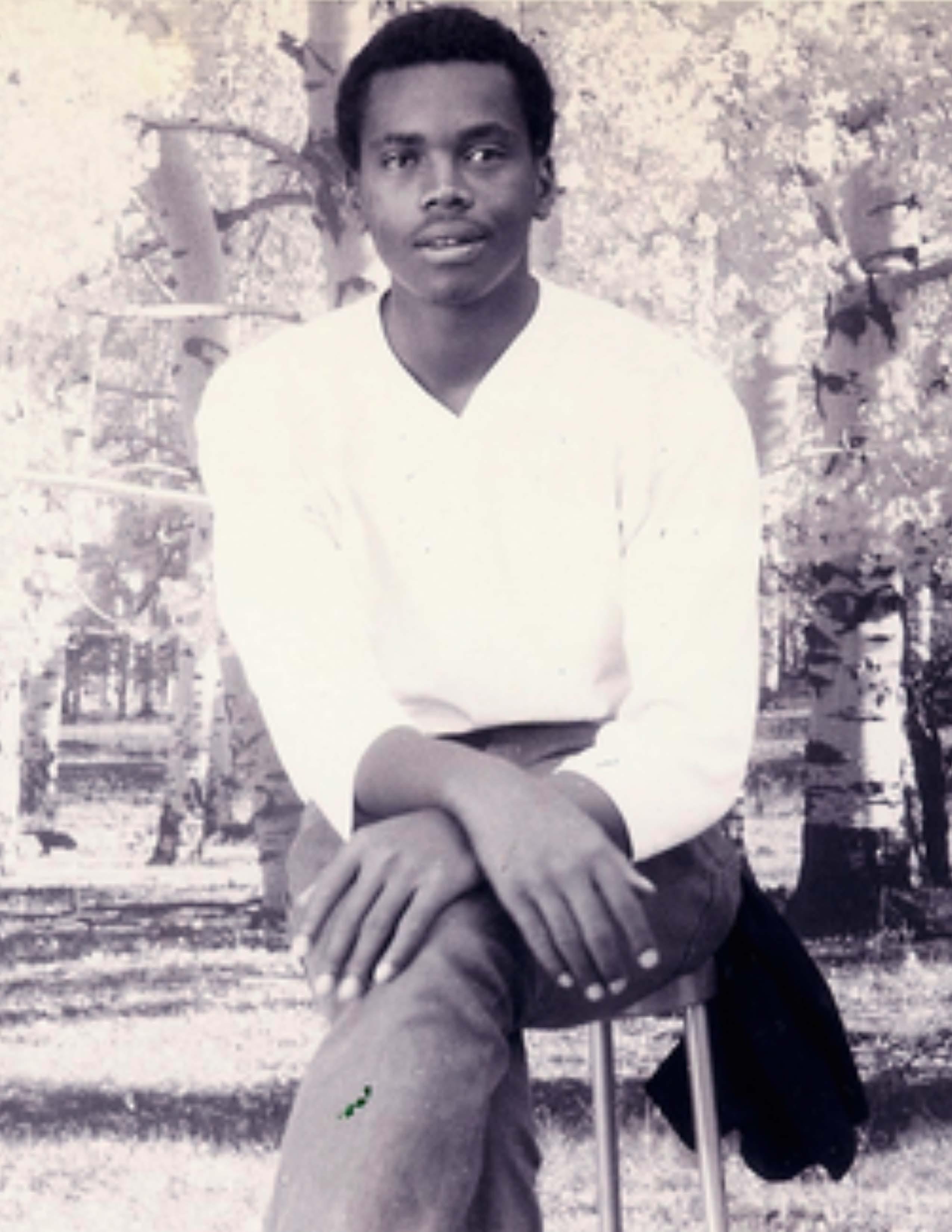


In our daily lives, a single word’s power often goes unnoticed. Yet, when the word ‘guilty’ strikes, it shatters the hourglass of our lives, and the ripple effect reaches everyone around us. That specific combination of five letters in that particular order brands us for an eternity. Now imagine being labeled ‘guilty’ for a crime you didn’t commit, helpless to alter the impact. In Sierra Conservation Center, a state prison in Tuolumne County, a man sits after being transferred from San Quentin, waiting for justice that continues to elude him. Fair warning: this is the tragic story of a man who has endured unimaginable suffering. His life is a heartbreaking tale of intense injustice, relentless hope, and pursuit of freedom that continues to span decades. Yet, against all odds, he continues to find light in the darkest corners of his life with his immovable spirit.
Jarvis Jay Masters was born in Long Beach, California, on February 24, 1962. He stepped into a world of instability and violence. His formative years were a chaotic flurry of neglect and abuse. As a child, he and his siblings were forced to hide beneath a bed to escape death as they watched his father beat his mother within an inch of her life. His house was roach-infested, lacked electricity, and a non-stop revolving door of people with an addiction. His mother




TODD
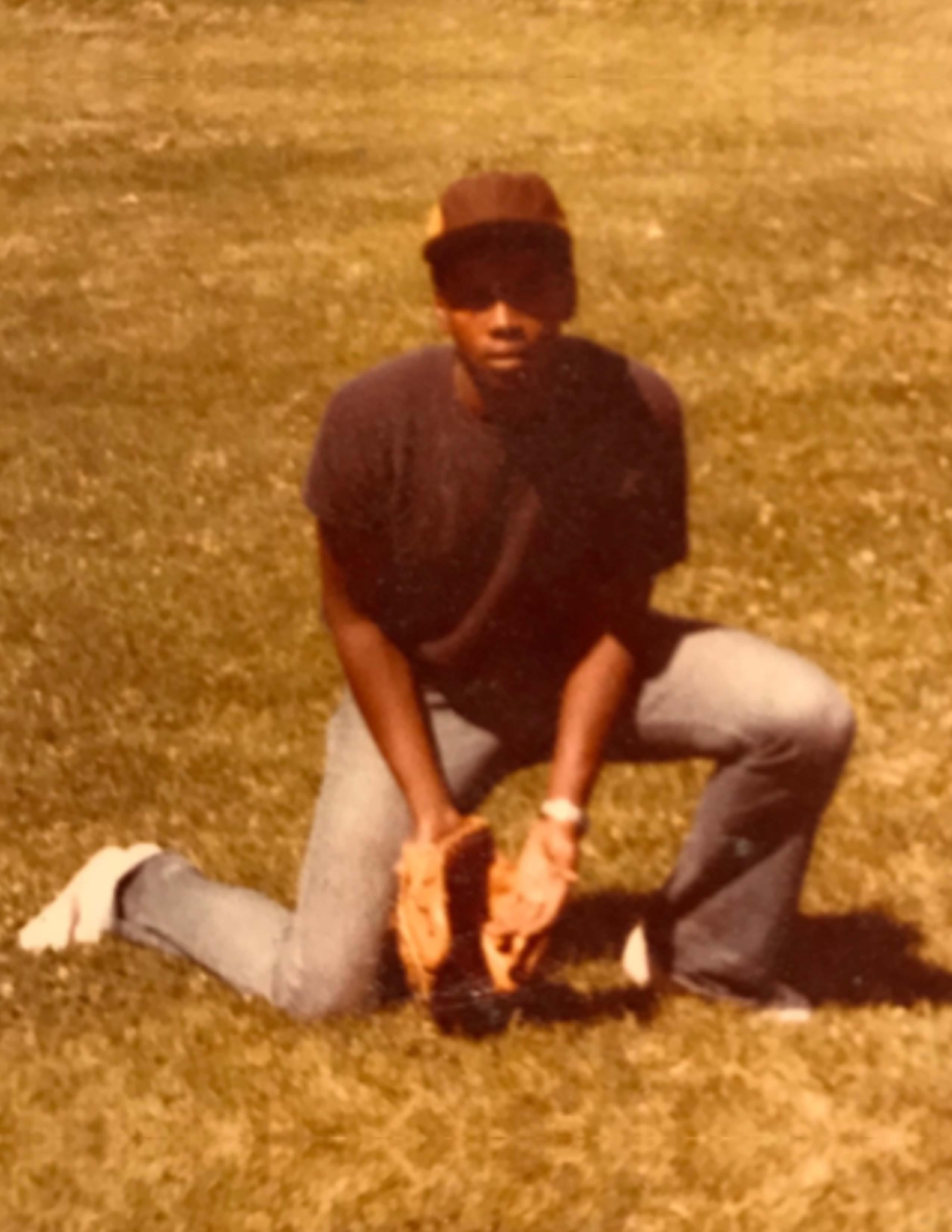


“San Quentin’s death row is a place of isolation and relentless despair. For Jarvis, the new reality of his life was intensified by the knowledge of his innocence.”
playing on swing sets, and coloring pictures with friends, Jarvis was at home stealing change from random addicts, slumped over on the toilet, and drooling in a semi-conscious drug stupor. Eventually, Jarvis and his siblings were thrust into the foster care system. It was an all too familiar tale. A journey that would see them bounce from one home to another, with each stop becoming a new chapter in a book of trauma and loss.
In foster care, Jarvis’ experiences were not unusual, especially for the time. Initially, there was a glimmer of hope and love among his first family members, but that quickly changed as he was shuffled to another home. In his new surroundings, it became evident that he was engulfed in the harsh reality of an ill-equipped system that failed to nurture or protect him. His homes were more interested in the financial stipend for fostering a child than providing a safe and loving environment. He was constantly abused, both physically and emotionally. The system improved slightly as Jarvis became a teenager, again tantalizing him with acceptance and love. But, again, the darkness extinguished the glimmer of warm light as he became the product of his environment. Just as he appeared to be on the path of righteousness, it began to crumble as physical and verbal abuse returned in new forms. Soon, as a means of survival, he turned to petty crime and an unwise attempt to assert control over his tumultuous life.
At 19, Jarvis found himself trapped in the all too familiar life of crime that resulted in a botched armed robbery, which a family member coerced him to commit. Because of this, his journey took a dire turn. Jarvis was sentenced to one of the most notorious prisons in the United States, San Quentin. The violent and harsh conditions of prison life mirrored the turmoil that characterized Jarvis's late teenage years. Within its walls, survival became an everyday struggle, and Jarvis, like many others, did what he could to navigate the treacherous waters of prison life. He felt he had finally hit rock bottom, but unfortunately, he was wrong.
Devastation occurred in 1985. The bleak narrative of Jarvis Jay Masters trailed into a living nightmare. That year, Sergeant Hal Burchfield, a correctional officer at San Quentin, was brutally stabbed and murdered. The crime sent shockwaves through the prison and beyond, igniting a search for those responsible. Jarvis was implicated and accused of having made the weapon used in the attack despite there being no direct evidence linking him to the crime.
The prosecution’s case was rooted in other inmates’ testimonies. Many had ulterior motives for cooperating with the authorities. Their testimonies were riddled with inconsistencies. Some later recanted, admitting they had lied in exchange for leniency in their own cases. At best, the case against Jarvis bordered on the absurd, and at worst, it was a quick hit-and-run, allowing the prosecution to wash its hands of him. Despite the inconsistencies, lack of physical evidence, and more, Jarvis Jay Masters was convicted and sentenced to death in 1990, a verdict that was blatantly influenced by systemic biases and a flawed judicial process.
San Quentin's death row is a place of isolation and relentless despair. For Jarvis, the new reality of his life was intensified by the knowledge of his innocence. Each sunrise and sunset behind bars were a cruel reminder of the life stolen from him, and every second of confinement overflowed with what his life could have been filled with possibilities and redemption. Instead, he was confined to a four-by-nine-foot cell, allowed to see daylight about


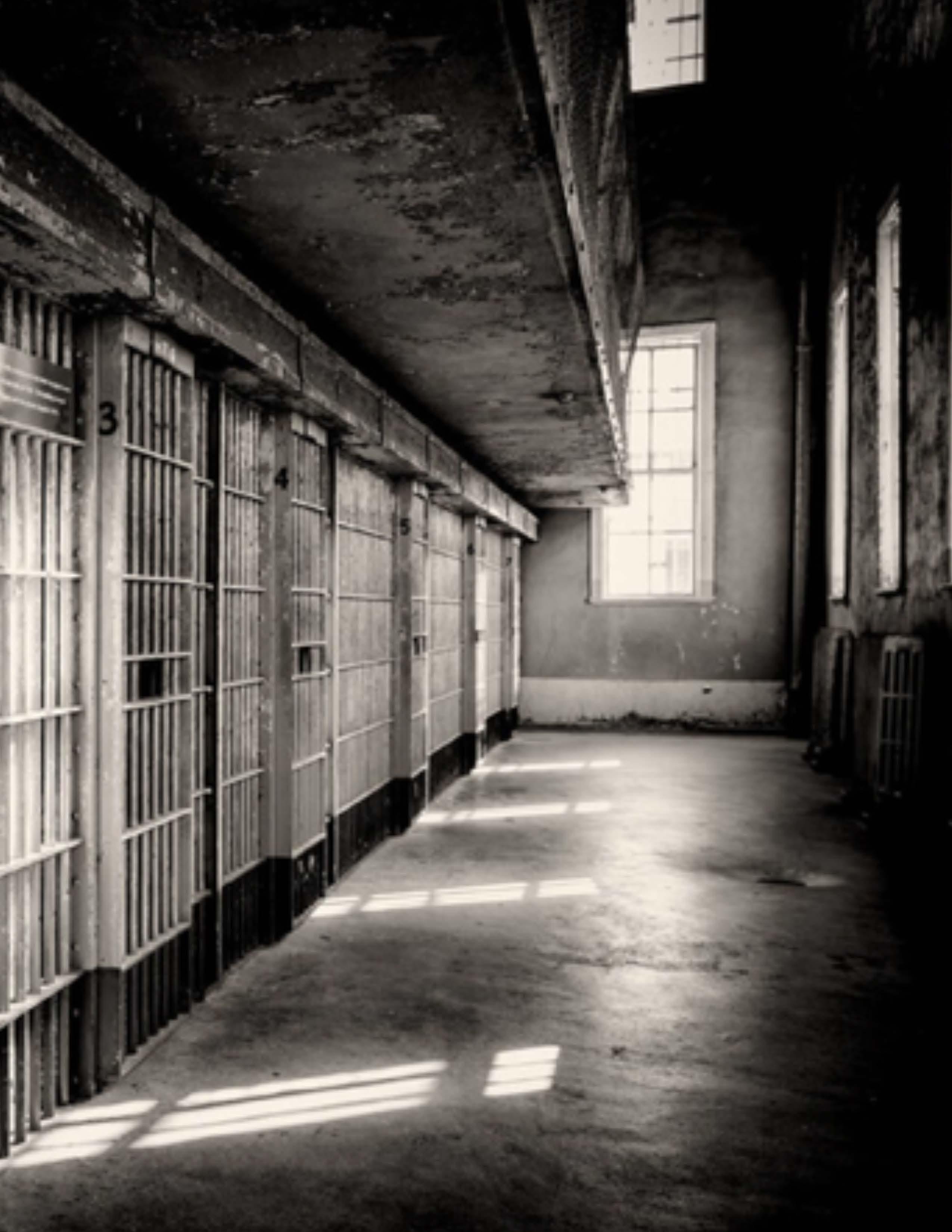

DR. TODD BROWN FOUNDER OF THE INSPIRE PROJECT & CO-FOUNDER OF OPERATION OUTBREAK
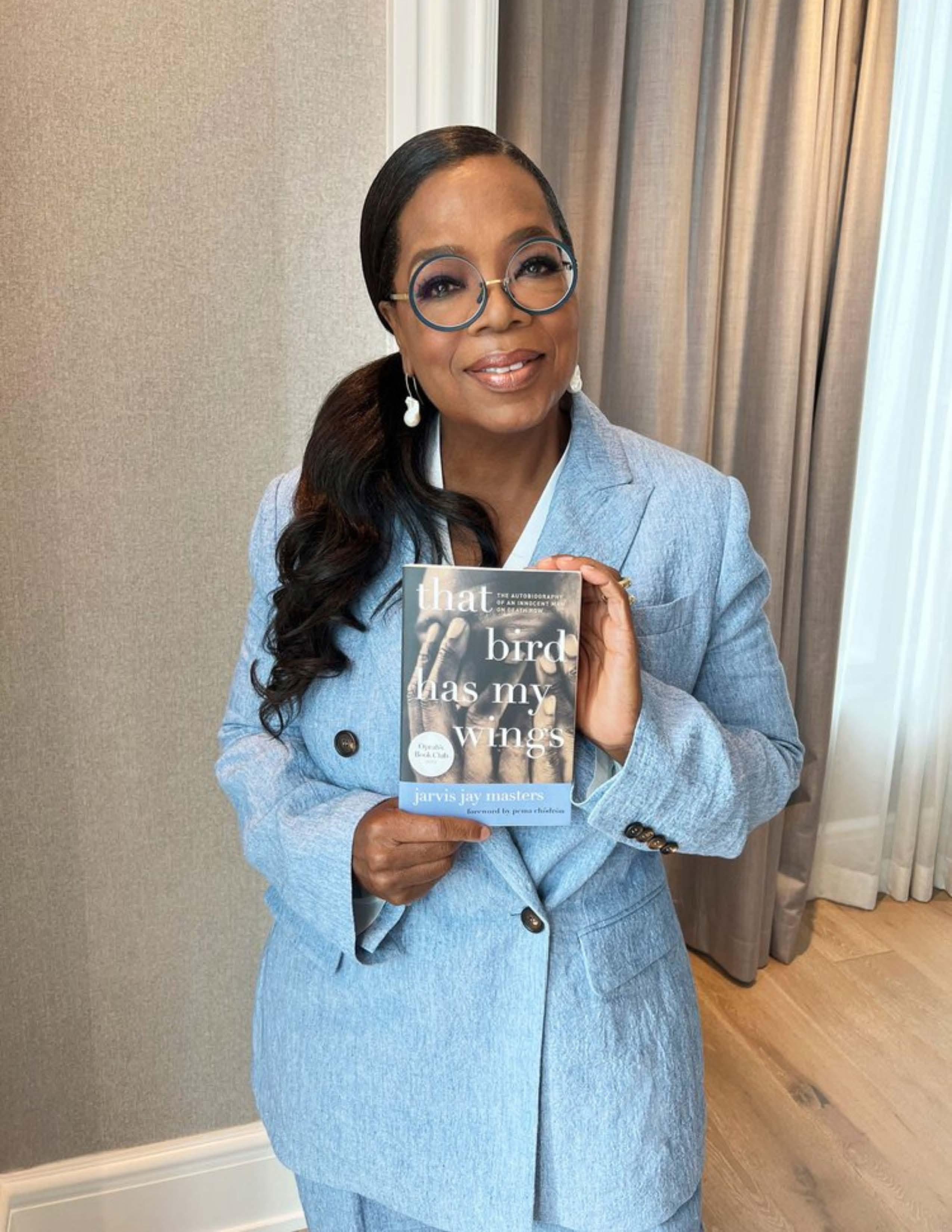


“Jarvis began to transform his physically confining cell into a sanctuary where he could explore the depths of his mind and spirit.”
an hour per day, and his future was determined by a system that had failed him. It was a system that took icecold stock of testimonials by motivated witnesses that then, inexplicably, turned its back on the same witness testimony as they recanted because they were now deemed ‘unreliable.’
Yet, amidst the desolation, a glimmer of hope began to shine. Jarvis discovered Buddhism, a philosophy that gave him inner peace and understanding. He began to transform his suffering into a journey of self-discovery and growth through meditation and mindfulness. Jarvis began to transform his physically confining cell into a sanctuary where he could explore the depths of his mind and spirit. In his newfound journey, he began to write. Jarvis began channeling his pain, reflections, and insights a single letter at a time. The letters formed words and sentences, blooming into a powerful collection of pages. His writings, published in books such as "Finding Freedom: Writings from Death Row" and "That Bird Has My Wings: The Autobiography of an Innocent Man on Death Row," continue to resonate with readers worldwide. By using his words, Jarvis sheds light on his humanity, often obscured by prison bars, and highlights the injustices within the criminal justice system.
His writings became a beacon of hope and a call to action for many who read them. His recorded thoughts exposed the stark realities faced by incarcerated individuals, underscoring the urgent need for reform. More so, even in the direst circumstances, these pages showcased the indomitable human spirit, the capacity for transformation, and the power of hope. Jarvis Jay Masters' case has not gone unnoticed. Over the years, it has attracted the attention of legal experts, human rights organizations, and prominent figures such as Oprah Winfrey, who added “That Bird Has My Wings” to her book club. Individuals and groups continue to rally for Jarvis’ release. Each has argued his conviction resulted from a deeply flawed judicial process marked by inadequate legal representation and unreliable testimony.
In 2005, a considerable development occurred. Due to new evidence, the California Supreme Court ordered an evidentiary hearing that could have potentially exonerated Jarvis. The hearing exposed more discrepancies in the prosecution's case and drew attention to the forceful tactics used to get witness testimonies. After three decades on death row, his appeal was denied. Jarvis still sits peacefully in his cell. His life, once again running on the ebb and flow of hope, his fate still hanging in the balance, waits for the agonizingly slow wheels of justice to recognize and overturn its life-altering mistakes.
Jarvis Jay Masters’ story is more than just a legal battle. It’s a deep human tragedy. For Jarvis, every single hour spent behind bars is another one of time’s grain of sand that represents something stolen from the life he could have lived. Throughout the months and years of his incarceration, he has lost countless friends and family members, including his mother and siblings. The emotional toll of isolation on death row only compounds the weight of loss, which cannot begin to be measured.
Jarvis's story is a testament to the impact of systemic injustice on more than just the individual. It drowns families and communities in darkness. At times, his loved ones climbed the mountain of uncertainty, bristled with the summit of hope, only to then have it all erased by years of grief and pain. All their lives were forever altered by a foster system that failed to deliver love and stability, only to be then smothered by an unyielding, mistake-filled justice system. Each visit to San Quentin, each letter exchanged, is a reminder of the life that could have been, the moments of joy and togetherness that were stolen away from a man who has paid his debt to society multiple times over.
DR. TODD BROWN FOUNDER OF THE INSPIRE PROJECT & CO-FOUNDER OF OPERATION OUTBREAK
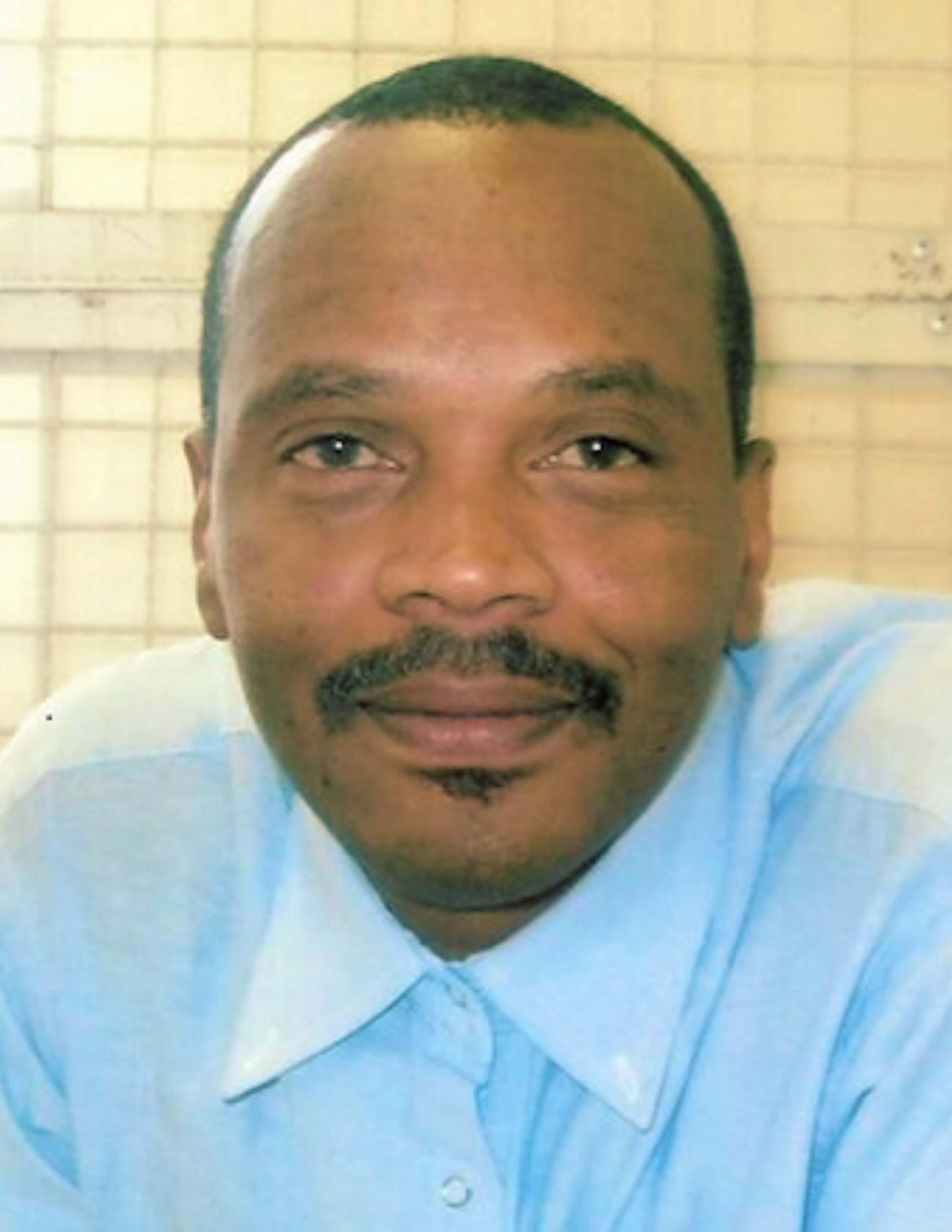

AwareNow Podcast CONVICTED WITHOUT EVIDENCE
Feature Story by Dr. Todd Brown
https://awarenow.us/podcast/convicted-without-evidence



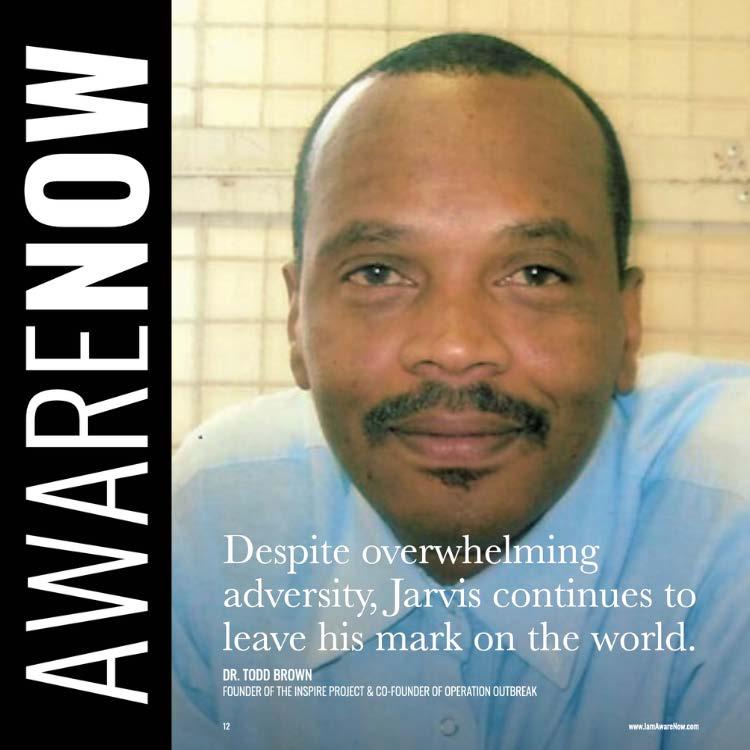

Despite overwhelming adversity, Jarvis continues to leave his mark on the world. As the face of profound injustice stares at him, his resilience is a powerful reminder of the human capacity for endurance and transformation. Jarvis’ writings continue to inspire us to question the justice system’s blindness to its own flaws and its lack of morality. Not just those affected but all of us must advocate for a more just and compassionate society. Jarvis's life continues to be a rallying point for reform, highlighting the urgent need for systemic changes to prevent further miscarriages of justice. While his supporters continue to campaign for his dismissal, there is a growing recognition of the need to reevaluate his case and others considering the substantial evidence of his innocence.
His journey is far from over as the fight for freedom continues. Jarvis’ story is an enduring reminder that the light of truth must illuminate the darkest corners. He inspires everyone to work towards a world where injustice is no longer possible. Each human being must be permitted to live a life of dignity. Jarvis is a beacon that guides us towards a more compassionate future, one where the pain and suffering he and others continue to endure are not in vain but catalyze meaningful change. The story of Jarvis Jay Masters is an immense narrative that underscores the profound call to action for all of us to confront systemic flaws. While his fight lies with the justice system, others are forced to fight elsewhere. The disabled population must fight to live in a world not built for them. People of all genders must fight for bodily autonomy. Transgender individuals must fight to merely exist in public. People of color must fight against the centuries of racism that are ingrained in society. We all must join to confront this systematic oppression and bigotry.
As I close this narrative for now, I can’t help but reflect on how, in our youth, we seek immediate answers to the questions that shape our journey. We cry out, desperate for guidance, into the vast canyon of time, waiting in silence for the echoes of wisdom to return. For some, answers arrive in time to alter the course of their lives. For others, like Jarvis, the echoes come too late, arriving only after decades have passed, when the opportunity for change has long since slipped away. Now, more than ever, we must rise as crusaders against injustice, for the sands of time are quickly running out for Jarvis and countless others who need our help. ∎
Sign the petition for to help free Jarvis: https://awarenow.us/petition/justice-for-jarvis
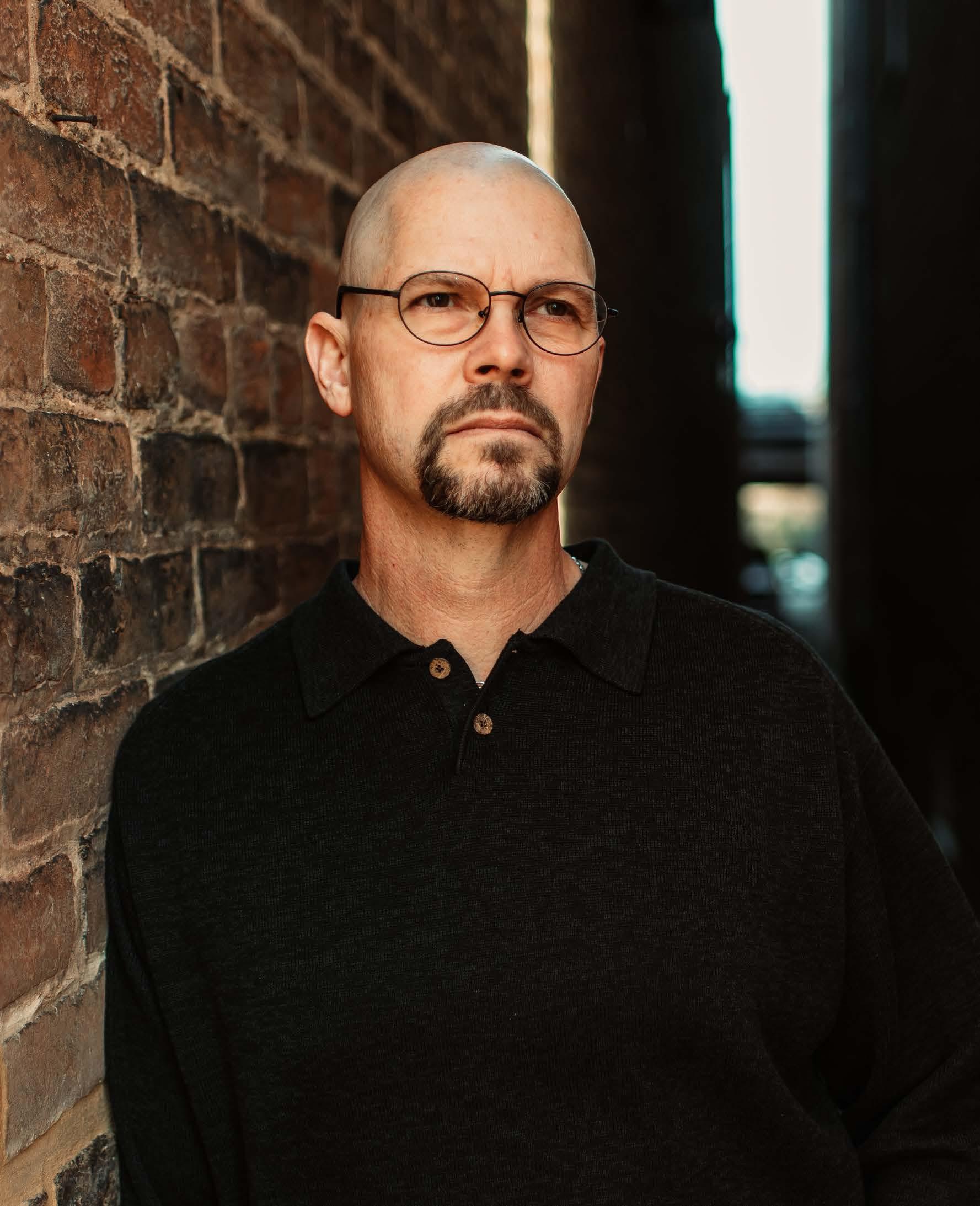
Learn more about Jarvis’s story here: www.freejarvis.org
DR. TODD BROWN
Awareness Ties Columnist www.awarenessties.us/todd-brown
Brown is a winner of multiple education awards, including the U.S. Congressional Teacher of the Year Award, U.S. Henry Ford Innovator Award, Education Foundation Innovator of the Year, and Air Force Association STEM Teacher of the Year. Dr. Brown is the creator and founder of the Inspire Project and cocreator of Operation Outbreak, which was named the Reimagine Education Award for Best Hybrid Program in the world. He is also an Education Ambassador for the United Nations and an Educational Ambassador of the Center for Disease Control (CDC).
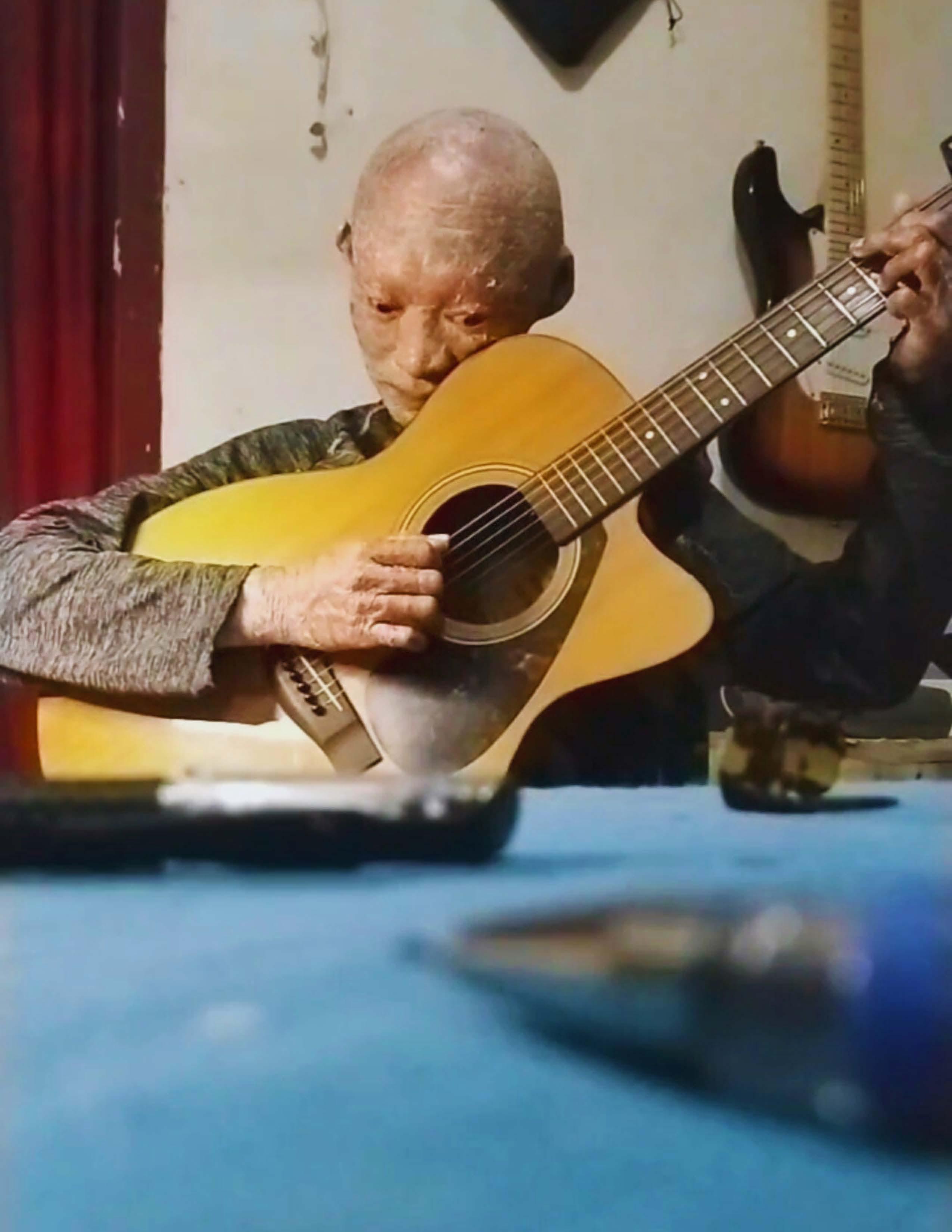


Elsar Dwiman is an Indonesian musician who has been sharing his musical journey through platforms like YouTube and TikTok. He was born with a rare skin condition called Lamellar Ichthyosis, which causes the skin to become dry and scaly. Despite this, Elsar (El) emphasizes that he doesn't want his condition to define him; instead, he focuses on his passion for music and aims to share his stories with the world through his musical journey.
ALLIÉ: I wonder if you could share how your journey with your skin condition, Lamellar Ichthyosis, has in fluenced your perspective on life and music.
EL: Yeah, well, because I've been living with this condition since I was born, I’ve experienced things that maybe other people haven’t, right? So, of course, it gives me a different perspective. I mean, the things that are important to me may not be that important to others. It absolutely shapes how I see life and how I approach my music. One of my hopes is to share my story—to let people know how a person like me thinks and what happens in my mind through my
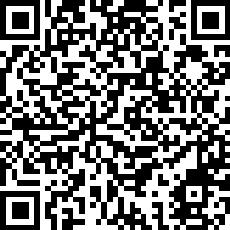

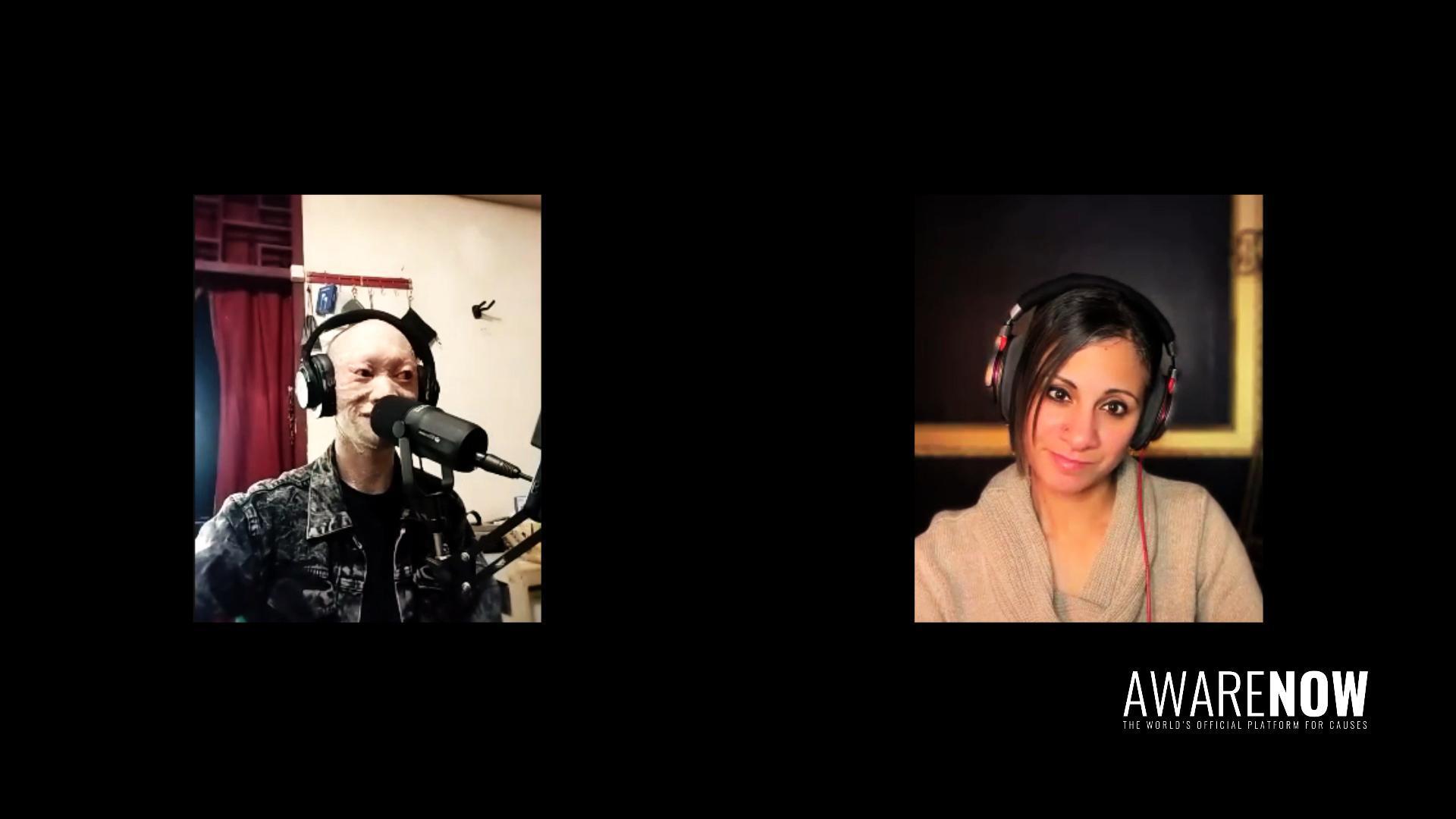

ELSAR DWIMAN



EL: (continued) This condition has influenced me, but I don’t want it to define me in a way that weakens my confidence. I want it to push me to create more, to share more stories so that people can truly know me. I refuse to let it hold me back.
ALLIÉ: You do a beautiful job through your music—beyond what people see, it’s about what they hear and feel. Speaking of that, you have a TikTok video where you mention taking a step toward your dream—sharing your stories through your music. What motivated you to embark on this musical journey? Why music? And how has it been received so far?
EL: You don’t see people like me every day, right? It’s challenging every time I step into a new place and meet new people. Being in a new environment is tough because when people see me for the first time, sometimes they’re confused. Not scared, exactly, but, you know what I mean.
The hardest part for me is meeting children. When kids see me, some of them are shocked, some freak out, cry, or run to their parents. And, well, I don’t blame them—it’s a natural reaction. But as those same children grow up, they start seeing me like anyone else. As they grow up, they stop seeing my condition as something different because they know me better. It’s natural for babies and young children to think that something unfamiliar or different might be dangerous. But as they mature, they realize that looks aren’t everything—just because something seems unfamiliar doesn’t mean it’s harmful. I noticed that when people know me better, they treat me better. That got me thinking—how can I help more people feel that way? That’s when I realized that social media could be a powerful tool. If people see me often, they’ll get used to it. And when they get used to it, they’ll know me better. And when they know me better, they’ll treat me better.
ALLIÉ: That’s a powerful statement: When they know me better, they treat me better.
EL: Exactly. Before TikTok, I was already doing different things, but that’s another part of my story for another time. To fast-forward a bit—I found TikTok. And I was lucky enough to have the confidence to share my voice and my singing. When I first started learning to sing, my voice was terrible—really, I remember it was awful! But at some point, I found the confidence to put it out there. I figured, why not? So many people share covers, post them on TikTok, and just put themselves out there. I wanted to do something I love, something that makes me happy, and put it somewhere people could find it. Whether people found it or not was another thing—but if they did, great! Because, like I said, I want people to see me. The more they see me, the more they understand me.
You asked about the reaction—it’s something I never expected. People feel things I didn’t even anticipate. I receive messages from people saying, Thank you so much. Your singing gives me a peace I can't describe. It calms me in ways I don’t understand. It makes me cry. And that, for me, is amazing. I never imagined I could make people feel something just through a screen.
ALLIÉ: Well, you absolutely can, and you absolutely have—for so many of us. I can tell you, you’ve had me in tears with some of your songs. Let’s talk about the songs you perform in your videos—powerful covers like Yellow by Coldplay and When We Were Young by Adele. How do you choose which songs to cover?
EL: I just cover songs that I like.
ALLIÉ: That simple?
EL: Yeah, it’s as simple as that. If I feel a song—if it speaks to me, if it catches my ear—I sing it.
ALLIÉ: I love what you said about ‘feeling’ the song. Some people cover songs just because they’re popular or trending, but for you, it’s about what resonates with you.

ELSAR DWIMAN MUSICIAN


Exclusive interview with Elsar Dwiman https://awarenow.us/podcast/take-a-shoulder
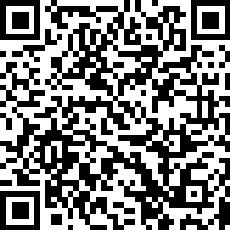




EL: I always say this—if I sing a song that I truly feel, if it comes from my heart, it will land in the hearts of others. I don’t want to be fake. I don’t want to sing a song just because it’s trending or just to get views. If I can’t feel the song, I can’t deliver it with honesty. So I only sing what I love.
ALLIÉ: That’s the best reason to sing. Let’s talk about your original music. Take a Shoulder showcases your songwriting talent. Can you tell us about the inspiration behind that song? I have to say—when I listened to it the other day, I was in absolute tears. I had it on repeat, playing it over and over. It touched me. What’s the story behind it?
EL: Even now, I’m still working on my songwriting skills—they’re not the best yet. But Take a Shoulder was one of the first songs I ever wrote. Since it was my first song, I honestly just went with the flow. I figured out what sounded good to me, what felt right. But as I kept working on it, the desire to make the song deeper—more meaningful—grew stronger. If you ask what the song is about, it’s about accepting vulnerability and offering comfort at the same time. I said this on my YouTube channel—this is a song you’d sing to someone you love, someone you care about. One of the lyrics says, We always need a place to rest on, right? Because everyone needs a place to lean on. Everyone is vulnerable, everyone is fragile at some point. But at least, if I can offer my shoulder as a place to rest, just let me know. So, the song is about acknowledging our shared vulnerability while also extending kindness, love, and support to others.
ALLIÉ: Well, it’s really powerful and really beautiful. Thank you for sharing that with the world. So, what message do you hope people take away from your music and your story? What do you want to leave them with?
EL: That’s a good question. If there’s one message, it’s this: You can be anything you want. Even if you are born differently, even if you have a condition you can’t change—don’t stop yourself. If a passion or a dream lives in your heart, pursue it. I’m not saying I’m successful yet. I’m still on my journey. There’s still so much I want to achieve. And from the beginning, I knew it would be a long road. I knew I’d face challenges that others wouldn’t. But I believe I’ll figure it out. And when I do, I want to tell others—You can chase your dreams, no matter what. I want to say, look at me. You have everything you need. I don’t have what you have, but I’m still going after my dreams. So if you have something you love, don’t hold back. Let’s work on our dreams together, and let’s make ourselves proud. ∎
Find Elsar and & his music online: YouTube: www.youtube.com/@ElsarDwimanOfficial TicTok: https://www.tiktok.com/@elsardwmn Instagram: @elsar_dwmn
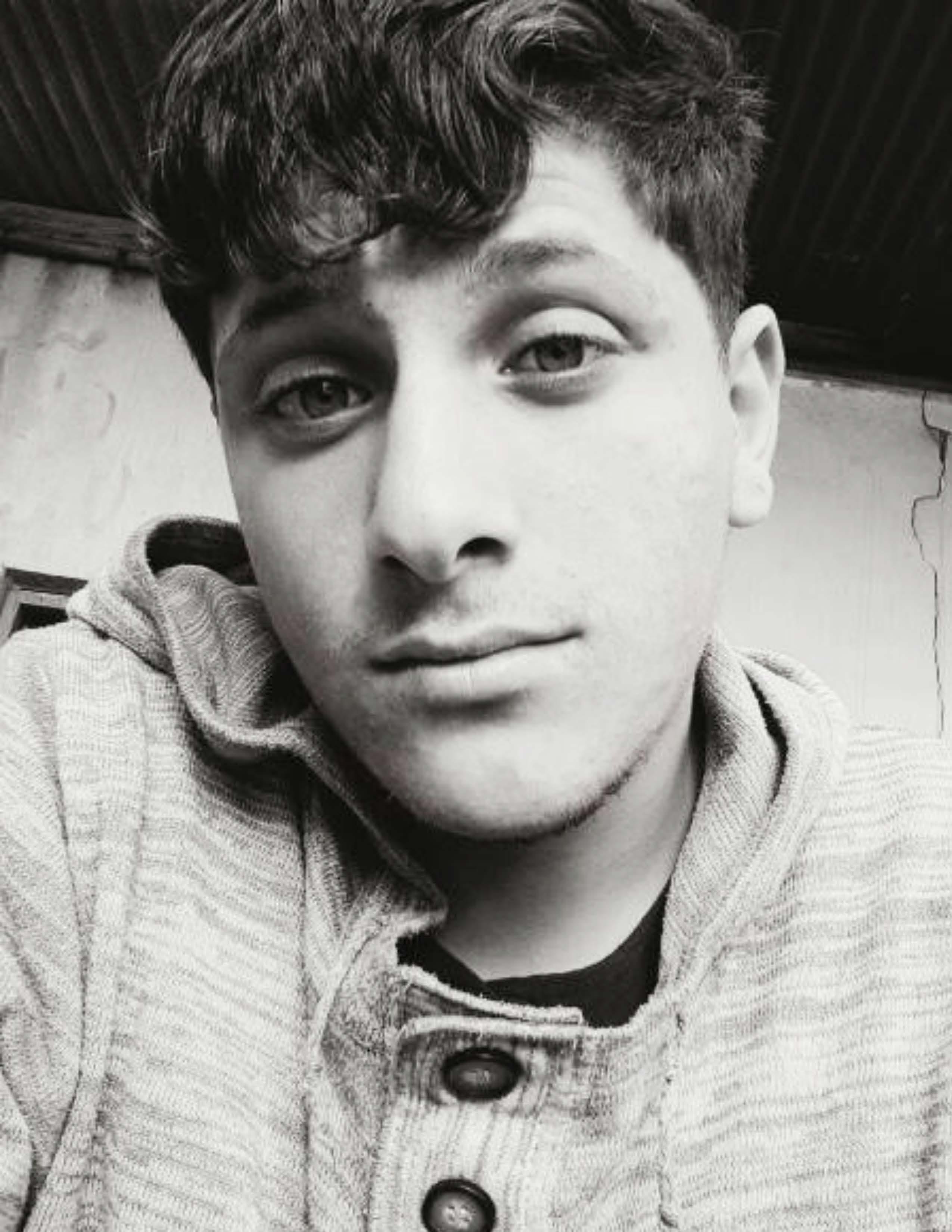


War steals many things—homes, livelihoods, and loved ones—but for Naji Fayez Foura, it has also placed an unbearable weight on his young shoulders. At just 21 years old, he is not only a refugee from Gaza but also the lifeline for his family, split between Egypt and the devastation left behind. In this interview, Naji shares his story of survival, separation, and an unyielding fight to keep his family alive in a world that too often looks away.
ALLIÉ: Separation is one of the hardest wounds of war. When you were forced to leave Gaza, you had to leave behind your father and older siblings. Can you take us back to that moment at the border—what did it feel like to step forward, knowing they could not follow? How do you carry the weight of that moment with you each day?
NAJI: That moment at the border was one of the most painful experiences of my life. The weight of knowing I was walking forward while my father and older siblings had to stay behind felt unbearable. It wasn’t just a physical




The longing to return, even to a place under siege, stems from the fact that home even in its most broken form— still holds a sense of identity and dignity that displacement strips away.



“Being displaced is not just about losing a home; it’s about losing a sense of identity, community, and security.”
NAJI: (continued) Every step forward felt wrong, like I was leaving a part of myself behind. The guilt was overwhelming. Why me? Why was I the one who got to leave while they had to stay? That question still lingers in my mind every day. I carry that moment with me in everything I do, in every phone call with them, in every thought of home. It’s a constant reminder of both loss and resilience, of the deep love that distance cannot erase.
ALLIÉ: You are not just a 21-year-old young man—you are now the backbone of your family, carrying the burden of survival for both those who made it to Egypt and those still trapped in Gaza. How do you find the strength to keep going, even on the days when the weight feels unbearable?
NAJI: This kind of responsibility is exhausting, especially at such a young age. When your survival depends on you, there is no choice but to keep moving forward. And strength in such moments often comes from love—love for family, for country, for the people who depend on you. You find strength in the small victories: putting food on the table for the day, sending money home, keeping hope alive for those still trapped.
You draw strength from the resilience of those who came before you, knowing that they have endured hardship and are still pushing on. And sometimes strength comes from allowing yourself to feel the weight, acknowledging the pain, and choosing to rise up the next day.
ALLIÉ: You mentioned that you sometimes wish you had stayed in Gaza, facing death, hunger, and bombings rather than the isolation you feel in Egypt. Can you share what it’s like to be displaced, not just from your homeland but from the sense of belonging and recognition? What is the hardest part of being a refugee in Egypt?
NAJI: Being displaced is not just about losing a home; it’s about losing a sense of identity, community, and security. For many refugees, including those from Gaza, Egypt can feel like a limbo—physically safe from the bombs but mentally trapped in isolation, uncertainty, and often discrimination.
One of the hardest parts of being a refugee in Egypt is the lack of legal rights and protections. Many refugees struggle to find stable jobs, access healthcare, or even move freely. Without proper documentation or residency status, life becomes a series of barriers—unable to plan for the future, constantly fearing deportation, and struggling to be seen as more than just a statistic.
There’s also the emotional toll. Being away from home means being away from family, culture, and the deep-rooted sense of belonging that makes life meaningful. Many refugees feel invisible, their stories unheard, their suffering ignored. The longing to return, even to a place under siege, stems from the fact that home even in its most broken form—still holds a sense of identity and dignity that displacement strips away.



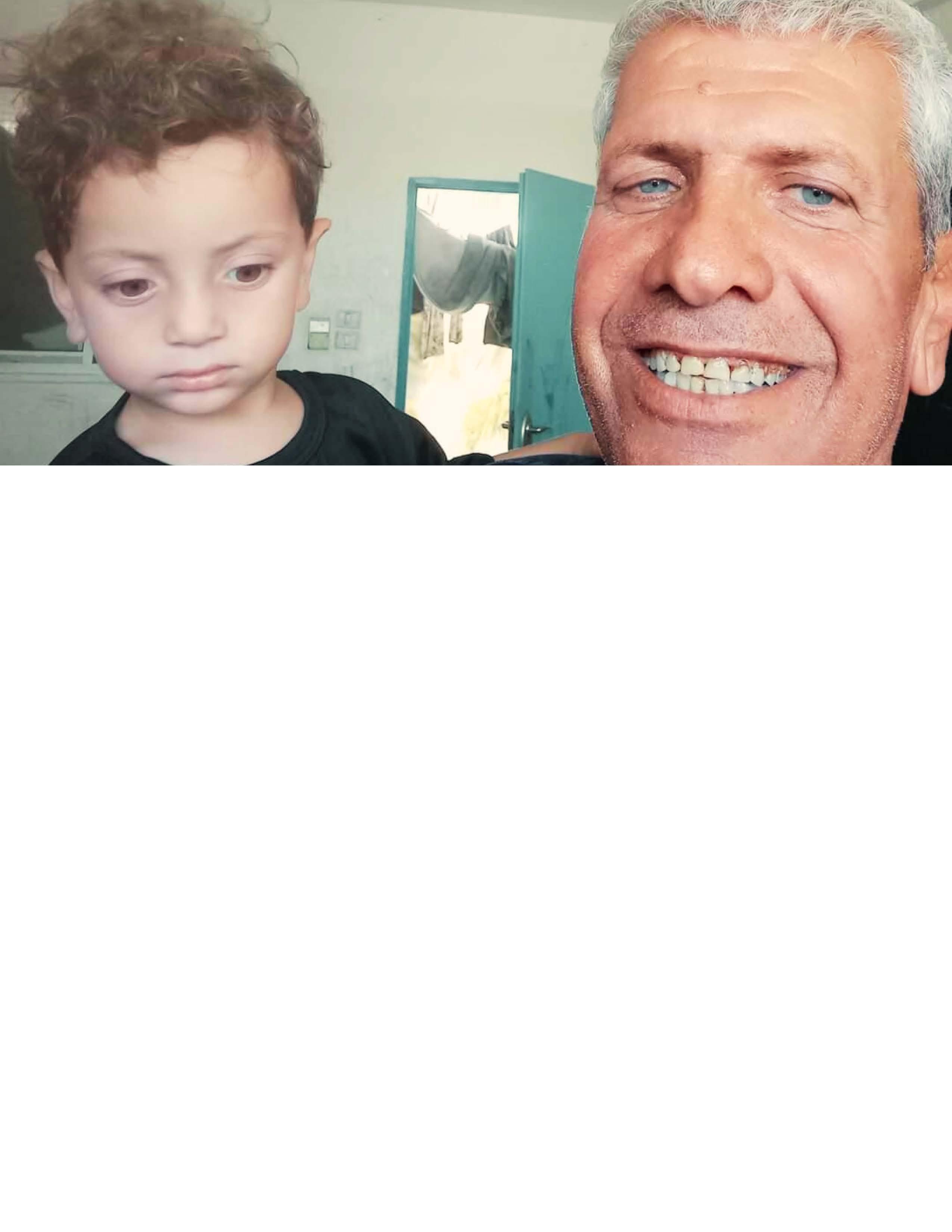


AwareNow Podcast THE WEIGHT OF WAR
Exclusive Interview with Naji Foura https://awarenow.us/podcast/the-weight-of-war

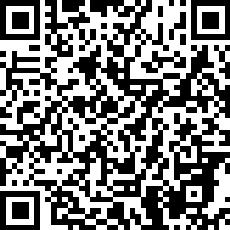

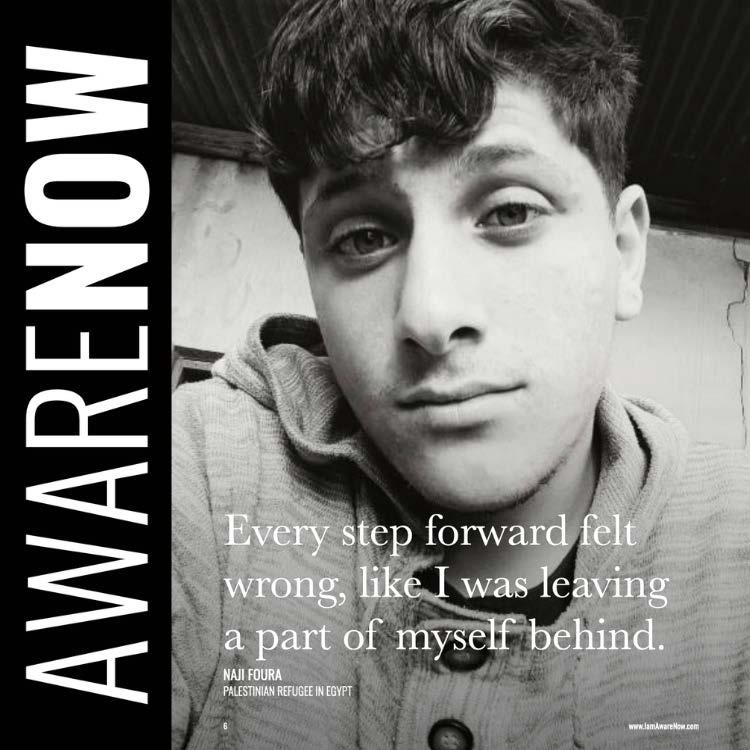

“When I feel like everything is falling apart, I hold on to the idea that change is constant, and even the worst moments don’t last forever.”
ALLIÉ: In the face of so much suffering, hope can feel impossible, but it still exists—even in the smallest ways. Where do you find hope today? What keeps you holding on when everything feels like it’s falling apart?
NAJI: Hope may seem distant in tough times, but I find it in the small, quiet moments—a kindness from a stranger, a deep conversation, listening to the Quran. Nature helps too—watching the sunrise reminds me that each day is a new beginning.
When I feel like everything is falling apart, I hold on to the idea that change is constant, and even the worst moments don’t last forever. Connecting with others, even in small ways, also keeps me going. ∎

If you can, give what you can:
‘Help Naji Survive After Escaping Gaza and Support His Family’ https://awarenow.us/support/naji
DEBORAH WEED FOUNDER OF THE SELF-WORTH INITIATIVE


‘THE


Over thirty years ago, my body became a battleground. A fibroid tumor, the size of a grapefruit, lay hidden beneath my uterus, and each trip to the bathroom felt like giving birth. The pain was relentless, yet an ultrasound performed at the hospital revealed “nothing.” The technology at the time, which relied on external imaging rather than internal, failed me— as did the countless doctors I visited over the next three years. Each offered a different diagnosis: pre-menopause, multiple sclerosis, Lou Gehrig’s disease, or “it’s all in your head.” Each verdict chipped away at my sanity, leaving me to feel abandoned, disbelieved, and utterly alone.
Meanwhile, my body betrayed me further. I hemorrhaged blood daily, barely able to rise from bed. The emotional pain compounded the physical torment. Friends drifted away, weary of my complaints. Family members, unable to understand what they couldn’t see, pulled back. I began to doubt myself, questioning whether my suffering was real.
Desperation turned to hopelessness. On the darkest days, I handed my father a suicide note, convinced that death would be a mercy. I even confessed my thoughts to my 14-year-old son, explaining that I couldn’t bear the physical pain —I didn’t want him to carry the blame if I ended my life. But instead of despair, he gave me a lifeline: “Keep going, Mom. No matter what.” His words became my anchor.
Finally, after three excruciating years, a doctor checked my iron levels. “You shouldn’t even be alive,” he said, wide-eyed as the results came in. My levels were dangerously low, a 6. Then, this same doctor discovered the fibroid that had been overlooked all along. A hysterectomy saved my life—but not before those three lost years had left an indelible mark.
The trauma of being disbelieved, dismissed, and left to suffer in silence doesn’t just go away. It burrows deep, festering in the mind and body, waiting to resurface. Over the next three decades, my life became a revolving door of “mystery illnesses.” Each ailment was real, yet each fell outside the realm of easy understanding or standard medical diagnosis.
There was the time I underwent an MRA to examine a dissection in my C2 vertebral artery. The nurse administering the contrast missed my vein, and gadolinium—a substance as toxic as mercury—flooded into my arm instead. My body spiraled into another life-threatening crisis. Yet again, I was met with confusion and skepticism from the medical community, family and friends.
Even four years ago my home became infested with mold, coinciding with a cascade of other stressors: a black-box antibiotic prescribed without my knowledge it was an old cancer drug, and the vaccine. My body unraveled yet again. Each new illness seemed to echo the pain of my past, reinforcing a pattern of being misunderstood, dismissed, and ultimately, left to fend for myself.
For years, I sought justice—not in the legal sense, but in the form of acknowledgment, understanding, and care. I wanted someone to look me in the eye and say, “I see you. I believe you. What happened to you wasn’t right.” But that validation never came.
Instead, I began to realize how deeply the lack of justice had shaped my psyche. The trauma of not being believed—of being dismissed by doctors, abandoned by friends, and even doubted by myself—left a wound far greater than the illnesses themselves. It was as though my soul had left my body, hovering in some liminal space, waiting for a justice that would never come.
AwareNow
Written and Narrated by Deborah Weed https://awarenow.us/podcast/invisible-scars

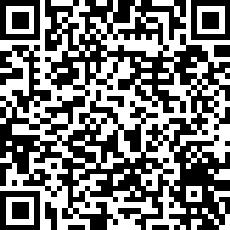


Recently, I’ve come to understand how the mind and body are intertwined. The lack of justice I endured was not just a series of unfortunate events; it became a story I carried with me, replaying it in different forms, hoping for a different ending. Each new illness, each new crisis, felt like a chance to rewrite the narrative—to finally be seen, heard, and believed.
But here’s the hard truth: justice doesn’t always come from the outside. Sometimes, it’s an act of radical self-love—a decision to believe in your own worth, even when no one else does.
For me, true healing is just beginning. I’ve stopped waiting for validation and started reclaiming my own story. I am writing about my experiences, not as a victim, but as a survivor. I am seeking out others who have endured similar injustices, finding solace in shared stories and mutual understanding. I am learning to advocate for myself in medical settings, demanding the care and respect I deserved.
To anyone reading this who has felt disbelieved, dismissed, or abandoned: you are not alone. Your pain is real. Your story matters. And while the road to healing is long and often lonely, it begins with one simple truth: YOU are worth fighting for. Even though you don’t know me… I am holding your hand and cheering you on.
Justice, I’ve learned, isn’t always about setting the record straight or making others pay for their mistakes. Sometimes, it’s about reclaiming your power, rewriting your narrative, and refusing to let past injustices define your future.
And so I write this not just for myself, but for the countless others who have suffered in silence. Let this be a reminder that while pain may shape us, it does not have to define us. There is life and justice on the other side of suffering. And it begins with the courage to keep going, no matter what. ∎
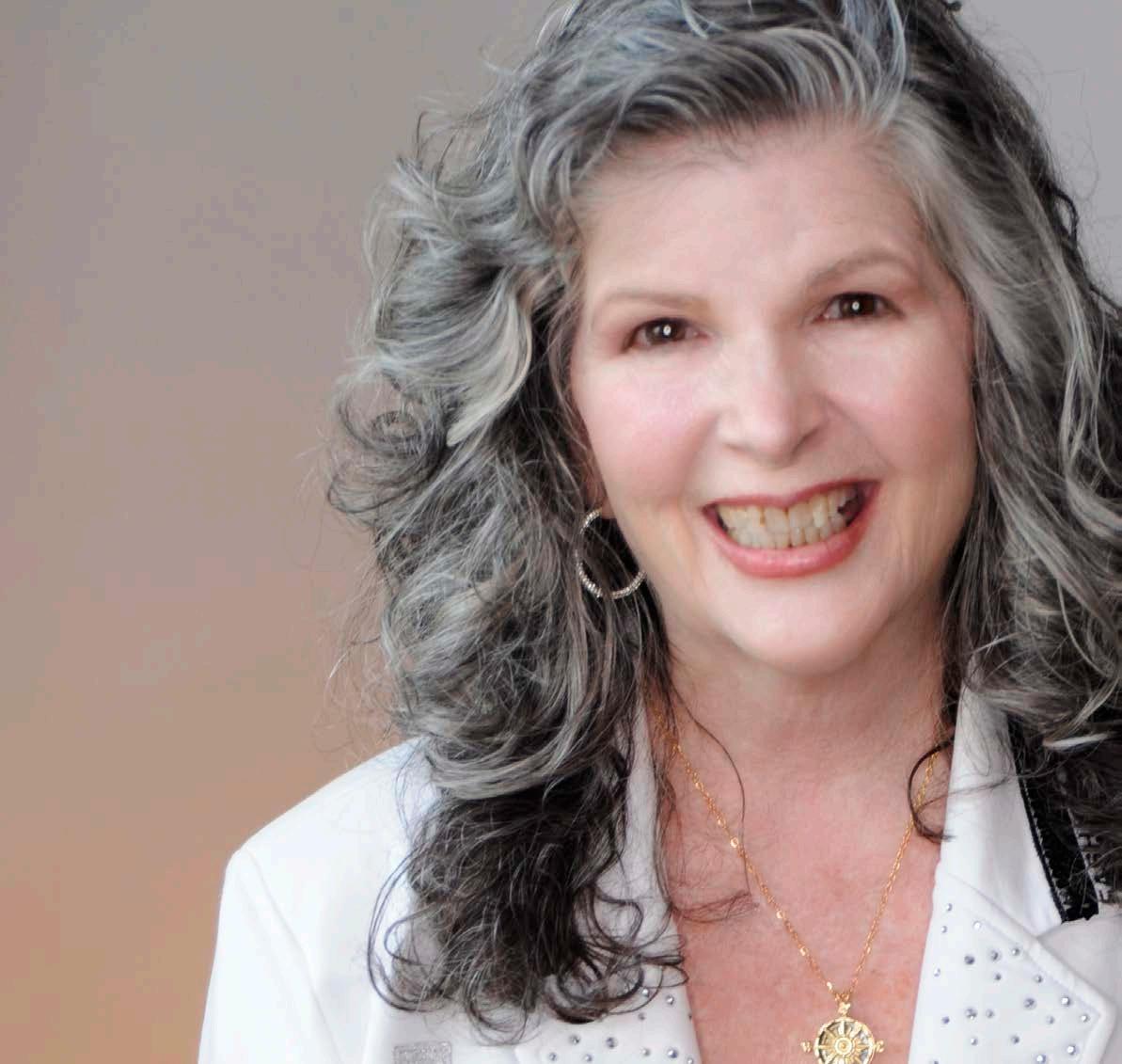
DEBORAH WEED
Founder of the Self-Worth Initiative www.awarenessties.us/deborah-weed
Deborah Weed is a whirlwind of creativity and motivation, passionately championing self-worth through her Self-worth Initiative. Her mission? To help families and their kiddos live authentically, energetically, and joyously! Deborah's journey began with a personal crisis: after dazzling in high-pro file roles like working on a $26 million pavilion for KIA Motors and being Citibank's Director of Development, she faced a misdiagnosis that left her bedridden for three years. Her discovery of a 1943 copper penny worth a million dollars turned her perspective around— if a "worthless" penny could be so valuable, so could she! Inspired, Deborah wrote and produced The Luckiest Penny, an interactive musical that teaches kids about self-worth. As a motivational speaker, Deborah brings fun and inspiration to everyone, proving that self-worth is a joyful, transformative adventure.
www.IamAwareNow.com



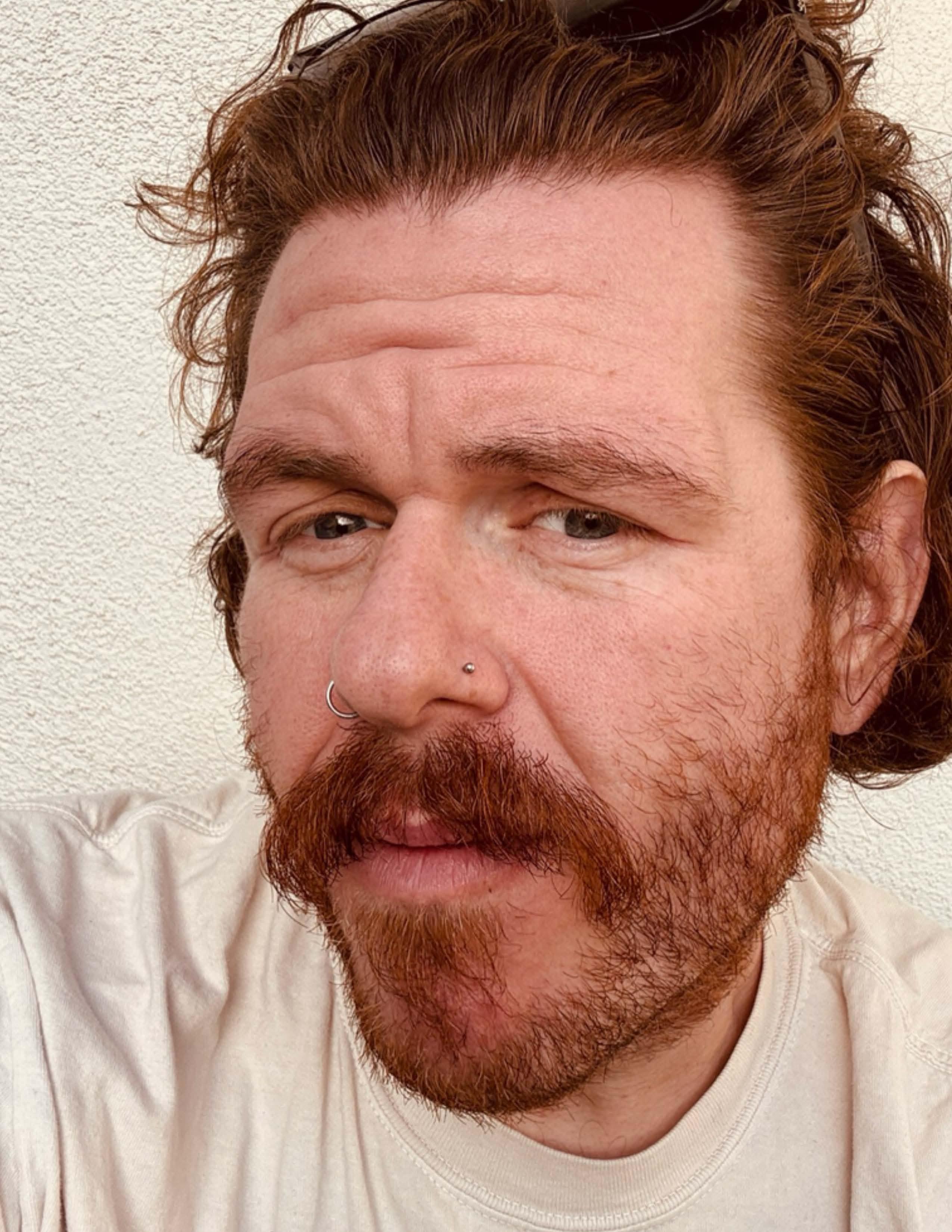

From his beginnings as a touring musician to becoming one of LA’s most sought-after celebrity photographers, the journey of Storm Santos is anything but ordinary. Through his edgy yet accessible style, Storm captures not just faces but the essence of the stories behind them—stories of resilience, humanity, and connection.
ALLIÉ: Your post about offering free family photo sessions for those who lost photos in the LA fires was such a generous and heartfelt gesture. What inspired you to extend that offer, and how has it shaped the way you see the role of photography in healing?

STORM: First and foremost, I'm from here in LA—born and raised. My grandfather worked at General Hospital in downtown LA for 40 years. So, I mean, LA is a special place. And I think, you know, people from all over the world come here, and that’s a really cool thing. A lot of people are either seeking their dreams or are at the very top, to the very bottom, searching for something. And I think I have a lot of love for this city. EXCLUSIVE INTERVIEW WITH STORM SANTOS

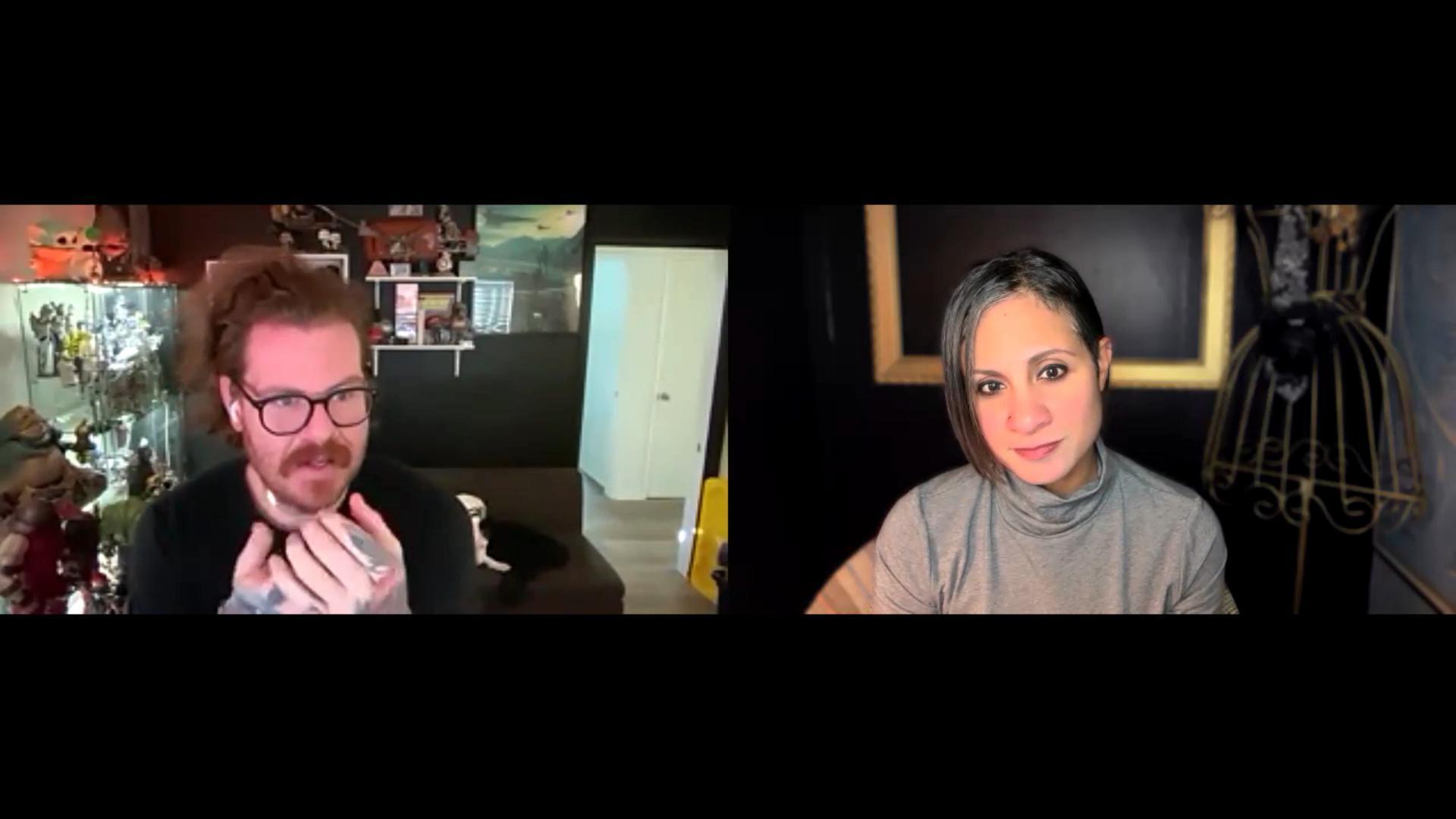




“I knew I have different paintbrushes in my pocket—whether it’s music, working in movies, photography, or creating art.
That’s all I knew.”
STORM: (continued) You know, actually, I can’t even take full credit for the idea. I saw another photographer do it—his name’s Andrew Levy on Instagram. I was kind of in the midst of an evacuation, and we were trying to help a couple of friends directly whose house had burned down. My wife and I were just like, “What do we do to help them while we’re in this situation?” We were living out of four bags in my production studio downtown, and then we kind of got the okay to come back, but we were still on fire watch.
Then I saw him post that, and I was like, “I’m just gonna steal this. This is great.” There were other people doing it too, you know, and I think more people should do it. Anybody who has the ability to give back in any way—especially giving back through art—should. Sometimes, people don’t even realize they need art right away. Obviously, you need clothes and a place to sleep first. But I don’t think enough people realize how much art can help heal the inside stuff.
So, I just wanted to be able to do something. When I evacuated, I had just done a shoot days prior, and there was so much stuff I didn’t even get to grab—so, so much. It was like: dogs, wife, dog stuff, a guitar, and a server full of life’s work. That was it. We had to go. There was just so much left behind, and I thought, “Man, this is the only thing my brain knows how to give.” If we had lost everything, we could have lost hundreds and hundreds of photos. So I figured, if this is what I can do to at least help immediately, right now, then I should do it. At the very least, it would give people something fun to do for a day. Shoutout to Andrew Levy for letting me see that post while I was in the sauna. I was like, “I’m just gonna steal this.”
ALLIÉ: You’ve transitioned from being a touring musician to working in television and now photographing some of the most well-known people in the world. Looking back, how do you think those earlier experiences with storytelling— whether through music or cinematography—have influenced your approach to photography?
STORM: I mean, my approach to doing art was always just—I never wanted to have a job where I had to clock in and clock out. Even at a very young age, I felt like art just kind of flows through my body naturally—in the most nonegotistical way I can put that. Like, I don’t know… We’re only here for so long, right? And I just didn’t want to spend that time doing something I utterly hated.
I knew I have different paintbrushes in my pocket—whether it’s music, working in movies, photography, or creating art. That’s all I knew. My brain just works like, “How can I pay the bills, enjoy life enough, and make stuff I’m really proud of?” And I think each one of those things played a role in me growing up.
I mean, I’ve been a working artist since I was 20. I’m 33 now, you know, so it’s hills and valleys. And I think it always will be. If you don’t have hills and valleys and you’re just on a hill… that’s tiring too. I think the losses give the wins so much more foundation. You know what I mean? They give you a sense of, “Oh cool, here’s what I need to work towards. Here’s where I want to be. Here are the things I want to do.” I’m really grateful that I get to make a living doing art. I’m grateful every day for that.
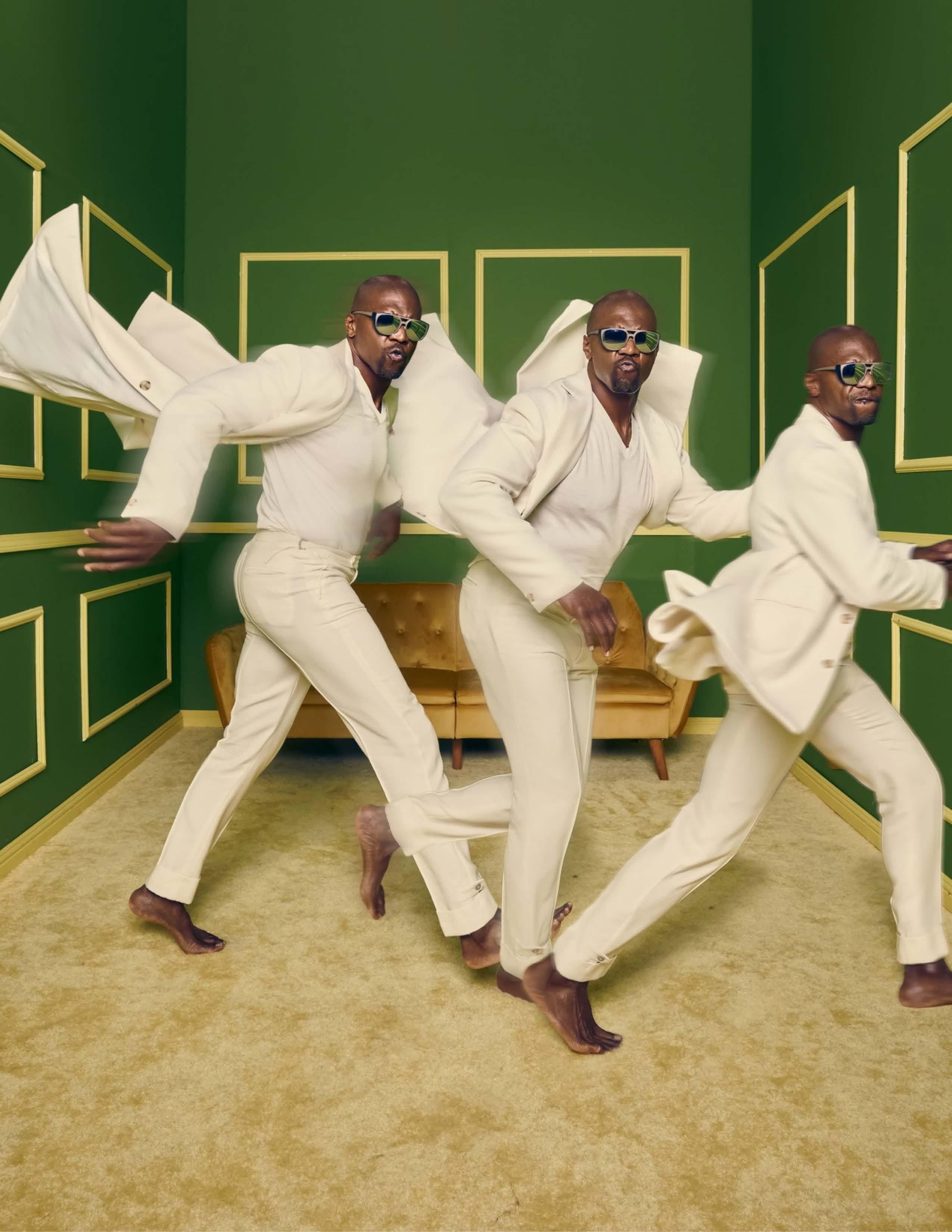


“I think the losses give the wins so much more foundation.”
ALLIÉ: Well, your work is phenomenal. Let's talk more about your style that has been described as edgy yet accessible, which is a rare balance. How do you approach capturing this duality in your work, especially when working with celebrities who are often portrayed as larger-than-life?
STORM: Right. You know, I think I have some larger-than-life-ness to me. I mean, I think that’s the beauty of a lot of people here in this town who get to work in this business—it’s a lot of people who are larger than life, and we get to hang out and make stuff together. And I think that’s the real, real beauty of it.
I’m such a huge movie fan. Movies are kind of my—sorry—movies are kind of my home base for everything. The stories that we, as human beings, get to tell each other… you can walk out of a movie theater totally stunned. And at least for me, I can walk away from a movie that really impacts me and think about it for two weeks—whether it’s the visuals, the storytelling, or whatever. And I think that’s what really drives my style. I want things to feel like that person or that artist in front of the camera is real—but I also want it to feel just slightly removed from reality.
I don’t want to sound pompous, but I want everything to have a little more… you know, everyone here is a little larger than life. I want to show that. I want people in front of the camera to feel like their true selves. But at the same time, I want my influences—every single movie that’s really affected me—to come through in my work.
I love movies, and I love what they do. Being able to work with people who make such incredible movies, TV shows, and art—it all gets thrown into this little pressure cooker, and whatever comes out… Well, sometimes I don’t know how it comes out, but it comes out pretty consistently.
I think I’m grateful to have a voice. I’ve tried to do different things before, to fit different molds, but—I don’t know—my body doesn’t let me. My brain doesn’t let me do anything other than what I know how to do.
ALLIÉ: You’ve spent your career creating images that are likely to outlive us all. What does legacy mean to you, and how do you feel your photos contribute to the stories people leave behind?
STORM: I mean, I hope they last that long. That’s all we can really hope for. If I died tomorrow and all I had were my images, I think I’d be pretty proud of the things I’ve made. And I hope that the people who made them with me are proud of them too—that they represent them well. I also hope that the people on the other side of the camera, the ones who collaborated to bring those images to life, feel proud of them too.
So, the people I’ve made them with and the people who are directly connected to me—those are the ones I care about the most. If they looked at those images and said, “That’s it. Cool. That’s what he made while he was here,” I’d be pretty proud of that.
And I think that’s it—if you can be proud of the work you make at the end of the day, that’s pretty good. I mean, not every single day, but for most of the, you know, self-loathing hours of the journey.
I hope they last. I mean, that’s kind of the goal, right? I try to shoot stuff that lasts longer than a press cycle.
ALLIÉ: Absolutely. It's like preserving that moment, right?
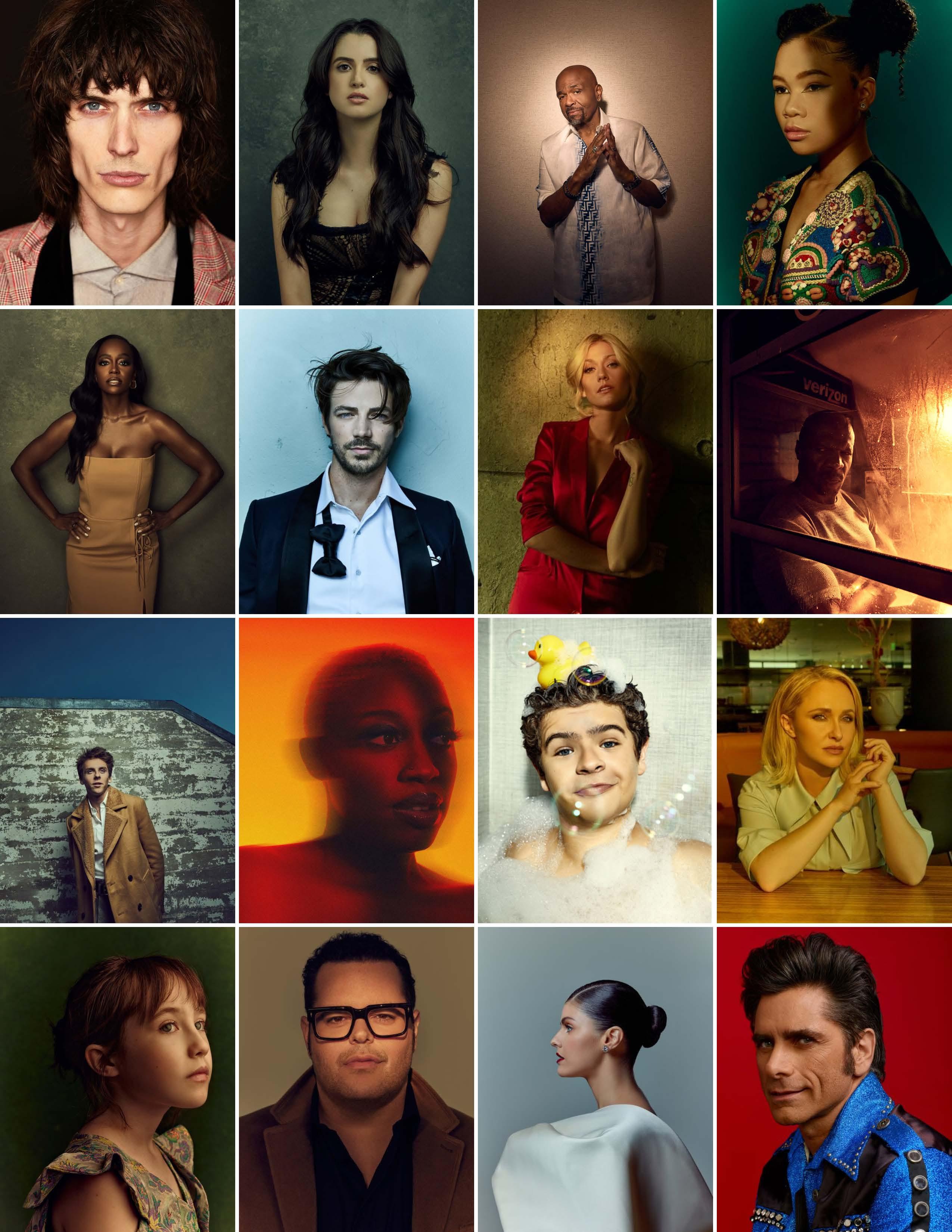
AwareNow Podcast
Exclusive Interview with Storm Santos https://awarenow.us/podcast/the-eye-of-the-storm



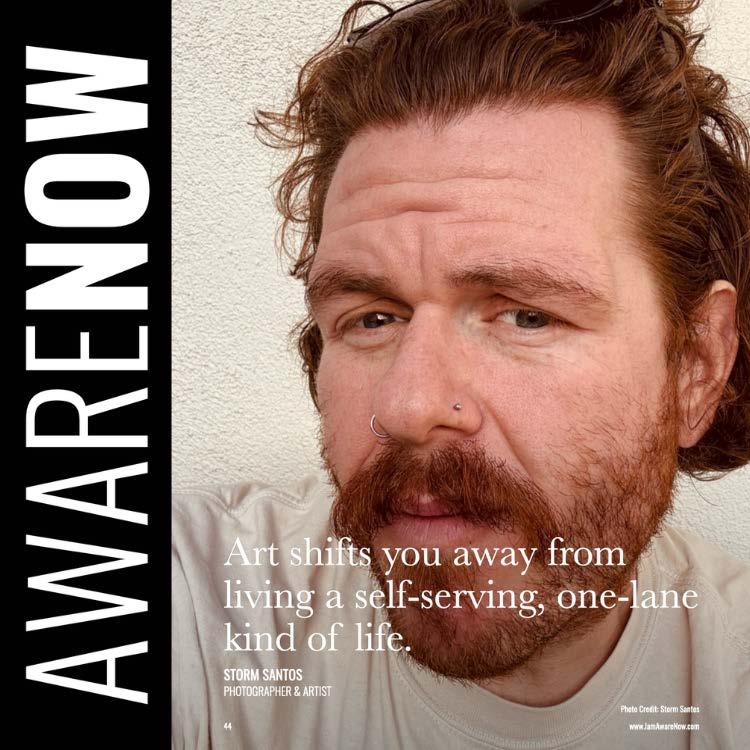

STORM: And a lot of the time, you know, we’re shooting actors who are from indie movies or vice versa—any of that stuff. I mean, those are big moments in those people’s lives too, you know? And I want it to feel like a real snapshot for them—something they can look back on and think, “Wow, that was me. I was going through this at the time.”
I think those are the things that matter. Even when I look at photos of myself and my wife, or when you look back now —especially in this age where we can look at images as adults and re flect on ten years of our lives—you’re like, “Wow, where was I when these moments happened?” You know? And when you step back, you realize—that’s life.
ALLIÉ: Your work captures moments that tell stories and evoke emotion, but if you could leave one message—your own photograph in words—for those who see the world through your lens, what would it be?
STORM: I think that question is like an onion—it has multiple layers. If you were to boil it down to just onion powder, I think I’d want more people to create art. You know, if my art can inspire someone to go out and make any type of art, that’s incredible.
I see a lot of people who have never even wanted to touch art in any medium. And I think if more people just dipped their pen in ink a little bit, this place would probably be a little softer, a little more loving. If you can give something creatively, in any capacity, it makes a difference.
Even looking at Los Angeles now, I see so many of my artist friends giving back—not even just with art, but in general. I think artists tend to give back, whether they realize it or not. For example, my neighbor—she’s an incredible florist who does some of the biggest work in Hollywood. And right now, her entire home has a driveway full of donated clothes for people affected by the fires.
I think art gives you the mindset to want to do that. Art shifts you away from living a self-serving, one-lane kind of life. And I think everyone should try it, in any capacity. It creates community. It warms this little weird fire inside people.
I think everybody has a pilot light, you know? And sometimes, you just have to turn the knob a little. ∎
I thought I would end my pain by ending my life.
KEVIN HINES SUICIDE PREVENTION ADVOCATE & SPEAKER


‘BE


On September 25, 2000, I was compelled to take my life. It wasn’t a decision I took lightly, but it was a decision that felt inevitable at the time.
I was 19 years old, struggling with a diagnosed bipolar disorder, and after years of degrading mental health, I felt like I had reached the end of my rope. I walked to the railing of the Golden Gate Bridge, looked down at the water below, and without hesitation, I jumped. My plan was simple: I thought I would end my pain by ending my life.
What happened after I hit the water defied all logic, and to this day, I still struggle to explain it fully. I’ve come to understand it was in fact a true miracle. I didn’t just survive that fall—something extraordinary happened. A sea lion, an animal that didn’t speak my language and didn’t know who I was or why I had fallen into the water, saved my life. It’s a story that continues to defy logic today, but that sea lion’s intervention changed the entire trajectory of my life. And because of that miracle, I went on to be credited with saving over 200,000 lives and counting by sharing my story and advocating for mental health awareness globally.
Today, I want to explore how that sea lion kept me afloat and why its miraculous act led to the work I do today, helping countless people who struggle with their own mental health challenges. Here are the top 5 reasons this miracle occurred, and how it ultimately saved not just my life, but has helped others find hope when they thought they had none.
Animals may not have the complex emotional intelligence that humans do, but they certainly have instincts that can sometimes seem almost human. When I jumped off the Golden Gate Bridge, I had already fallen about 220 feet before I hit the water. The impact was brutal, and I was immediately incapacitated. The water was freezing, and I struggled to stay afloat.
That’s when I felt something unexpected—something that I can only describe as a presence beneath me. It was the sea lion, who I would affectionately name Herbert. Without any prior knowledge of me or my pain, the sea lion instinctively came to my aid, nudging me and keeping me above water long enough for help in the form of the US Coast Guard to arrive.
This sea lion wasn’t trained. It didn’t have any prior understanding of what had happened or why it was helping. It simply did what animals are sometimes known to do: It responded to the situation with instinctive compassion. This, in many ways, mirrored what I would later learn about the power of human empathy. Sometimes, even when we don’t fully understand what someone is going through, just being there can make all the difference.
The sea lion’s presence in that moment was a reminder that, even in our darkest hours, there are forces—seen and unseen—that can help us. That animal’s instinctual compassion kept me alive, and in turn, it drove me to live with a sense of compassion and purpose for others.
When I leapt off the bridge, I was filled with one overwhelming emotion: the desperate desire to end the internal war waging in my brain. I thought I would drown quickly and end my pain in one final, swift moment. But I didn’t drown. Instead, I found myself in a life-and-death struggle with the water. The sea lion kept nudging me, keeping me a float at a time when I didn’t have the strength to keep myself afloat. I had shattered three vertebrae, and missed severing my spinal cord by 2 millimeters.
For those who struggle with suicidal thoughts, it can feel like there’s no one around who understands the depth of the pain. It can feel like you’re completely alone, lost in a sea of your own thoughts. But in that moment, when the sea lion kept me from sinking, I experienced something vital. I felt like I wasn’t alone anymore. Someone—or something—was there for me, holding me up when I couldn’t hold on any longer. This wasn’t just physical assistance; it was an emotional tether. I wasn’t just surviving because of the sea lion—I was living because it showed me that life could still have moments of unexpected care, even in the face of despair. I felt Gods hands in that moment, my faith since that day has never wavered.
That act of being “held” when I couldn’t hold on to myself is what I try to offer to others who are struggling with their mental health. I didn’t have the strength to hold on, but that sea lion gave me the strength to believe that I could. It’s what I now do in my advocacy, helping people see that they don’t have to be alone in their struggles.
The timing of the sea lion’s intervention is one of the most miraculous parts of this story. After jumping from the Golden Gate Bridge, I went into a freefall that lasted just under four seconds. I didn’t even know what was happening to me, and I was already preparing to die. When I hit the water, I never lost consciousness. I was fully aware and that’s when the sea lion appeared.
Why the sea lion was there, at that exact moment, is beyond explanation. It had to be in the right place at the right time, and it had to have the right instincts to act in a life-saving way. This timing is something I’ve come to recognize as part of a bigger picture. When we’re struggling with mental health, it can feel like nothing is going right, and every effort to reach out falls short. But sometimes, God will send us what we need, exactly when we need it.
It was the perfect timing of that sea lion that kept me from sinking into the abyss, and this, more than anything, is what I share with others when I speak. There is hope, even when it feels like everything is too late. Help often comes when you least expect it, and sometimes, it arrives in the most unlikely form.
The sea lion kept me afloat long enough for rescuers to arrive. The Coast Guard reached me in time, and I was pulled from the waters, saved from certain death. The moment I was pulled from the water was the moment my life began again. I was given a second chance—a chance to heal, grow, and ultimately, become the person I am today. I wasn’t just rescued from the water that day; I was saved from years of self-destructive behavior and thoughts.
I had already diagnosed with bipolar disorder, 2 years prior to the attempt, but something I had struggled with unknowingly for years. But more importantly, I found a deep sense of purpose through sharing my story. The sea lion’s act of saving me created a chain reaction that led me to public speaking, media work, viral videos, and even the documentaries I’ve been a part of, which have touched the lives of billions of people worldwide.
Without the sea lion, I wouldn’t have been alive to share my story. And without sharing my story, I would not have been able to inspire others to seek help and find hope. The miracle that happened in the water on that day continues to ripple outward, transforming lives and creating a cycle of empathy, understanding, and healing.


“You too can find hope, even when it feels like all hope is lost.”
This is the incredible power of resilience. When you survive, you become a living testament to the idea that recovery is possible, no matter how insurmountable the obstacles may seem. And the sea lion, unknowingly, gave me the resilience I needed to keep going—to take that miracle and pay it forward by being the voice for those who feel voiceless.
The intervention of the sea lion is a stark reminder that life is filled with unseen forces—forces that we may never fully understand but that have a profound impact on us. I didn’t understand why I was saved, or why that sea lion came to my aid, but over the years, I’ve come to view it as one of those inexplicable moments where life shows you just how powerful and mysterious it can be.
The truth is, this miracle wasn’t just about the sea lion. It was about the way life has a strange, unpredictable way of showing us what we need, even when we can’t ask for it. There is a force in life that reaches out to us at the most unexpected times, often when we feel the least deserving of it. Whether it’s a stranger, a family member, or even an animal like the sea lion, something always has a way of showing up when we need it most.
For me, my unflinching faith in God saved my life that day through the sea lion, but Herbert the sea lion taught me that, even in our darkest moments, there is hope. It reminds us that miracles aren’t always the big, showy things we expect. Sometimes, they come in small, quiet moments—the nudge of an animal, a gesture from a stranger, a word of encouragement when you’re at your lowest. Those moments matter. They save lives. And I know, from personal experience, that if that sea lion hadn’t kept me afloat that day, I wouldn’t be here to share this with you.
That sea lion didn’t just save my life on September 25, 2000. It gave me the opportunity to change my life, to grow, and to share my story with the world. It helped me become the person I am today, someone who is driven by the mission of helping others find hope and healing, just as I did. I want everyone reading this to understand that, like me, you too can survive. You too can find hope, even when it feels like all hope is lost. Just as that sea lion kept me a float, you can find your light to keep you going every single day! Keep Going! #BeHereTomorrow ∎

Suicide Prevention Advocate & Speaker www.awarenessties.us/kevin-hines
Kevin Hines is a storyteller. He is a best selling author, global public speaker, and award winning documentary filmmaker. In the Year 2000, Kevin attempted to take his life by jumping off the Golden Gate Bridge. Many factors contributed to his miraculous survival including a sea lion which kept him a float until the Coast Guard arrived. Kevin now travels the world sharing his story of hope, healing, and recovery while teaching people of all ages the art of wellness & the ability to survive pain with true resilience. His motto: #BeHereTomorrow and every day after that.
MARK CRONIN CO-FOUNDER OF JOHN’S CRAZY SOCKS
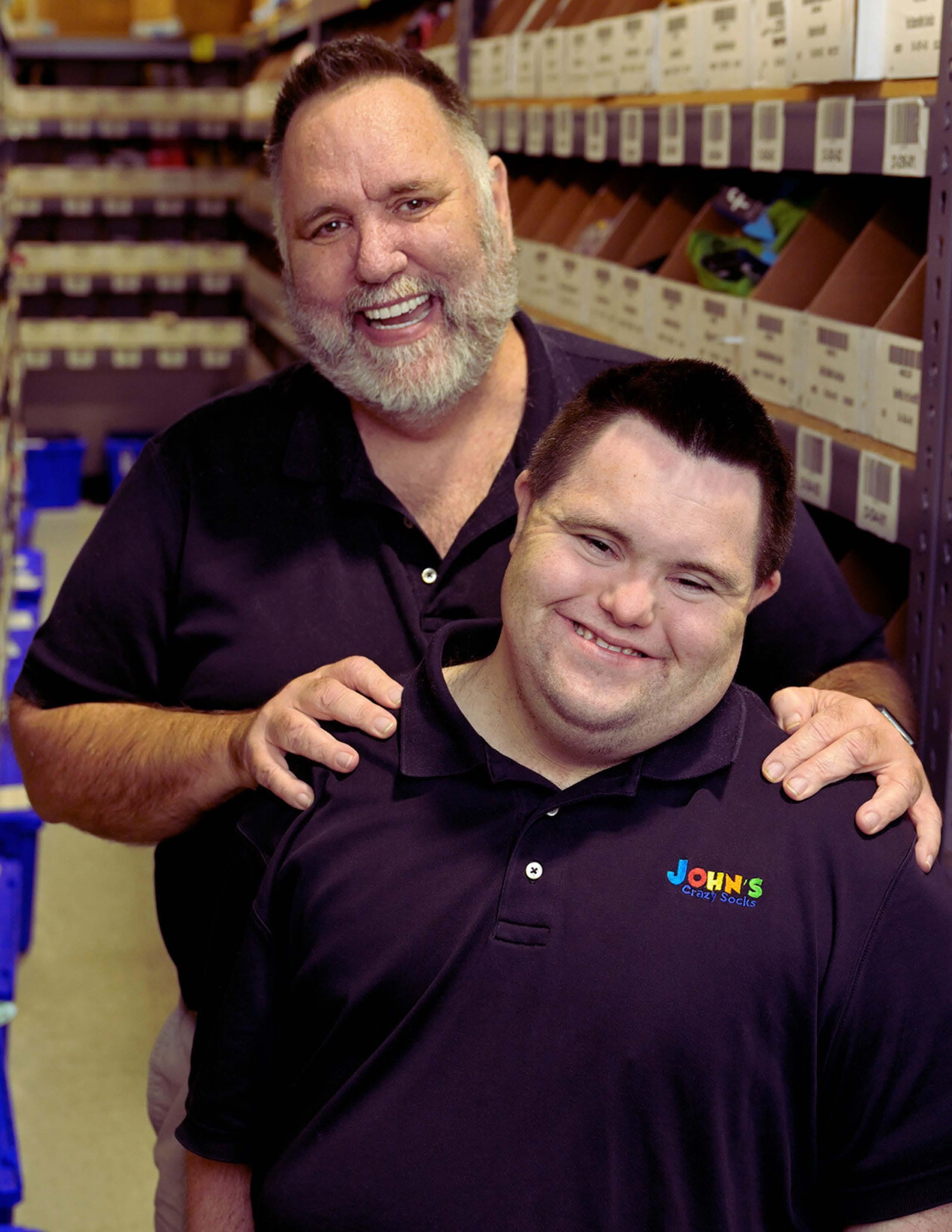


Inclusion isn’t just a value at John’s Crazy Socks—it’s the foundation of everything they do. Father-son duo Mark & John Cronin built more than a business; they created a space where individuality is celebrated, differences are embraced, and everyone belongs. Their story is a testament to the power of purpose-driven entrepreneurship, proving that when you lead with heart, you can change the world one pair of socks at a time.
ALLIÉ: John, when you told your dad, “I want to go into business with you,” it was a pivotal moment. What did that decision mean to you personally, and how has it shaped the bond you share with your dad today?
JOHN: I love working with my dad. It’s really cool. I'm working with my partner. My partner, he lifts me up. I learn all the time. My dad plays with me, and he gives me strength.
MARK: I give you strength. And he lifts me up. So, I’m a pretty lucky man. He comes to me and says, “Dad, let’s go into business.” And I’m an entrepreneur. I've been running other businesses, starting them. He had that in him. We can look back and see things he was doing in school that were very entrepreneurial. Plus, I have three sons and this
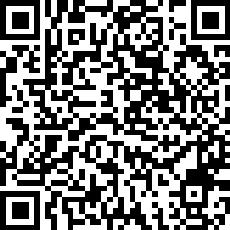



I have Down syndrome. It never holds me back.
JOHN CRONIN CO-FOUNDER OF JOHN’S CRAZY SOCKS



“John is always learning, always coming up that learning curve. And that is the hallmark of real intelligence.”
JOHN: Yes, I am dad.
ALLIÉ: Let’s talk about that. Mark, as a father and business partner, how did you balance the roles of guiding John while also giving him the space to lead with his own ideas and creativity?
MARK: Well, they merge at a lot of points. So I'm an old man now…
JOHN: You’re old.
MARK: Thank you very much. And I've been fortunate to play a number of roles. I've been a teacher. I've been a coach. I've coached sports for many years. I've been a manager and then an owner of businesses. All of those kind of feed off of each other. And I'm a dad. So, this was very exciting with John. And we are partners. It's not, “Well, Dad, I want to come and sit next to you when you go and run a business.” We're going to go do this together. And in that role, I need to respect John's role, respect his contributions. I'm always teaching, right? And you're always learning.
JOHN: I do all the time.
MARK: One of the many things that John has taught me is about true intelligence. And I think the hallmark of true intelligence is curiosity. So, John is always learning, always coming up that learning curve. And that is the hallmark of real intelligence.
ALLIÉ: Let’s talk about John’s Crazy Socks, because it’s more than just a business—it’s a movement that celebrates individuality and inclusion. How do you both define success beyond sales and revenue?
MARK: It's impact. It's how we can touch people and spread this message. You know, we really do start with spreading happiness. And what do you say is the key to happiness?
JOHN: It’s gratitude and to do for others.
MARK: It seems so simple. Again, John teaches me all the time about gratitude. And this will sound almost trite. The more we do for others, the better off we are. It's a rich mission that we have, rich in the sense that it's deep. There are a lot of layers to it. So, the business model is different. We're a social enterprise. We have a social mission and a business mission. They feed off of each other. If all we were doing was selling socks, you wouldn't be talking to us. You know, as it turns out we've counted. We’ve gone out and counted how many different sock businesses there are. This may surprise you, but there are exactly one gazillion sock stores out there. One gazillion. And if all we're doing is selling socks, we're lost. Because then what do you say? Our socks are better than yours…
JOHN: They don’t smell like yours.
MARK: Right, they don't smell like yours. You know, you can say ours are cheaper. But because we have a different purpose, because of the story, because of the mission, that differentiates us. And at the end of the day, we're not really a sock store. The socks become the physical manifestation of the story. But you can't separate this. So, you
MARK: (continued) said, “Well, you know, put the dollars aside and let's talk about what you're doing.” Well, if we don't sell enough socks, we all go home. If we don't sell enough socks, we're not here. Part of what we're doing here is we want to show the world what people can do. But we start with my partner here.
JOHN: Yes!
MARK: You have Down syndrome?
JOHN: I have Down syndrome. It never holds me back.
MARK: We don't hide John in the back. He's right up front. You're the face of the business.
JOHN: I am the face.
MARK: You are the face! And what a face it is.
JOHN: I’m so famous.
MARK: And then it's creating jobs. Well, we need to have sales to create those jobs. Then it's going out, and let's share with the world. So, it's sharing on our social media. It's hosting tours and work groups. John, you've given tours. We have to update the numbers. We've been saying over 2,000 people have taken tours. I'm sure it's now over 3,000 people that have come for tours here.
JOHN: Absolutely.
MARK: For the work groups, we have a waiting list of 27 groups that want to come in here. They bring folks, 6 to 10 people once a week, just to get some experience there. And after COVID, we figured we’ve got to move that online. So, we've spoken around the world to school groups. Just yesterday, we did one with Pontiac Township High School



“It’s really important for people with differing abilities to see people like themselves working and owning a business.”
MARK: (continued) in Illinois. It's really important for people with differing abilities to see people like themselves working and owning a business. It offers encouragement. It offers inspiration. We do a lot of speaking engagements. We travel the country. We just agreed today to go to Baltimore for an agreement. Last week, we agreed we're going to Boise. Are you looking forward to Boise?
JOHN: I'm really excited.
MARK: We're going to Portland, Oregon next month. And, you know, we're in challenging times in our society because of the business and the story. People will listen to us. And that creates an obligation for us to speak up. So, we've spoken twice at the United Nations. We've testified twice before Congress. And I have to add nowadays, we were not subpoenaed.
We just published two letters that got a lot of attention, both on the same issue – and that's the use of the ‘r’ word. We don't have to have an opinion on everything, but Elon Musk, who's one of the most famous and in fluential people in the world, he has been repeatedly using that term to insult people. So, we wrote a letter to him – not calling him out, but inviting him in. And saying basically, “You're better than that.” And here's the impact that word has. And this is why we dropped it. And we invited him to come and visit us. Come and meet John. Come and see our colleagues. Well, we put that out on our social media. We sent it to him, but we sent it on our social media. And that's gotten more than a million views. People want to hear. Then recently, we also wrote to President Trump, because after that horri fic plane crash in DC, he suggested it's because the FAA was hiring people with intellectual development disabilities to be air traffic control. Well, this is factually not true. But also, that type of statement sets back something that's so important to us – hiring people with different abilities. But you do it in a way that says let's look for common ground. Let's look for a way to be unified. Not in a screed, not yelling at people. That doesn't get anywhere. So, that's the impact we want to have. We're so grateful you're having us on. People are going to see and hear John, and it'll help open their minds. They're going to hear about our colleagues, and it'll help open their minds. Right buddy?
JOHN: Yeah, Dad.
ALLIÉ: I love how you just said that too… As opposed to ‘calling out’, it's ‘inviting in’. What a powerful way forward that can be for all of us. What a great model for communication and for progress.
MARK: We did something a few years ago, which I think exemplifies what we're trying to do. We created unity socks. They're these very nice looking blue socks with American flags on them. And we sent them to every member of Congress. We introduced them with the Democratic and Republican members of the House. And we said, “Come on, guys. We can talk to each other. Let's have that conversation. We have more in common than we do that separates us. And yes, we'll disagree. But that doesn't mean we have to vilify each other. Let's find that common ground.” And that's an approach we take. Let's work on these things together.
ALLIÉ: Well, the work that you're doing, it is so important. And the way you do what you do… From home deliveries to handwritten notes to red boxes filled with socks and candy, you create a unique, personal touch. Why was it so important for you to connect with customers in such an intimate way, and how has that shaped your company culture?

MARK CRONIN CO-FOUNDER OF JOHN’S CRAZY SOCKS



“We’re not chasing transactions. We’re looking to build relationships and build a community. And it is very personal for us.”
MARK: Well, there are a couple of things there. I think you always have to know who you are. And you have to know you're why. Why are we doing this? We knew right from the beginning that his purpose was “I want to sell socks, I want to make people happy.” And what we eventually have been able to articulate is we've built the business on five pillars. And one of those pillars is we're going to make this personal. We're not chasing transactions. We're looking to build relationships and build a community. And it is very personal for us. So, we're always trying to figure out… How can we connect with people? What can we do for them? And how can we create customer experiences? But some of this goes back to our origin story. And origin stories matter. It's where you get your DNA. So, it was your idea to start this business.
JOHN: I did.
MARK: And we could talk about why – about not being able to find a job of meaningful work. We opened in December of 2016 to test the idea. What day did we open?
JOHN: December 9th, 2016 on a Friday.
MARK: It was a Friday. We didn't know what to expect. And that first day we got what felt like a flood of orders. We got 42 orders. And most of them were local, which made sense, right? We could back up and tell the whole story, but he was in Huntington High School, and we lived in Huntington. We had a temporary of fice space there. John wanted to really wow customers. On that very first day, how did we decide to deliver most of those orders?
JOHN: Our home deliveries with red boxes.
MARK: And part of it, you figure out as you go along, right? So, we had the red boxes. We put the socks in the box. And then we're looking at it saying, “This needs something else.” And so what else did you put in?
JOHN: Socks, candy (Hershey’s Kisses) and a handwritten note.
MARK: John wrote a handwritten thank you note. We got bags of Hershey's Kisses, poured them in the box, loaded up the car, drove around, and you knocked on doors delivering socks.
JOHN: I did.
MARK: How did customers respond?
JOHN: Customers loved the socks. And customers loved me.
MARK: The customers loved you.
JOHN: It’s because I’m shy and modest.
MARK: Yes, you are shy and modest, aren't you? But you loved doing that too right?
JOHN: Yes, I did. And I did that last night.
MARK: Well, right. We did another delivery yesterday. There were very funny things, right? It’s the same way you're in Michigan and we're in New York that in December it gets dark early here, and it gets cold. So, we're pulling up in front of houses. John's getting out with the boxes. He’s going to the front door. I see him at the door, and then I see him go inside the house. And I'm waiting. And I'm waiting. And now it’s cold. Meanwhile, he's inside drinking hot chocolate, telling stories, taking pictures, and having a grand old time.
JOHN: Yeah, I did that yesterday with my friend Jamie.
MARK: We've now shipped over 475,000 packages to 89 different countries. But if we get in order between our of fice and our home, what do you do?
JOHN: I schedule a home delivery.
MARK: So, you ask about that personal touch. It's a deep belief. It's a deep value we have here. And we're always trying to figure it out. I'll give you an example. One day, one of our happiness packers… We do our own ful fillment, which means when orders come in you pick them, pack them, send them out. Well, she comes to us and says, “You know, we're selling socks for diabetics, and we're sending them candy. What's wrong with this picture?” So now we have a separate supply of sugar-free candy. If you order diabetic socks, we send that. It's just… pay attention. Every order gets a thank you note from John, candy, and one of the things we've added is on the packing slip, you now see the name in the picture of the person who packed your order. Because when you buy from us, you're creating jobs for people with different abilities. You should see those people. And our folks are so proud of the work they do. So, we do a little ceremony when we give them their sticker. And they love putting that sticker on that form. So, now, you talk about customer experience. When you get a package from us, first it arrives in this brightly colored package, right?
JOHN: Oh yeah! Really nice.
MARK: And your face is on it.
JOHN: Yeah, my face is on it.


Exclusive Interview with John & Mark Cronin https://awarenow.us/podcast/beyond-the-pair



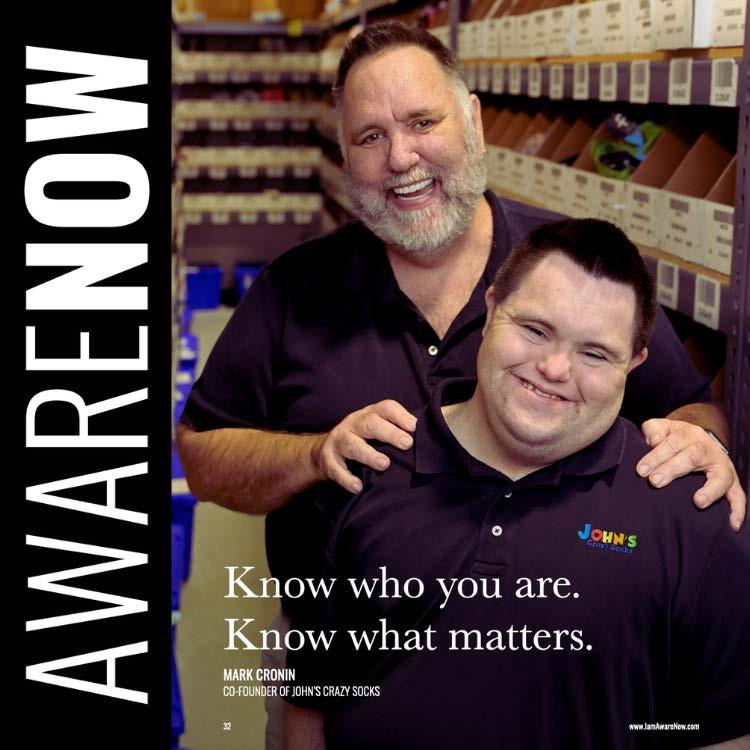

MARK: It's not like a dull brown, UPS or Amazon package. It stands out. Then you open it up. You get your socks. You get a handwritten note from John. And on the flip side of that, it tells you the story of John's Crazy Socks and tells you about the giving back. You get candy. And on the packing slip, you see the name and the picture of the person who packed your order because we are actual people. So, you're not just getting socks. You're getting this little dose of happiness. Just opening that package is going to make you feel good.
ALLIÉ: Just the story makes me feel good. And now I know what I’m getting everyone for Christmas this year.
MARK: Well, notice there's no rocket science here. There's nothing we're talking about that's really hard. It's just know who you are, know what matters. Pay attention and act on it.
ALLIÉ: There is one more question that I had for you today and it was for aspiring entrepreneurs, especially those facing limited options and feeling the societal expectations, what advice do you have for those wanting to create a path that's authentic to who they are, even when it means doing things differently? What advice do you have?
MARK: Well, I'll go first because I don't want to follow John. First, just do it. Particularly if you're talking about a business like ours where you're starting really small. Just take action. Stop thinking about it. Don't be focused on all the reasons why it's hard or why you can't do it. Focus on what you have to do to make it happen. Don't wait until everything is perfect. If you wait for it to be perfect, if you wait for the right time, you'll never do it. You'll never know enough. It'll never be the right time. And in fact, if you think about all the things you need to know to run a business, you'll never do it. Know who you are. It's okay. I hadn't worked in retail before. I hadn't worked in hosiery before. I'd never run a warehouse. That all turned out to be both a blessing and a bane. It is true that I had to learn things that people already knew, but it's also true that we took an approach that was different because we didn't know any better. So, we took a new approach. That's a virtue. Stop talking about it. Go do it. And if you're out in that audience right now and you need a little push or you need a little help, give me a call. We'll help you. What advice do you have, pal?
JOHN: Get up. Follow your heart. Follow your dreams. Work hard. Show what you can do.
MARK: Look, we're a couple knuckleheads selling socks.
JOHN: Yes, we are.
MARK: If the two of us can figure this out, imagine what people who know what they're doing can do. ∎



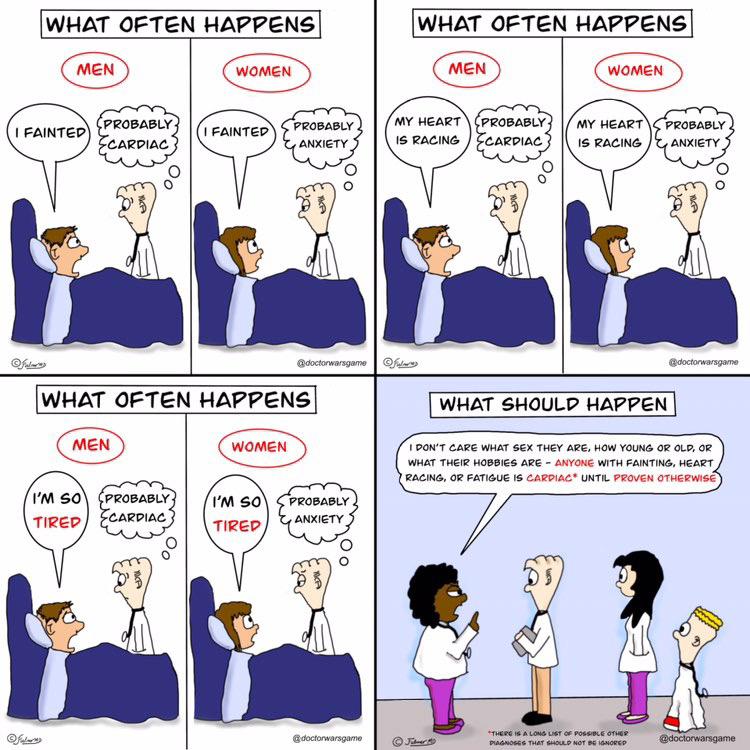




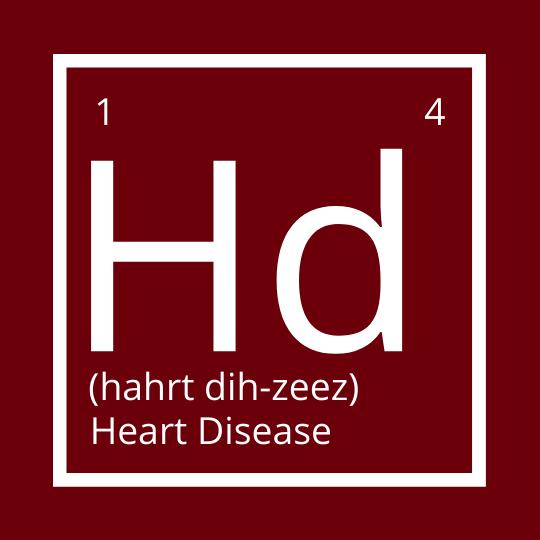
HeartCharged is taking a multi-faceted approach to combating the ignorance and inaction that is causing preventable deaths from cardiac conditions, especially in children, young adults, minorities, and women. To do that, they are asking everyone to Think Cardiomyopathy! Brilliant artists and advocates, such as Dr. Jim Fulmer, have already joined in.
To ‘Think Cardiomyopathy’ means considering a cardiac condition if someone (could be you) has fainting spells or dizziness, breathlessness, chronic fatigue, chest pains or discomfort, abnormal heartbeats, trouble keeping up with their peers, blue coloration of the skin, or unexplained weight gain. Even if someone has just one of those warning signs, we should Think Cardiomyopathy!
Too often and most usually when someone has almost any of those warning signs, people don’t know what to think. They themselves or others blow them off with the thought that ‘you’re fine’ or ‘that’s normal’. Instead let’s Think Cardiomyopathy, because untreated cardiomyopathy can be deadly and diagnosed cardiomyopathy can be treated. Getting checked for a cardiomyopathy is often as simple, painless, and non-intrusive as getting an EKG/ECG and perhaps Echocardiogram. Testing may show it isn’t a cardiomyopathy, then other diagnoses can be considered.
This comic exemplifies what needs to happen for real impact. Created by a male internal medicine hospitalist, who collaborated with two young females with delayed cardiomyopathy diagnoses, it represents the fact that people on both sides of the stethoscope need to Think Cardiomyopathy. The world at large needs to acknowledge cardiomyopathy and that it affects people of all ages, sexes, and nationalities. That way people will not be dissuaded by friends or family to seek medical advice. As well, we need healthcare professionals to continually consider cardiac and disprove, rather than ignore, it as a possibility.
When the founders of HeartCharged were unexpectedly diagnosed with hypertrophic cardiomyopathy in their teens, the doctor told Hannah she didn’t know how she hadn’t dropped dead yet. Just two years later, Hannah did ‘drop dead’ when she went into cardiac arrest in her sleep. But with the diagnosis, Hannah had been treated with an implanted defibrillator which brought her back to life. That’s why they want you to Think Cardiomyopathy, because that’s not usually how the story ends.
What you’re thinking about when you Think Cardiomyopathy is a disease that affects the heart muscle, making it difficult for the heart to pump blood. In the US alone, it is estimated 750,000 people have a cardiomyopathy with the majority being undiagnosed. Studies say from 1 in 500 to 1 in 200 people worldwide have a cardiomyopathy, with rates being higher in some countries. ∎

HeartCharged was founded by the sisters Bethany & Hannah Keime, AwareNow Ambassadors for Heart Disease Awareness. HeartCharged’s mission is to end preventable deaths from undiagnosed heart conditions and sudden cardiac arrest and to offer patient-topatient support. Please follow HeartCharged on Instagram and support their cause however you are able. It can be as simple as sharing a post and as impactful as supporting a project.
@heartcharged www.getheartcharged.org www.suddencardiacart.com thejolt@getheartcharged.org

PAUL S. ROGERS TRANSFORMATION EXPERT, AWARENESS HELLRAISER & PUBLIC SPEAKER
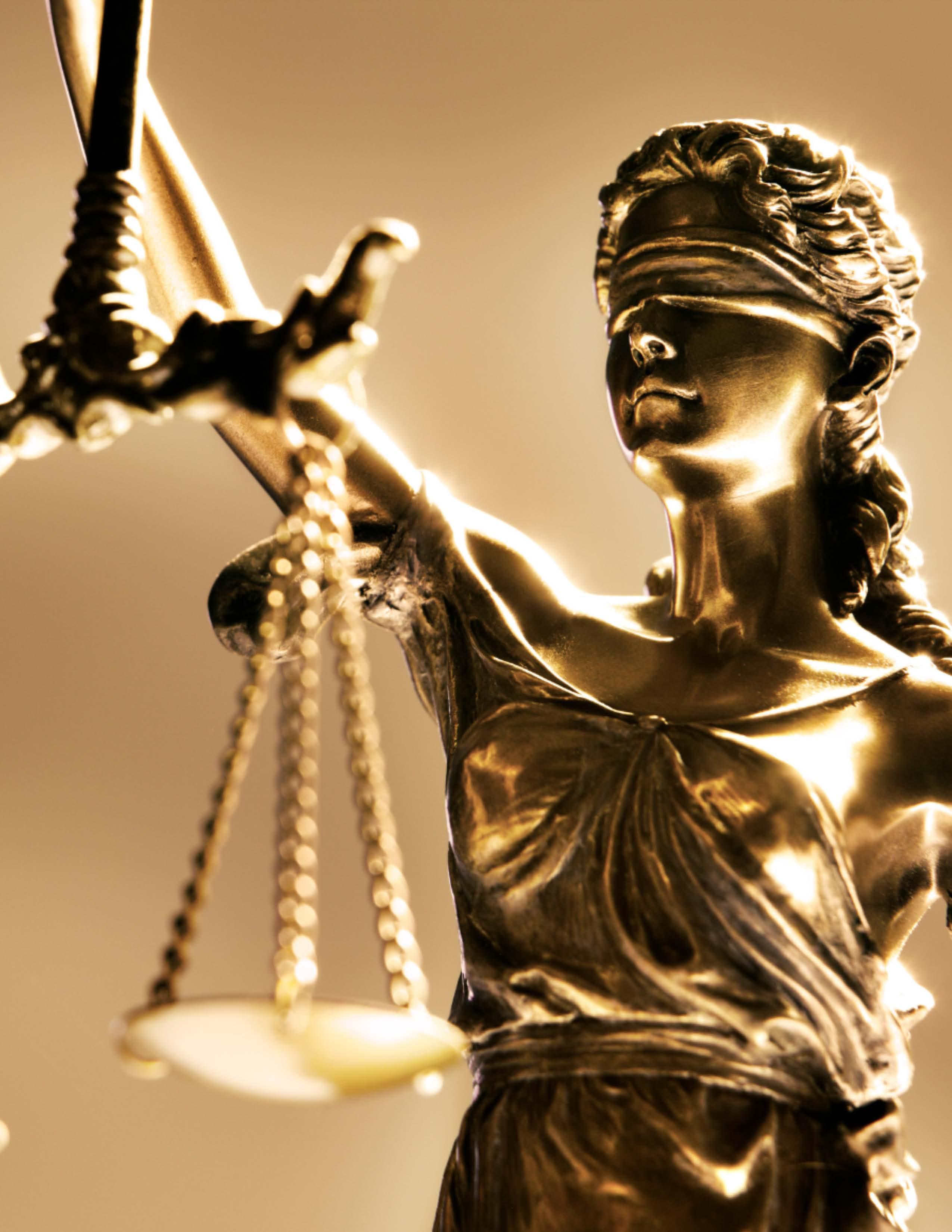

‘RELEASE THE GENIE’ EXCLUSIVE COLUMN BY
PAUL S. ROGERS


The term “woke” was once a rallying cry for social consciousness and justice, symbolising an awareness of systemic inequities and the importance of addressing them.
Over time, the term has taken on new connotations, becoming a weaponised buzzword polarising both political and cultural debates.
However, equating a sense of justice with “being woke” is a false and dangerous development. Justice is a foundational principle of human society, while “wokeness” has become a label that has strayed far from its original intent.
Societies across the globe, from ancient civilisations to modern democracies, have sought to build laws, standards, and institutions that ensure fairness and equity. To me, justice means holding people and systems accountable whilst protecting the vulnerable and an individual’s rights of due process with dignity.
A sense of justice is neither partisan nor trendy. It transcends political ideologies and cultural differences because it appeals to a shared human understanding of right and wrong. When children protest about unfair treatment on the playground, or communities rally against corruption, they act on an innate sense of justice.
It appears that the misconception of what justice is has been elevated by an epidemic lack of self responsibility. It always has to be someone else’s fault. The Holy Grail is always being right. The following quote by Dr. Wayne Dyer has never been so relevant:
“If you have the choice between being right and being kind, choose being kind”
Imagine, just for a moment, the outcomes of such a change… Justice is far from being a modern invention or a “woke” idea; it is the bedrock of moral and ethical progress. The word “woke”, in the hands of critics, has morphed into a catchall insult, often used to belittle social movements or dismiss conversations about inequality as frivolous or divisive.
This shift in meaning has created a false narrative. On one side are the individuals who care about issues like systemic racism or gender equality. On the other are those who are grounded in what they consider common sense or traditional values. This framing reduces complex societal issues to simplistic battles of ideology, obscuring the fundamental pursuit of justice at the heart of many “woke” causes.
What usually begins as a marginalised call for fairness often becomes mainstream over time, demonstrating that justice is a universal aspiration, not a fleeting cultural trend. Both Aristotle and Plato lived over 2000 years ago but recognised the importance of justice. Plato believed that justice is an intra personal phenomenon. Aristotle stated that a fundamental principle of justice is that “Equals should be treated equally, and unequals, unequally.” I would love to know what they would think and say if asked about “wokeness!”
AwareNow Podcast
Written and Narrated by Paul S. Rogers
https://awarenow.us/podcast/justice-is-not-being-woke


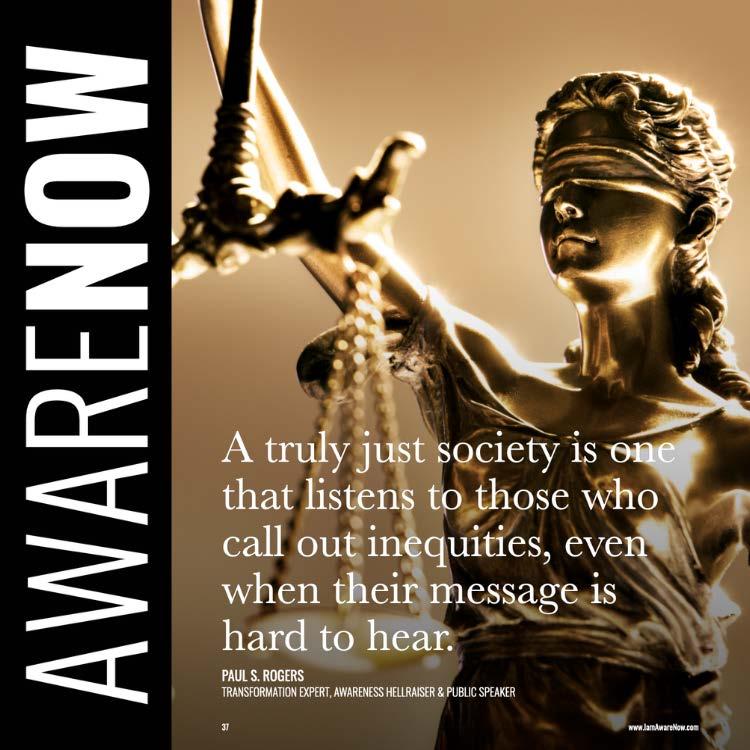
A great many of the rights we rightly celebrate and enjoy each day such as the right to free speech, movement, equality and protection from suppression started as an injustice. They have been crucial steps in our society’s development towards justice.
The path of pursing justice has been shown throughout history to take a huge amount of courage. It is never easy, and sometimes means being willing to stand alone. Unfortunately, progress is rarely achieved without discomfort. The abolition of slavery, the end of apartheid, and the expansion of voting rights all required people to challenge the status quo, sometimes at great personal risk.
Critics of “wokeness” often frame justice advocates as overreaching or hysterical, yet the alternative of complacency in the face of injustice is a far worse outcome. A truly just society is one that listens to those who call out inequities, even when their message is hard to hear.
Labelling justice-driven initiatives risks trivialising real and pressing issues. It creates an environment where meaningful discussions about systemic problems are shut down before they can begin. This dismissal is not just an intellectual failure; it is also a moral one. It belittles or even denies the events lived by those who face injustice, and prevents society from grappling with uncomfortable truths. Taking the easy path by rejecting inconvenient and dif ficult truths under the guise of opposing “wokeness” is a convenient way to hide fear.
To equate a sense of justice with “being woke” is to grossly misunderstand both concepts. Justice is a timeless and essential pursuit, demands the best version of ourselves to step forward to shape the world. “Wokeness”, in its weaponised form, is a passing trend and at best a distraction to dealing with the real issue: creating a fairer world. ∎

PAUL S. ROGERS
Transformation Expert, Awareness Hellraiser & Public Speaker www.awarenessties.us/paul-rogers
PAUL S. ROGERS is a keynote public speaking coach, transformation expert, awareness hellraiser, life coach, Trauma TBI, CPTSD mentor, train crash and cancer survivor, public speaking coach, Podcast host “Release the Genie” & best-selling author. His journey has taken him from corporate leader to kitesurfer to teacher on a first nations reserve to today. Paul’s goal is to inspire others to find their true purpose and passion.


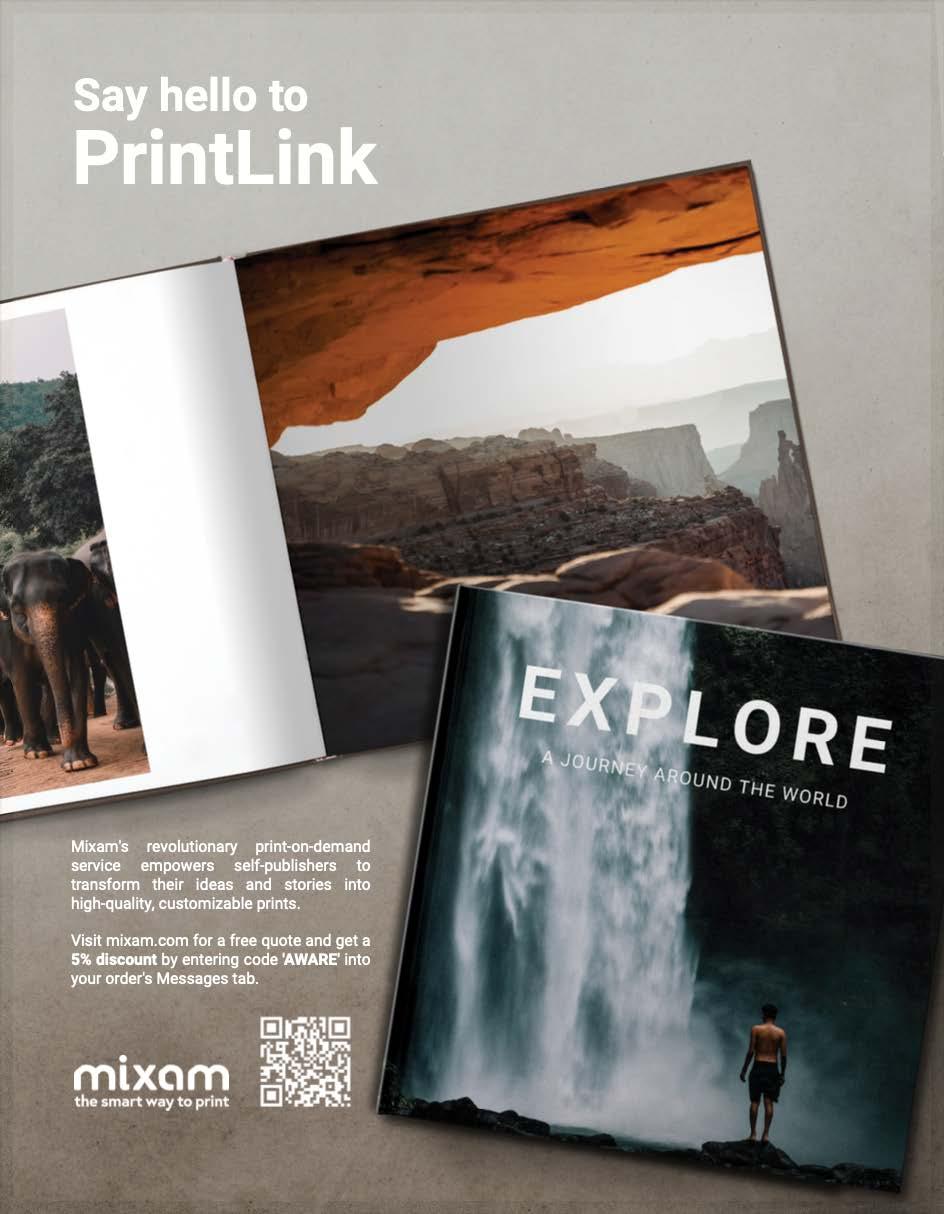
Charlie lost his ability to walk on his 13th birthday.


FEATURE STORY BY ERIN MACAULEY


For Barry Mone, the clock is ticking - in the worst way possible. His only son, 15 year old Charlie, was diagnosed with Duchenne Muscular Dystrophy (DMD) and Persistent Hyperplastic Primary Vitreous. DMD is 100% fatal as there is no cure. The average life expectancy for a boy with DMD is 26. Barry works so hard to raise awareness of this dark and cruel disease, often being published in Australian media outlets. In order to raise more awareness, Barry setup a Social Media profile called @FightingforCharlie, which has garnered global attention. I am honoured to interview him for my latest article.
ERIN: Can you explain what these diagnoses mean for Charlie?
BARRY: Absolutely life changing, everything from home life, home modifications.. School life with adaptations made at both primary & high school & life in general. The irony of returning to High School that also served as Charlie’s first school & we now know why Charlie struggled to climb the staircase that is the centrepiece of the school. The double irony is that the staircase is the foundation of the school, underpinned by 4 pillars that double as Lifts, Charlie now has a lift pass as the school is two level
ERIN: How old was Charlie when he was diagnosed with DMD with exon 3 duplication and PHPV?
BARRY: Charlie was diagnosed with PHPV when he was 3. DMD when he was 8.
ERIN: This condition is 100% fatal and has no cure, which must have been so shocking to find out. How did your family and more importantly Charlie, deal with this news?
BARRY: It was & still is devastating, it absolutely changed all our lives forever
ERIN: How does Charlie live with the fact he has a condition that has no cure?
BARRY: We take each day one day at a time. Eyes wide open, plan as much as possible, but everything is subject to change given the absolute unknown & uncertainty
ERIN: You started a Facebook page for awareness called ‘Fighting for Charlie’, and it’s garnered a lot of attention worldwide. How important is it for you to continue raising awareness of this horrible disease?
BARRY: We can’t look back and say what we could have done. Raising awareness is our mission. We do what we can.
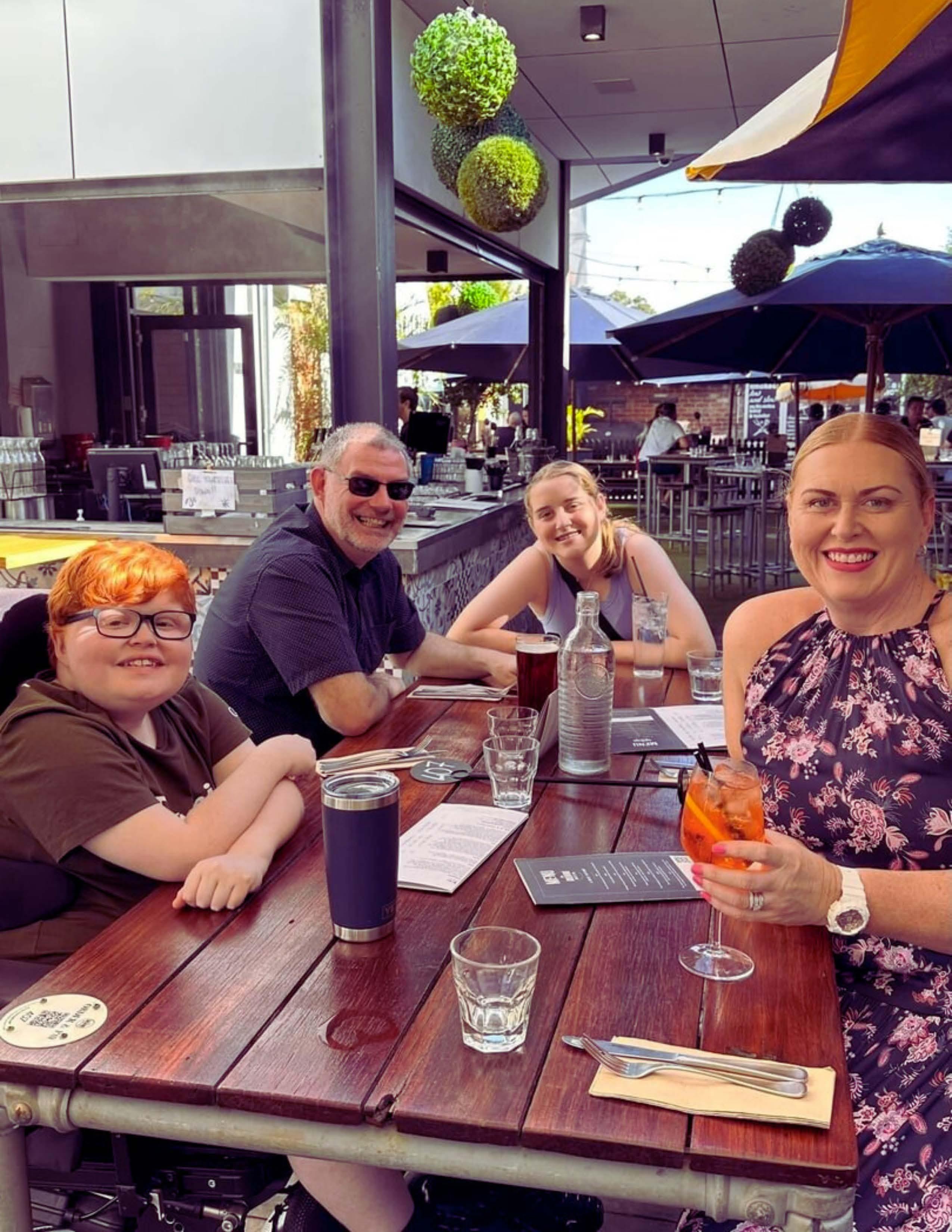


“We
ERIN: Can you explain what exon 3 is and what this means for Charlie’s diagnosis?
BARRY: Exon 3 duplication is absolutely unique to Charlie’s diagnosis. The Dystrophin Gene is the largest known human gene containing 79 exons they allow dystrophy to flow to allow the human body to function correctly, any deletion or duplication is the cause of DMD.
ERIN: Can you let us know what Duchenne muscular dystrophy does to the body and how it’s impacted Charlie?
BARRY: DMD is a slow and degenerative muscle wasting condition. The Gower manoeuvre is how young boys with DMD get up from the floor. The boys lose the ability to walk generally aged 10 to 12. Charlie lost his ability to walk on his 13th birthday. The limbs slow down, and it causes tiredness at any time of the day.
ERIN: Having your only son living with a fatal disease… how has this changed your outlook on life?
BARRY: Whilst I’m not a scientist and may never find a cure for DMD, raising awareness through sharing Charlie’s story has become my mission… to do what I can to raise awareness. We have one opportunity to get this right. We do what we can. ∎
Find ‘Fight for Charlie’ on Instagram: @fightingforcharlie Support Charlie via GoFundMe: https://awarenow.us/support/charlie

ERIN MACAULEY
International Director of Advocacy for #SameHere Global www.awarenessties.us/erin-macauley
ERIN MACAULEY is passionate about all things mental health and is a compassionate voice for those who are struggling with mental illness. Driven to help those most in need, through her vulnerable and open blogging about her own personal struggles, she lifts up others up and gives them hope.
JACK MCGUIRE CO-FOUNDER OF AWARENOW MEDIA
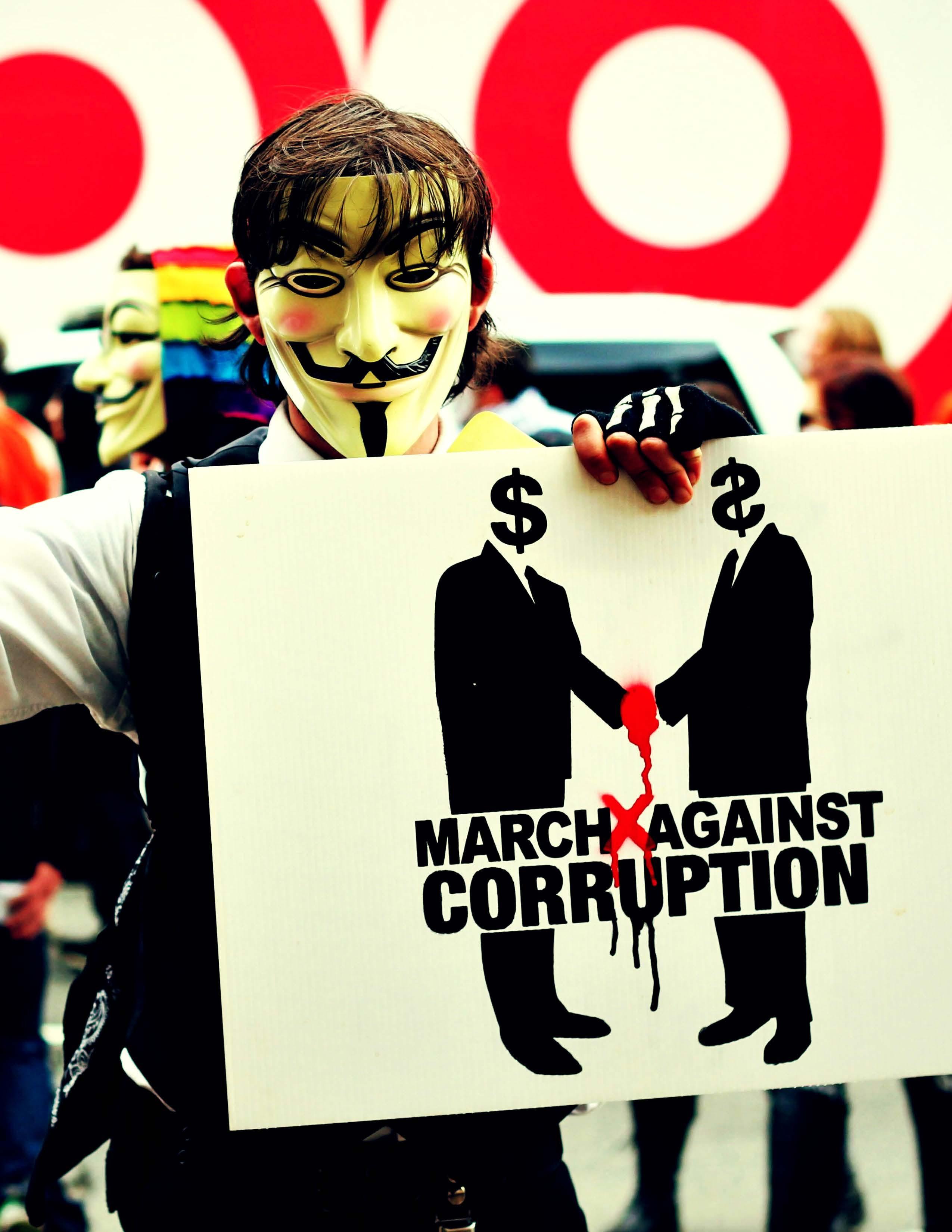

ORIGINAL POEM BY JACK MCGUIRE


The song "The Revolution Will Not Be Televised" by Gill Scott-Heron was recorded in 1971, some 50 years later it is just as relative or even more so now, I took his lyrics and applied them to the events today. So much is going on in our world that isn’t being “televised”.



The revolution will not be streamed.
You will not see it on X in between Billionaire memes and AI Jesus. You will not be force-fed its headlines By an algorithm trained to sell you silence.
There will be no emergency alert For the fall of the working class. No breaking news banner For the eviction of the middle class. No congressional hearings For the dismantling of Congress itself.
You will not be notified When social security gets privatized, When pensions get liquidated, When the last union vote is cast in a factory That no longer exists.
There will be no viral clip of democracy dissolving, No influencer brand deal to save the poor. There will be no lobby for the hungry, No bailout for the sick, No Mars colony for the minimum wage.
The revolution will not be streamed.
Fox News will not break it down in 4K. Joe Rogan will not find the nuance. Ben Shapiro will not talk faster than your outrage, And Jordan Peterson will not tell you to clean your room While the room itself gets repossessed.
You will not be able to mute Robert F. Kennedy Jr. As he tells you Big Pharma is the enemy While signing over Medicare to private hands. You will not be able to fast forward Through Kash Patel dismantling the DOJ. You will not be able to rewind To when the Constitution still mattered.
The streets will be filled, But not with self-driving cars. They will be filled with the evicted, The uninsured, The unwanted.

You will not be able to opt out, Or upgrade to a premium existence. The terms and conditions will apply to you. Your rent will rise but your wage will not. Your job will disappear but your debt will not. Your rights will vanish but your taxes will not.
The revolution will not be funded by Super PACs. It will not be traded like a stock, Or mined like a token. It will not be monetized, monetarized, Or monopolized by Musk.
The revolution will not be streamed. It will not come with a content warning. It will not be deepfaked, Nor crowd-funded on GoFundMe.
The revolution will be live. It will be in the streets, It will be in the schools, It will be at the ballot box, And it will not ask for permission.
The revolution will not be streamed. The revolution will be real. ∎
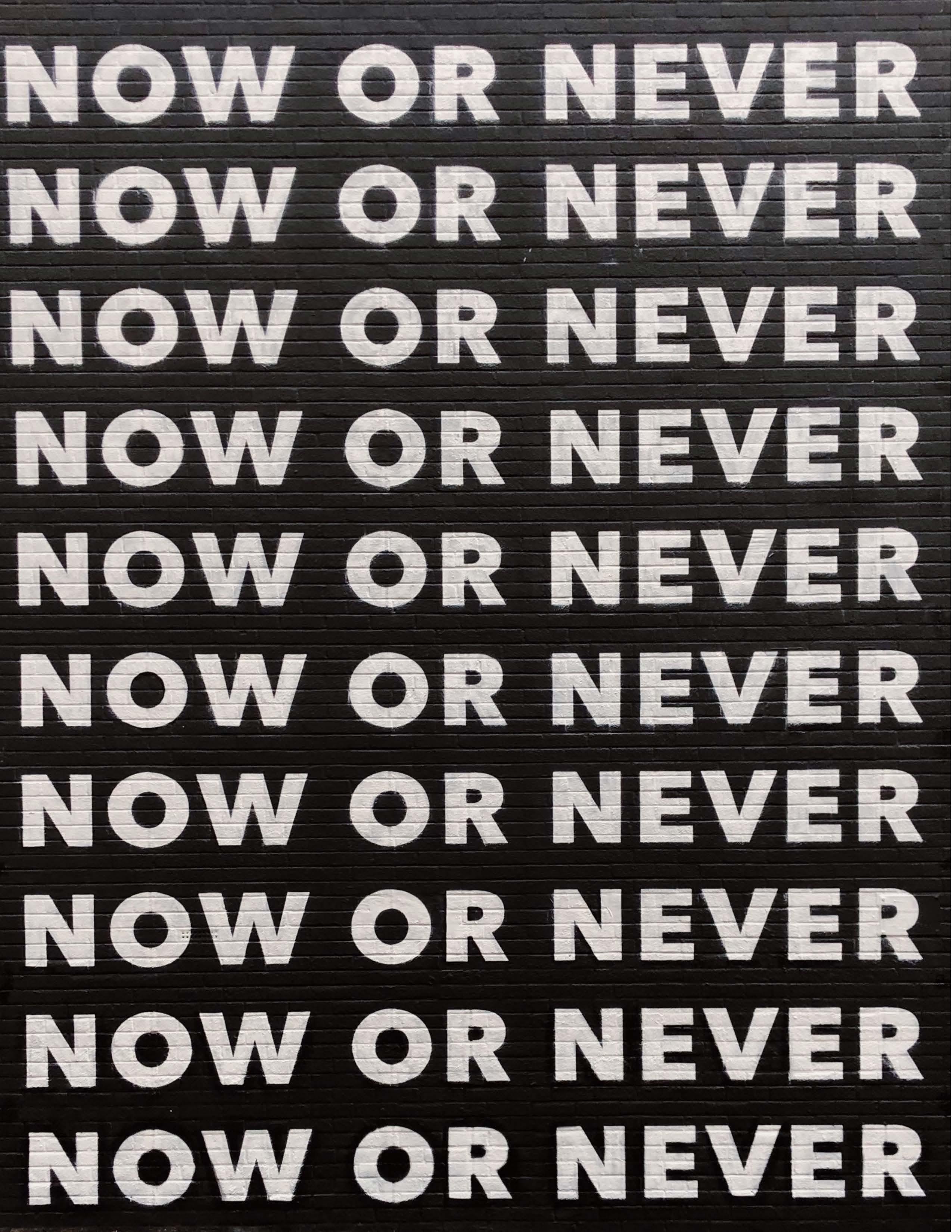
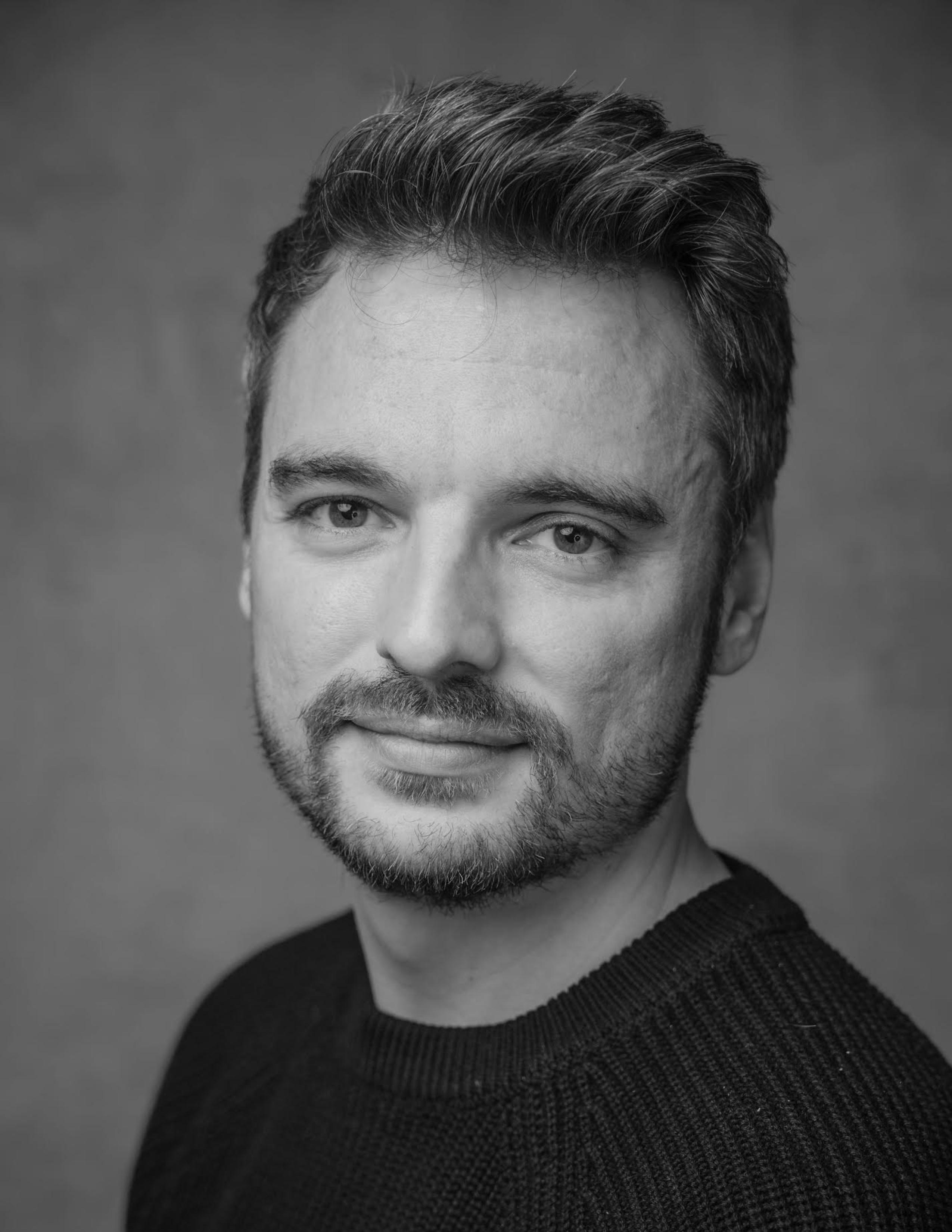


In my experience, untreated psychosis tragically resulted in violence.
COHEN MILES-RATH
FORTHCOMING AUTHOR, MENDING REALITY: AN ADVOCATE’S EXISTENTIAL JOURNEY WITH MENTAL HEALTH


This personal story comes to AwareNow from Cohen Miles-Rath, forthcoming author, Mending Reality: An Advocate’s Existential Journey with Mental Health.
On April 11, 2016, I tried to kill my dad. I had no choice because the universe told me that the devil was inside him. He had to die.
This delusional thinking did not appear overnight. For weeks, I had thought I was a Prophet and had cracked the code of existence. I was destined to save the world from evil.
On that day in April, I believed my dad was evil. He wore a black shirt and pants under his truck-driver uniform. As I paced around our home, he howled, “Why didn't you go to school or work?” His cheeks turned red as he shouted.
Colors mattered — my dad’s black clothes, his red cheeks. The signs were obvious. Kill him — the devil — to save humanity. I could not stomach it. As I paced the house, I slapped my head and shouted, “This can’t be the next step, this can’t be the next step.” But since it was the ultimate test from God, I went to the kitchen and found a knife.
Violence and mental illness are often discussed together. A 2016 study from the Johns Hopkins Bloomberg School of Public Health reported that over a twenty-year period nearly 40% of news stories from a sample of “highviewership media outlets” discussed mental illness in connection to violence against others. Earlier this year, as New York tried to understand another fatal incident with subway pushing, and leaders grappled with the issue, the New York Times Opinion published three articles within one week that connected mental illness and violence.
It’s upsetting how often these topics are presented together in the media, yet, perspectives from people like myself, whose mental illnesses have resulted in violence are scarce or never in the mainstream. I get how complicated the issue is as the causes of violence are myriad. But the automatic assumption that mental illness leads to violence limits the more nuanced and in-depth discussion we need to have.
I began experiencing serious mental illness months before attacking my dad. I had been hospitalized twice. I careened around my town, driving 100 miles per hour because I believed the universe protected me. I texted my exgirlfriend “You have to marry me” because I thought marrying her was the next step in my mission. I even believed I achieved telekinesis when I stared at a piece of dog hair and saw it move.
Sadly, violence was the eventual result of my delusions and hallucinations. Had I received effective early treatment, my father's life would not have been in danger. What made my hospital stays ineffective in treating my illness? What made it difficult for my family and friends to recognize the signs of my mental illness? What prevented me from being aware of the challenges I faced? These questions should be the focus if we are to intervene effectively for those suffering with serious mental illness.
We have heard that larger systemic failures prevent people from getting the treatment they need before a crisis. But when news articles only discuss these issues in the context of violence, failures of our mental health system are often overshadowed by sensationalized incidents that are, overall, infrequent. Sensationalized reporting contributes to stigma, which spawns fear of people experiencing mental illness.


AwareNow Podcast MENTALLY ILL &
Written
by
Cohen Miles-path
& Narrated by
Allié McGuire
https://awarenow.us/podcast/mentally-ill-and-violent

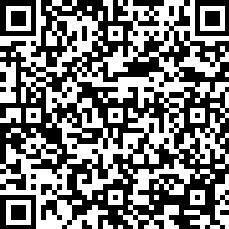



“A violent act should not be the only reason we have conversations about improving our mental health approach.”
In my experience, untreated psychosis tragically resulted in violence. I did not kill my dad. But I was close. At one point, I had the knife’s tip at his throat. Only his thumb blocked it from puncturing. Only millimeters separated his life from death, and mine from the torment of killing someone I loved so much. Even now, eight years later, a Google search of my name reveals news articles about the incident. The articles detail how I attacked my dad with a knife and how I bit off a chunk of his ear. But what they do not describe is how attempts to treat me failed long before the incident happened. Violence overshadowed any discussion about the systems that failed me and my family.
A violent act should not be the only reason we have conversations about improving our mental health approach. Incidents like mine are infrequent, but serious mental illness involving psychosis impacts millions of people every day. For their sake, we need to have these larger conversations about systemic change more often than when an isolated violent act occurs. We need to talk about their suffering and neglect, and as an ethical society, work towards compassionate and effective solutions.
Since the incident, I have managed my mental illness. I have embraced treatment. I have earned a master’s degree in social work and am passionate about sharing my story to change how we perceive mental illness. My dad and I have a strong and healthy relationship, and he continues to be the loving father I have had since I was young. Together, we overcame the challenge of my psychotic episode. This was a challenge we should have never had to face. ∎
Find Cohen on Instagram: @cohen_miles_rath And find his book online: https://awarenow.us/book/mending-reality

We are the voices for those living with and dying far too young from serious brain disorders (SBD). Our nonpartisan alliance of family members, individuals suffering from SBDs, professionals in the trenches, and caring people, all united to ensure brain illness, health, and criminal justice systems count those with SBDs, and their families in all federal, state, and local policy reforms. It was our founder, Jeanne Gore, who casted the vision for achieving social, political, and healthcare changes for compassionate and equitable treatment for ourselves and our loved ones. We dedicate this site to her and the lasting effect of her gracious and generous life. We continue to raise awareness and progress with this monumental fight to ensure proper approach and treatment of those with SBDs. Become a member today and help us move the needle and shatter the silence.
They bear the heavy burden of watching their people’s erasure while living in a world that silences their voices.
AALIA LANIUS NOVELIST, SPEAKER, PODCAST HOST & SOCIAL ENTREPRENEUR
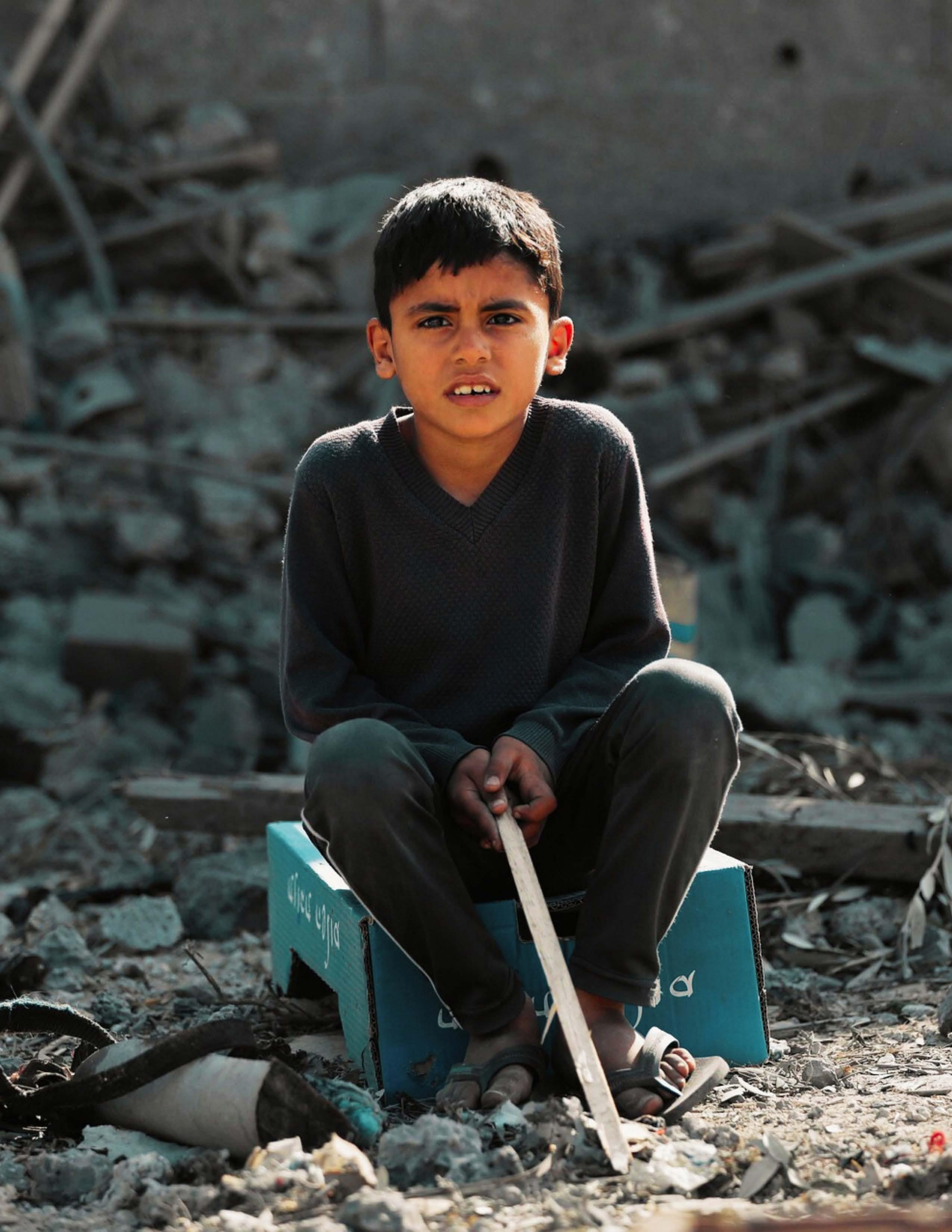



Injustice leaves scars—not just on individuals, but on cultures and the very fabric of humanity. The genocide in Gaza, which between October 2023 and January 2025 has claimed over 300,000 lives—most of them innocent women and children—is an indelible wound. Watching it unfold in real-time has been an unbearable agony, compounded by the blatant denial of Palestinians’ right to defense and justice by Western media.
For those witnessing from afar, especially for American Palestinians like my children, the experience has been uniquely harrowing. They bear the heavy burden of watching their people’s erasure while living in a world that silences their voices. It’s a cruel paradox: to have the freedom to speak yet be drowned out by a chorus that denies your humanity.
In Embracing International Day of Peace: A Call for Unity Amongst Humanity, published by AwareNow in September 2023, I shared my personal encounter with Israel’s collective punishment in Lebanon. Reflecting on those experiences, I am reminded that justice, when it follows the denial of humanity itself, demands not just accountability but a reclamation of identity and dignity.
The atrocities in Gaza are not isolated. They are part of a recurring playbook: dehumanize, dispossess, erase. From Native Americans branded as savages to justify colonization, to Arabs vilified as backward to rationalize occupation and genocide, these narratives persist because they enable power structures to evade accountability. For the past 15 months, I have borne witness to horrors that defy comprehension. Children taking their last breaths, mothers cradling lifeless infants, NICU babies dying alone in incubators, entire families obliterated. I have seen the starving, the maimed, and the brokenhearted. I’ve watched as people, desperate and defenseless, were treated like fish in a barrel, terrorized daily without reprieve. I saw a baby blown from its mother’s womb.
And I did not look away.
If you are an American familiar with our colonial history—the theft of Indigenous lands, the erasure of Native cultures—then you recognize what is happening to Palestinians. They are the modern-day Indigenous, forced off their land and denied their identity to clear the path for others’ ambitions.
In law school, I learned a harsh truth: justice is not the foundation of legal systems; power is. Laws are tools, often wielded to protect the powerful and marginalize the vulnerable. This reality underscores the urgency of dismantling systems that perpetuate oppression and rebuilding them in the pursuit of true justice.
Justice, in its purest form, is the restoration of balance—a reckoning where wrongs are righted, and fairness prevails. But too often, it is distorted by power, politics, and prejudice.
AALIA LANIUS NOVELIST, SPEAKER, PODCAST HOST & SOCIAL ENTREPRENEUR
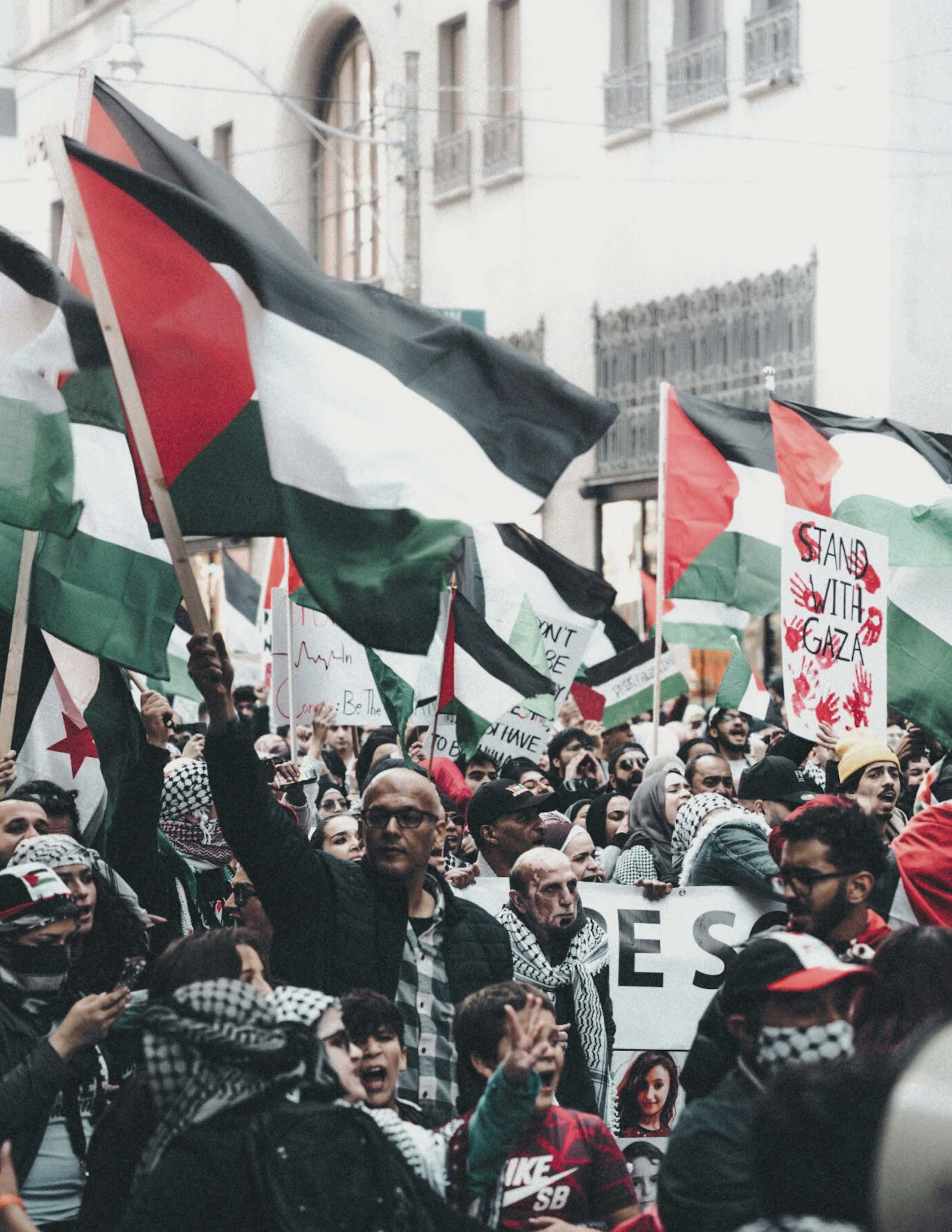


“When compassion is reserved for those we identify with, entire communities are left in the margins.”
Theoretical Justice: Philosophically, justice is tied to virtues like fairness, equity, and righteousness. It is the foundation of moral societies, a beacon of hope for the oppressed.
Practical Justice: In reality, justice is transactional. It is manipulated by political agendas, economic interests, and cultural biases. Instead of shielding the vulnerable, it often becomes a weapon for the powerful.
Systemic Flaws: Legal and judicial systems prioritize bureaucracy over morality, often bending laws to serve the powerful.
Dehumanization: Stripping victims of their humanity allows societies to ignore their suffering.
Impunity: Without accountability, injustice thrives.
Selective Empathy: When compassion is reserved for those we identify with, entire communities are left in the margins.
Religion is often a paradox: a source of guidance and inspiration, but also a tool for exploitation. Over time, I’ve realized that it is not religion itself but our moral compass that defines goodness.
Ethics offer a framework for how we ought to live, but it is our morals—shaped by empathy and integrity—that compel us to act. If we truly value justice, we must confront and condemn the obliteration of human rights. The genocide in Gaza is not just an atrocity; it is a call to close the chasm between ethical codes and moral accountability.
Justice for Gaza cannot be achieved through courts or ceasefires alone. It requires a reckoning—a dismantling of systems of oppression, an amplification of Palestinian voices, and the restoration of their humanity. It means holding perpetrators accountable and challenging the narratives that justify these crimes.
Can justice exist without empathy?
How do we reconcile the ideals of justice with its absence? What role does collective action play in achieving justice?
“The
As of this writing, a fragile ceasefire has been brokered, but even within minutes, Israel violated its terms, resuming its terror. In the West Bank, pogroms are targeting Palestinians with impunity, and the threat of further expansionist violence looms.
Justice for Gaza is not a distant dream; it is an urgent necessity. It is the only way to honor the lives lost and ensure history does not repeat itself. For Palestinians and the broader Levant, justice must mean liberation, dignity, and security—not just for today but for generations to come.
Through the unimaginable pain of the past 15 months, one truth remains: the resilience, courage, and faith of Palestinians shine as a testament to the unbreakable spirit of humanity. They have faced unimaginable horrors yet clung to their identity, their community, and their hope.
To my American counterparts: the karmic price of complicity is too high. Justice demands recognition—not just of this genocide, but of the long history of erasure and occupation. The Nakba was not an isolated tragedy; it was the beginning of a systematic injustice that continues today.
The question now is not whether justice is possible, but whether we have the courage to demand it, to fight for it, and to stand in solidarity with those who have been denied it for far too long.
History will remember our choices. Let us choose humanity. Let us choose justice. ∎

AALIA LANIUS Producer, Award-Winning Writer & Host
www.awarenessties.us/aalialanius
AALIA LANIUS is an International Multiple-Award Winning Novelist, Executive Producer, Publisher and host of the award-nominated globally top-rated social good show, UNSUGARCOATED with Aalia. As founder of UNSUGARCOATED Media, a 501(c)(3) media enterprise, Lanius is creating social impact through storytelling while building community, providing education, and ending isolation for trauma survivors. Aalia's role extends to leadership as a creative, and she is considered a thought-leader in approaches to media, believing that artists are pioneers of the human mind with great potential and responsibility to positively in fluence society through proper representation and accountability.


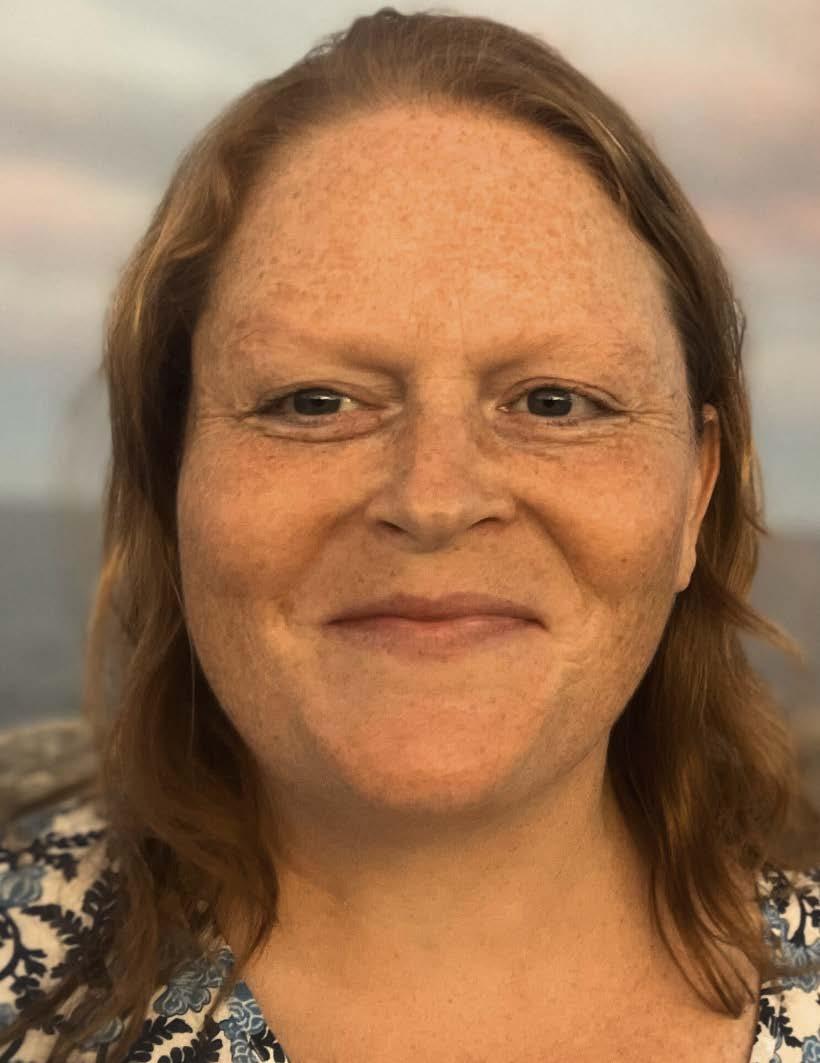

‘FELLOW


The Face It Movement, led by Kosair for Kids and supported by Kentucky Youth Advocates, is dedicated to ending child abuse in Kentucky. Kosair for Kids plays a crucial role in implementing prevention initiatives and providing vital resources to protect vulnerable children. Through collaborative partnerships, including Artists For Trauma, the Face It Movement is creating lasting change and ensuring every child has the opportunity to grow up in a safe and nurturing environment. This interview is with Debbie Abreu, representative of the Face It Movement with Kentucky Youth Advocates.
LAURA: Can you share what the Kosair for Kids Face It Movement is and how it evolved?
DEBBIE: The Face It ® Movement launched in 2013 as an initiative led by Kosair for Kids® in response to the number of child abuse deaths in the Commonwealth of Kentucky. Face It directly addresses the unacceptable incidences of child abuse and neglect in Kentucky with the promotion of best practices in child abuse prevention and intervention, building awareness and engaging the community, and advocating for effective policies to improve the systems that keep kids safe.
LAURA: What specific steps is the Kosair for Kids Face It Movement taking to prevent and address child abuse in Kentucky?
DEBBIE: The Face It Movement is built on the action of many towards one big goal: to end child abuse in the Commonwealth of Kentucky. With over 165 partners, Face It aims to drive organizations, small businesses, colleges and universities, and individuals across Kentucky to action by providing clear ways they can engage in child abuse and neglect prevention. The Four Cornerstones of the Face It Movement shape the direction of the work by providing structure and creating opportunities to engage a broad array of individuals and groups. We Galvanize Unlikely Allies by connecting unexpected individuals to the Face It Movement, folks who do not work on child abuse prevention on a daily basis – such as your hairdresser or auto mechanic. We Deepen Partner Capacity by ensuring Face It partners have access to training, technical assistance, and collaborative support to prevent abuse. We Face the Facts by sharing the most up-to-date research and data to address child abuse and neglect. And we Bolster Parent and Caregiver Connections by strengthening parents and caregivers through community connections and reducing isolation and stress within communities.
By working with state and local leaders, Face It creates and strengthens policies that improve government systems to prevent or mitigate child abuse. We institute best practices with partners by providing education, training, and technical assistance around prevention, recognition, responding to, and reporting abuse. Community awareness and education ensures all adults recognize the warning signs of abuse and neglect and know how to report it, and we provide the community with resources to support parents and caregivers to prevent abuse from ever occurring.





“Child abuse impacts every community, including many people we know and love…”
LAURA: How does the partnership between Artists For Trauma and the Face It Movement amplify the impact and awareness of child abuse prevention efforts?
DEBBIE: Artists for Trauma became a Face It partner after participating in The Art Of Healing event we hosted in Louisville, Kentucky as part of April as Child Abuse Prevention Month. The purpose of the event was to raise awareness of child abuse and the long-term effects it leaves, to show support for child abuse survivors, and to highlight how creative expression can be helpful in the healing journey.
The Art Of Healing is a beautiful example of the power of partnership! This event, co-sponsored by Fund for the Arts, included performances by four local artists and 15 interactive stations that incorporated art, music, and movement. Artists for Trauma, along with other Face It partners Jewish Family and Career Services, Side by Side Studio, Steam Exchange, and Tip It Forward played a vital role in helping plan and promote the event.
Child abuse impacts every community, including many people we know and love, and it can be dif ficult to find the right words or actions to express what one has gone through. Creative expression can provide a safe space to process and express traumatic experiences and emotions that are difficult to put into words.
In December, Artists for Trauma provided a Holiday Stencil & Street Art Workshop for the residents at Home of the Innocents, a Face It partner that provides residential and community-based behavioral health services, therapeutic foster care and adoption services, and more. This event provided youth a fun and healthy outlet with opportunity to discover and exercise their voice. Artists for Trauma is dedicated to providing interactive and adaptive healing through art, music, and wonder experiences to empower the mental, physical and emotional well-being of survivors of trauma. We will continue to find creative and meaningful ways to connect with Artists for Trauma and other partners to use their strengths and expertise to impact children and families.
LAURA: Can you share why being part of the Kosair for Kids Face It Movement is important to you? What impact has it had on your life and your community?
DEBBIE: Face It is important to me because I have seen the devastation of child abuse and see the need for preventing it. Child abuse impacts every community - the latest data shows that in Kentucky nearly 14,500 children experienced abuse or neglect in 2023.
Many of us find the work we do because it resonates with us for some reason, either our own experience or someone close to us. My connection to Face It is personal. I experienced sexual abuse from the age of 5-12 yrs old by a family member. I had no idea how much this impacted my life until I was well into my adult years. I always felt there was something wrong with me, but I didn’t understand why. At my core, I knew what the root cause was, but I couldn’t fix it….because I couldn’t talk about it. I wanted to help other people, to prevent them from feeling the way I did.
DEBBIE: (continued) Child abuse brings with it shame and silence, which spills over into adulthood. Becoming an adult doesn't erase the trauma of past abuse. I learned from a young age to keep quiet, stuff my emotions, and to keep the peace by making others happy. I grew into an adult who was emotionally and physically numb. It took many years of undoing, peeling back layers, replacing lies with truth, and getting to know myself to learn I have value and worth. Art journaling, breathing exercises, expressive writing, and being in nature have become part of my healing journey. The journey is still challenging, but I've gained the ability to prioritize self-kindness and acknowledge the value of taking care of myself.
Being part of the Face It Movement has been life-changing for me. It has empowered me and helped me find my voice. To be allowed to talk about child abuse openly is especially empowering for someone who was victimized and forced to remain silent. What I have experienced in my life is no longer something that can be held against me, but it is the fuel that pushes me forward. It gives me purpose.
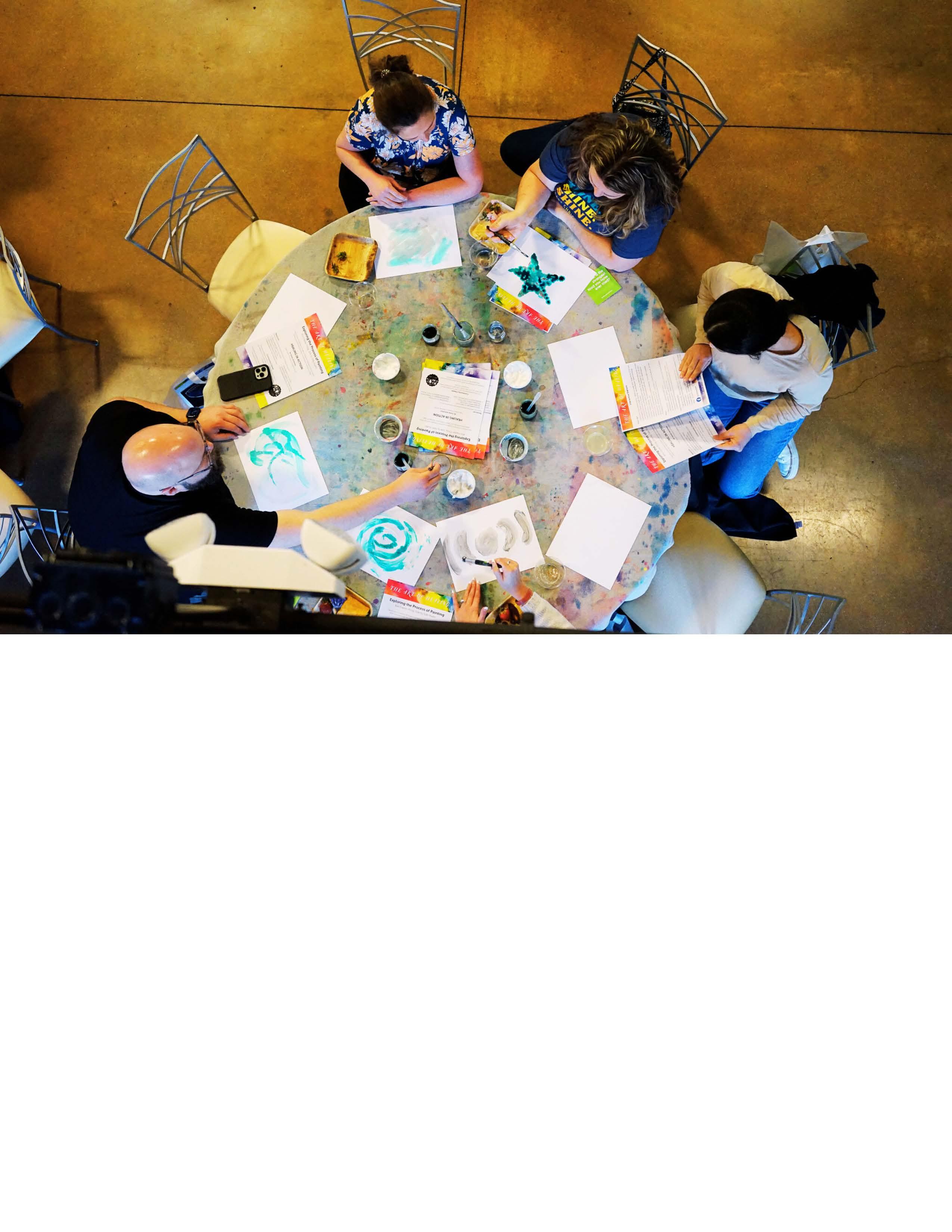


LAURA: What do you see as the most urgent needs for the Face It Movement today, and how can individuals and communities get involved to make a meaningful impact?
DEBBIE: The Kosair for Kids Face It Movement encourages every person to recognize the role they can play in preventing child maltreatment and supporting the survivors of child abuse in our communities. When thinking about child abuse, it impacts not just the child and family but the broader community. Trauma has long-term health implications and a history of trauma impacts education and employment success. Nationwide, abuse victims incur $19 trillion over their lifetime in costs for treatment, remediation, and support.
As an individual, organization, or business owner here are some ways you can help prevent child abuse:
1. Support a Family-Friendly Environment. Child abuse and neglect happens in all types of families. Ensuring families feel supported by their communities can go a long way in reducing risk. By reducing family isolation and stress, promoting help-seeking like therapy or drug counseling, and accessing concrete supports can boost family well-being and ultimately prevent child maltreatment from occurring.
2. Create a Culture of Care. Building a community with those around you has many benefits, including reducing isolation and stress among parents. A community culture that promotes relationship building and a feeling of belonging helps to create protective factors in the home.
3. Recognize When Your Friend, Neighbor, or Family Member is Struggling. Simple acts of kindness can go a long way, especially for parents – help loading groceries for the parent with a toddler in tow, drop off a meal for the parents who just welcomed home a new baby, or send a “just checking in” text to the parent of a teen.
4. Learn How to Defuse Challenging Moments. Tantrums or frustration inevitably happen between caregivers and their kids. Helping to lower the temperature can make a big difference in these challenging moments, such as offering a small signal of “I got your back” to show empathy and help the parent feel less scrutinized.
5. Make it a Priority. Talking about child abuse is one of the easiest, yet hardest ways to make a meaningful impact. Easy, because anyone can have a conversation. Hard because it may feel uncomfortable or awkward. But this is what is needed to break the silence and stigma of child abuse. Spreading general awareness by having conversations.
Child abuse is often kept hidden, leaving the child silent and full of shame. That is unacceptable. We need to be bold and willing to have courageous conversations, shining light on topics that some want to keep hidden. It is better for me to be uncomfortable, than a child to feel siloed or embarrassed by something that was done to them. By acknowledging and talking about difficult things we offer hope and open the door to change. ∎


LAURA SHARPE
For more information about how YOU can play a role in child abuse prevention, visit faceitmovement.org.
Artists For Trauma Founder & Chief Executive Officer, Trauma Survivor & Artist www.awarenessties.us/laura-sharpe

LAURA SHARPE contributes to AwareNow with her exclusive column, ‘Fellow Travelers’. Trauma, tragedy and miracle are all part of the life process. They do not discriminate nor are they fairly distributed. Simultaneously they occur across all diverse cultures, countries, colors, ethnicities, genders, religious beliefs, and dimensions of time and thought on planet Earth. In this process of life, birth and re-birth; decay and destruction are integral to creating new life. As fellow travelers, we are mindful, compassionate, and intentional through our attitude and actions to one another. We share our authentic personal story of survival or service to offer relatability, respect and hope to others who are navigating intense physical, mental and emotional life impact. Uncomfortably or joyfully, we share the range of human emotions related to our personal trauma or miracle. In the end or the new beginning, we learn we are all fellow travelers.
Mankind has proven resilient throughout history, but no one rebuilds alone.
ANDREW GARCIA
FIRST RESPONDER, DETECTIVE & CEO OF SYNDICUS DEFENSE CORP
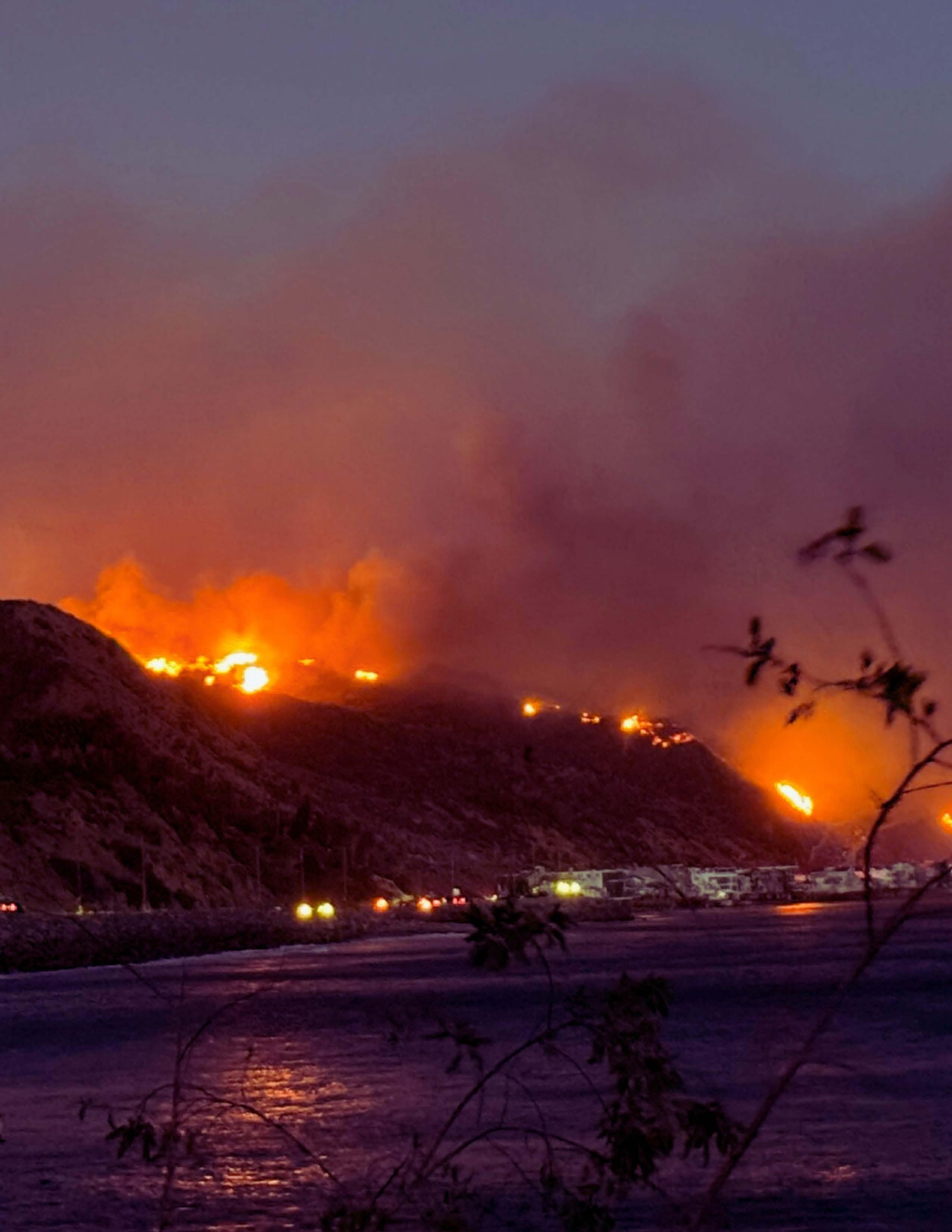



In times of crisis, heroes emerge—not in capes, but in uniforms and with purpose. Andrew Garcia, a 35-year-old detective and CEO of Syndicus Defense Corp, has been on the front lines of LA’s devastating fires, working tirelessly to protect and serve his community. Balancing his roles as a first responder and an innovator in public safety technology, Andrew’s story is one of resilience, vision, and an unshakable commitment to making a difference.
ALLIÉ: You’ve been out there on the front lines during these fires, seeing the destruction up close and helping people when they need it most. What’s one moment that’s stuck with you—something that really hit home about why you do what you do?
ANDREW: One moment that truly hit home for me as a first responder during these fires was witnessing the stark contrast between life and loss. Not long ago, I saw Malibu alive with vibrant restaurants, thriving businesses, and the unmistakable energy of a community at peace. Just days later, those same places were reduced to ashes, a heartbreaking reminder of the fragility of what we cherish. Yet, amidst the devastation, the resilience and compassion of people shone through. Strangers united, offering unwavering support to one another, pushing forward even when hope seemed distant. As someone who has spent years in law enforcement and public safety, this unwavering humanity reaffirms why I do what I do: because in the face of destruction, the human spirit has the power to rebuild and inspire, and being part of that is an honor I’ll always carry.
ALLIÉ: You’re juggling being a detective and running Syndicus Defense Corp—it’s not exactly a 9-to-5 life. How does what you see and do as a first responder shape the way you run your company? Does one side of your work ever inspire the other?
ANDREW: Balancing life as a detective and running Syndicus Defense Corp is far from conventional, but my career in law enforcement is the foundation of everything I do with my company. Over 13 years, I’ve experienced tragedy, loss, and triumph, which have fueled my passion to protect and empower others. Syndicus Defense Corp is an extension of that mission—a defense company dedicated to helping people. From teaching situational awareness to families and single mothers in Los Angeles to developing advanced drones and arti ficial intelligence, my work as a first responder directly shapes our innovations. For example, our drone, JARVS, leverages AI to identify weapons in crowds and assist in search-and-rescue missions, addressing challenges I’ve faced firsthand. My career has shown me the harsh realities of the world, but it has also inspired me to create tools and training that give civilians and law enforcement the knowledge and technology to fight back, save lives, and stay safe.
ALLIÉ: With these fires and all the chaos they bring, it feels like being prepared can make all the difference. Your company’s drone tech is pretty cutting-edge. How do you see tools like that changing the game for first responders when it comes to disasters like this?

Rebuilding after a devastating fire goes far beyond restoring homes—it’s about restoring hope and community.
ANDREW GARCIA
FIRST RESPONDER,
DETECTIVE & CEO OF SYNDICUS DEFENSE CORP



“One of the most powerful things I’ve witnessed in Los Angeles is the way people have come together, transcending social and financial boundaries, to support one another.”
ANDREW: Tools like our drone, Jarvis, have the potential to revolutionize how first responders tackle disasters like wildfires, where time is critical and resources are stretched thin. Traditional methods like helicopters are costly, slower, and often limited in their coverage. With Jarvis, we can deploy hundreds or even thousands of drones in a coordinated grid pattern to rapidly scan large areas using AI to identify signs of human life or distress. When Jarvis detects a person, it can immediately provide precise coordinates and live footage to command posts, enabling faster, more targeted rescue operations. This not only reduces response time but also maximizes ef ficiency in saving lives. Beyond deployment, continuously improving and adapting this technology ensures we stay ahead in disaster response. Integrating innovative tools like Jarvis isn’t just about modernization—it’s about closing the gap between danger and safety and making sure every possible life is saved. For me, that’s the ultimate priority.
ALLIÉ: The fires don’t just destroy homes; they shake entire communities. How do you personally approach helping people not just survive, but start to rebuild and find hope again after something so devastating?
ANDREW: Rebuilding after a devastating fire goes far beyond restoring homes—it’s about restoring hope and community. Mankind has proven resilient throughout history, but no one rebuilds alone. One of the most powerful things I’ve witnessed in Los Angeles is the way people have come together, transcending social and financial boundaries, to support one another. Donations of food, time, and resources from countless cities re flect the heart of humanity: unity in the face of adversity. That spirit of togetherness is at the core of Syndicus Defense Corp, named after the Latin root for a group united by a common purpose. Right now, Los Angelenos are embodying that de finition —standing as a syndicate of people determined to lift each other up, showing that our strength lies in our unity. It’s this collective effort that not only helps survivors rebuild but reminds them that they are not alone in finding hope again.
ALLIÉ: You’ve been doing this work for over a decade, and you’re at the forefront of public safety innovation. If you could fast-forward five years, what’s one thing you’d love to see change in how we prepare for and respond to disasters like these fires?
ANDREW: In five years, I’d love to see a transformative shift in how we utilize technology to prepare for and respond to disasters like these fires. As first responders, we are far behind in leveraging tools like drones, arti ficial intelligence, advanced communication systems like Starlink, and fire suppression technologies. If we invested in these innovations and applied them to fire science, search and rescue, and law enforcement, we could drastically reduce preventable deaths. Imagine drones that could extinguish fires, AI systems that predict fire behavior, and seamless communication networks that work in even the most remote areas. These tools would not only save lives but also empower first responders to operate at their highest potential. The current methods, rooted in decades-old practices, limit our effectiveness, but embracing innovation could revolutionize disaster response. By stepping out of the box and prioritizing funding and research, we could create a future where technology enhances our ability to protect humanity, reduce loss, and ensure that first responders have every advantage to perform their critical. ∎


‘GLOBAL
GOOD’ EXCLUSIVE
BY TANITH HARDING

Heritage Sanmi-Lawal is a Gender and International Development Consultant with an unwavering dedication to community development and gender equality over seven transformative years. Through her non-profit, Her Dream Initiative, Heritage has engaged over 4,000 women and girls across 21 countries via podcasts, articles, advocacy campaigns, and outreach programs including launching the Sexual Violence Survivor Guide, aimed at educating girls on sexual violence reporting and curbing rape culture.
TANITH: Heritage you are passionate about human rights and gender equality. Where does your passion and drive come from?
HERITAGE: So I realised earlier on in my childhood, that women could be treated unfairly. Something just seemed out of place and I could tell not much was being done about it. Now coming from my background and growing up in Nigeria, I realised that this treatment stemmed from culture and this culture encouraged and enhanced harmful and discriminatory practises against women and girls. As early as 15, I began volunteering with women rights organisations that were advocating for the protection of women rights in Nigeria. I also worked with organisations and




HERITAGE: (continued) had the opportunity to develop my research and policy advocacy skills. Starting my undergraduate journey, I decided to study law which opened my eyes to a lot of things about human rights and where women stand in the aspect of the recognition and protection of their rights. This spurred me to write my first paper on the rights of seafarers and women in maritime more which was highly commended. Most recently in my Masters program, I was able to also explore the impact of climate change on the rights of women and girls in selected SubSaharan African countries. Overall, this has really encouraged me to to start my organisation, Her Dream Initiative so that issues like this could tackled. Furthermore, my passion also is driven from seeing the future of the world in a better place and safe space for the unborn children who will enter into world that seems unfair. Gender equality in the society must be prioritised and this generation must come into the awareness of their rights. My first leadership experience in the social impact space was in 2017 with Slum Education Initiative, an organisation that aims to make education accessible for children in the slums. As the program manager, my first task was to fundraise the tuition of two girls. I came up with a bake sale idea that not only sponsored the girls but allowed us to start a fund for other children in that situation. By 2019, I interned with Wilmat Development Foundation in Uganda to develop an economic framework for the empowerment of rural women in Uganda through agriculture. In 2020, I was selected as an ambassador for the EU-UN Spotlight Initiative on Prevention of Campus Sexual Violence. Afterwards, I was singled out to train the next batch of over 100 ambassadors across Nigerian rural communities. In January 2021, I was selected as a Law Changer for Nigeria at Thrive Future CIC, a One Young World recognised social enterprise.
TANITH: As mentioned already, your non-profit, Her Dream Initiative has engaged with 4,000 women and girls across 21 countries, can you tell us more about Her Dream Initiative?
HERITAGE: Her Dream Initiative started in 2021 as a podcast to educate women on their rights and to also let them know that you can achieve more. Over time we developed a sexual violence survivor guide and developed the domestic violence directory so women can get help when they need to. These two projects were designed to address one thing, the gap that exists in information especially in rural communities. So far, Her Dream Initiative has been aimed on empowering girls and protecting them from sexual violence however we also realised that there were some intersecting issues we needed to address like women leadership, education and climate change. Therefore, we regularly organise advocacy campaigns to address these and also publish research articles to highlight prevalent issues. While Her Dream Initiative started as a podcast, I believe the end goal is to contribute effectively to policy advocacy and to support humanitarian activities addressing the needs of women and girls. - Under my leadership at Her Dream Initiative, a Nigerian non-profit, we have offered critical consultation to UN agencies, focusing on the profound repercussions of climate change on the rights of women. In July 2023, Women Deliver extended a speaking invitation for the Women Deliver Conference in Kigali, where I gave an advocacy speech on climate justice and sexual and reproductive health and rights (SRHR). In March 2024, I also contributed to this discourse at the United Nations Commission of the Status of Women in New York as a member of the Women and Gender Constituency within the Women’s Environment & Development Organisation (WEDO).
TANITH: What are the biggest challenges you have faced and what would you say to other young people wanting to impact change in the way that you have?
HERITAGE: One major challenge has been the systemic tokenism that young Changemakers face. Grants, and even opportunities to sit on advisory board seem to be a way of just ticking boxes instead of amplifying youth voices and including them in decision making processes. This makes it really dif ficult for youths who have to breakthrough the gate keeping and make their voices heard. Tokenism is especially frustrating for youths who genuinely want to create impact and be part of major decision making. Secondly, funding especially for women rights organisations remain a struggle which makes it difficult to carry out sustainable projects. A lot of social impact projects organised by youths are grossly underfunded and the situation is even worse for women rights organisations. Globally, the grants system has not favoured women rights organisations and we have limited sources of support even regarding technical assistance. Despite these challenges, I would always tell youths who want to create change to believe in the power of their voices and start from somewhere. One step at a time, one project at a time, you are making impact and empowering lives. You don’t have to have all the money or resources in the world to empower a life; you don’t need to wait until everything external is perfect. Once you believe in your heart that your project has the ability to create change; once you realise that this is something you are passionate about; don’t wait, start.


HERITAGE: (continued) I would also tell youths to be bold and occupy spaces without fear. Get rid of imposter syndrome and don’t underestimate the skills you already possess. Sometimes we focus too much attention on getting validation that we forget that the ultimate goal is to be fulfilled with how you live your life. No one else can live on your behalf so you must live to the fullest.
TANITH: You have just completed a Master's in International Human Rights Law at the University of Leicester, how is it going and how has it impacted the pathway for the work that you are doing so far?
HERITAGE: I recently completed my program at the University of Leicester and my experience has been phenomenal. International Human Rights Law was challenging and really exciting for me as a scholar who is deeply passionate about research. The core of what I fight for is connected to the rights of people and this program further enlightened me. Many times, I have taken what I’ve learnt from the classroom to the field. This gave me the opportunity to improve the sophistication of research and be much more targeted with policy advocacy. In the same vein, my experience as a nonprofit founder further enriched my experience as I could relate well to most of the modules. My academic background has provided me with a thorough understanding of legal frameworks and human rights issues from a futuristic perspective. I’m beyond grateful for the opportunity to study what I love and do so in a rich research environment.
TANITH: You recently won a Global Youth Award for Empowering Change, how did it feel to receive the award and what impact has it made to be recognised in this way?
HERITAGE: The Global Youth Award felt like a warm hug; telling you “great job” while telling you “Let’s do more”. Meeting fellow Changemakers who have invested so much in empowering lives was so inspiring. I had the privilege of attending the Awards with my family which felt amazing. They were equally inspired seeing the work that youths are doing around the world and also proud of me for being one of them. What makes the Global Youth Awards so special is that youths are prioritised and heard from all over the world. By building such global community, youths feel supported, seen and heard. I also believe that youths feel inspired seeing their peers doing such remarkable work knowing that we don’t receive as much support. It spurs you to rise beyond the limitations and boundaries imposed by society.
TANITH: You continue to be an advocate for justice, equity and empowerment inspiring so many other young people on a global scale, but what are your ambitions for the future for yourself and our global community?
HERITAGE: For myself, I am definitely exploring the academia and contributing to the research bank on the impact of climate change on women. I’ve always loved research and I’m sure a major part of my career would be focused on this; for as long as research loves me. I am also looking forward to engaging with the United Nations and other international organisations as a gender and international development consultant. Bringing my work to these platforms, will enable my organisation to carry out more projects on a global scale. With Her Dream Initiative, we are expanding to more countries and leveraging on the volunteer presence we have across the globe. There are country specific projects we also intend to launch as well as making more versions of the sexual violence survivor guide available. ∎
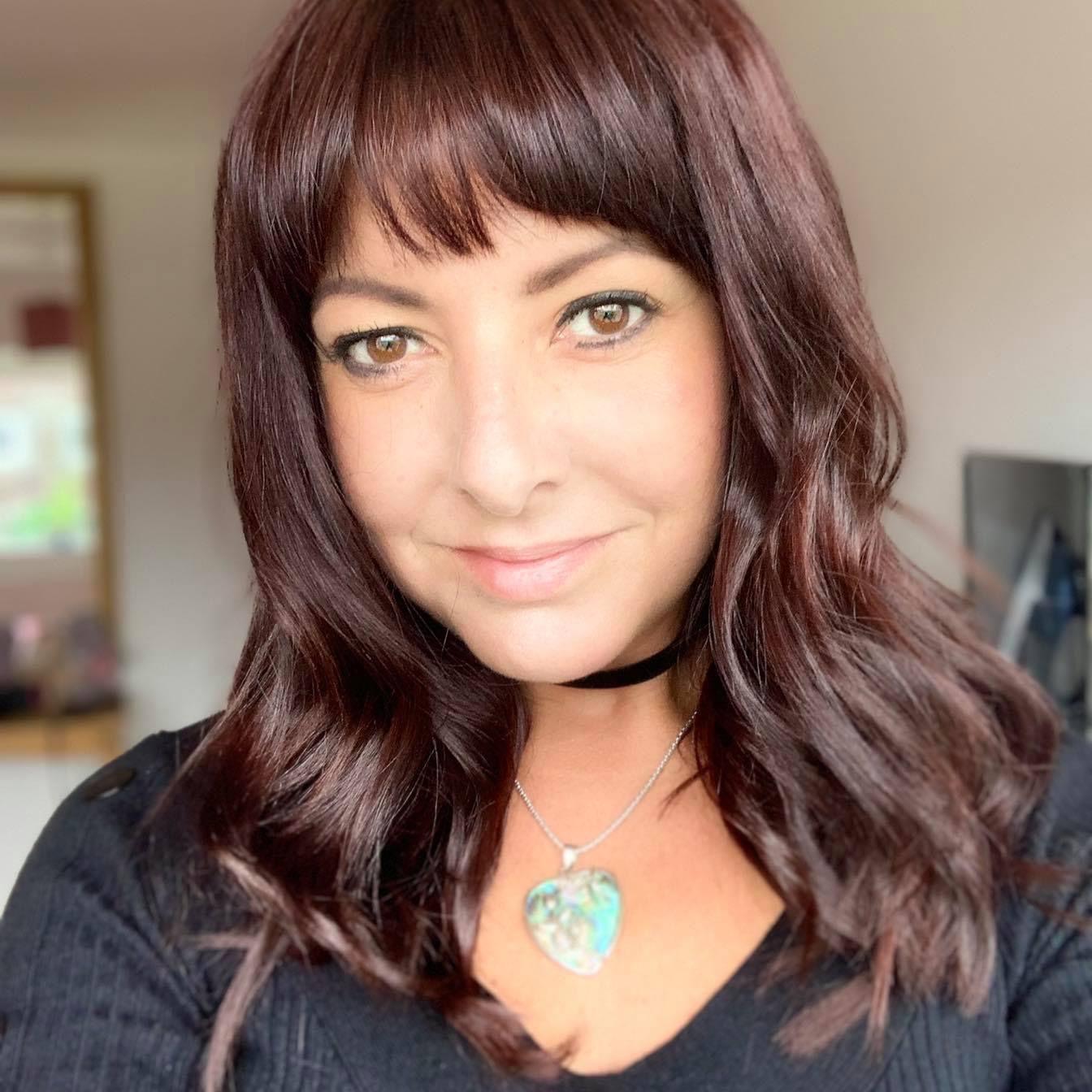
Director of International Development, The Legacy Project, RoundTable Global www.awarenessties.us/tanith-harding
Tanith is leading change management through commitment to the RoundTable Global Four Global Goals of: Educational Reform, Environmental Rejuvenation, Empowerment for All & Creativity. She delivers innovative and transformational leadership and development programmes in over 30 different countries and is also lead on the international development of philanthropic programmes and projects. This includes working with a growing team of extraordinary Global Change Ambassadors and putting together the Global Youth Awards which celebrate the amazing things our young people are doing to change the world.

Miles to go before we sleep…

